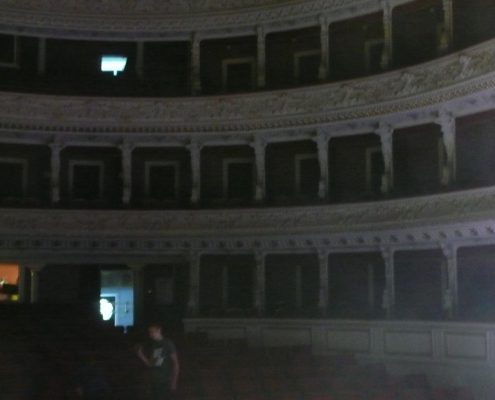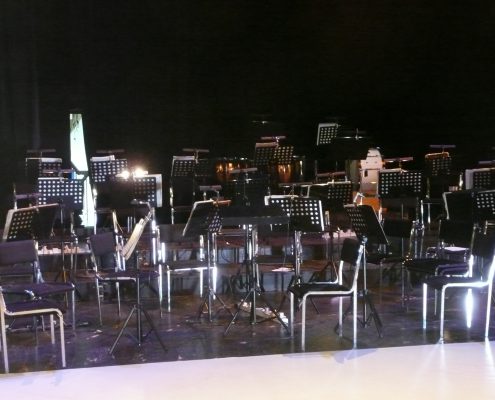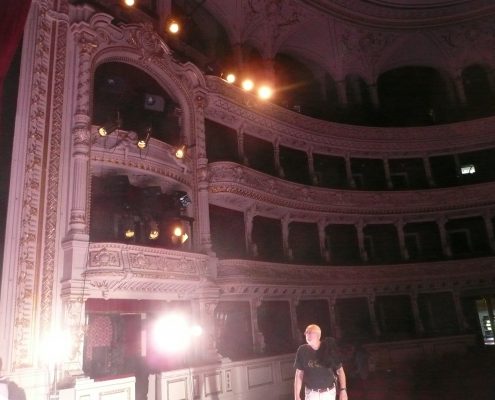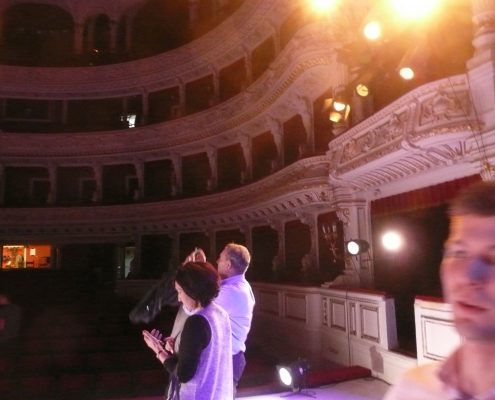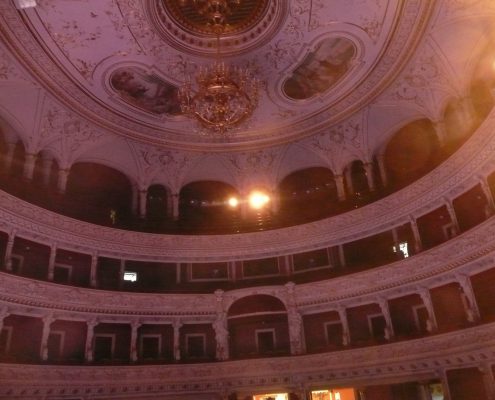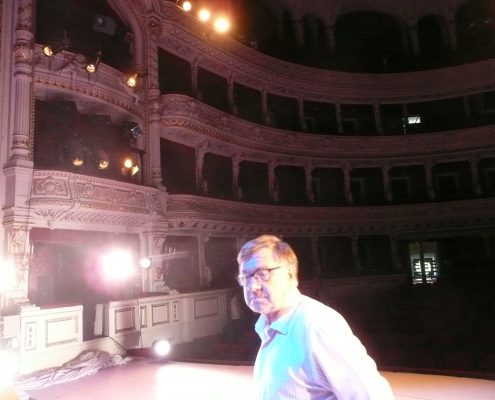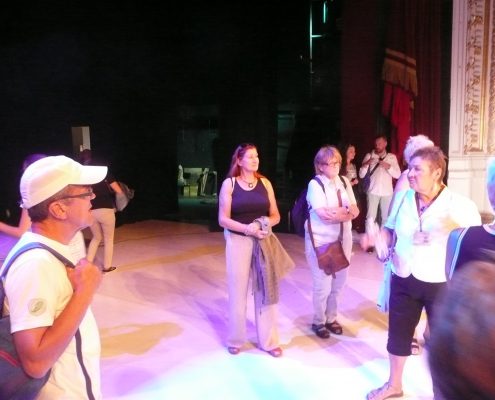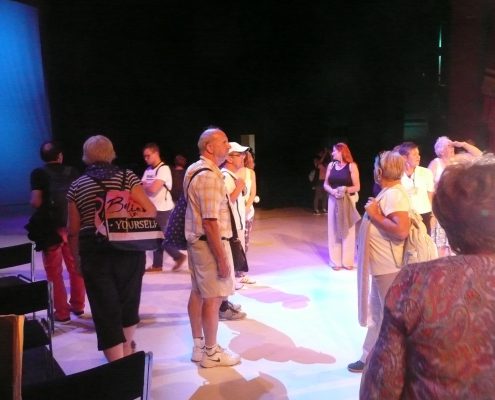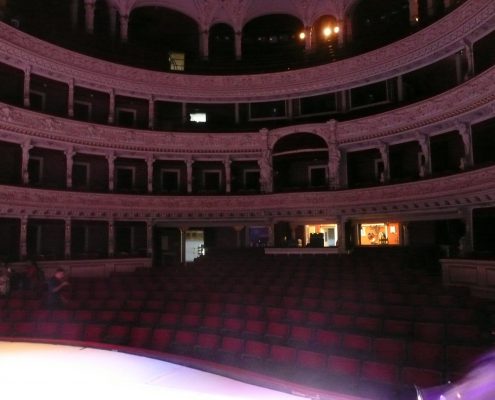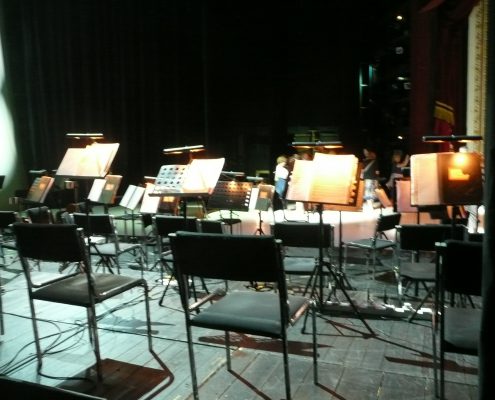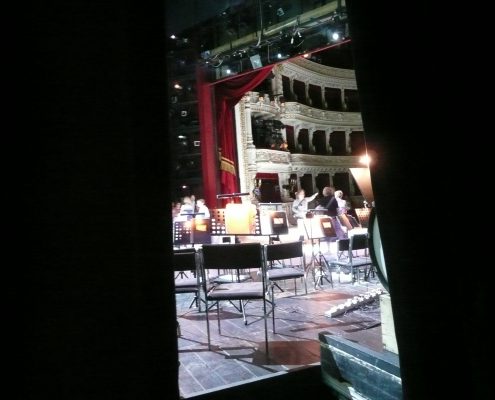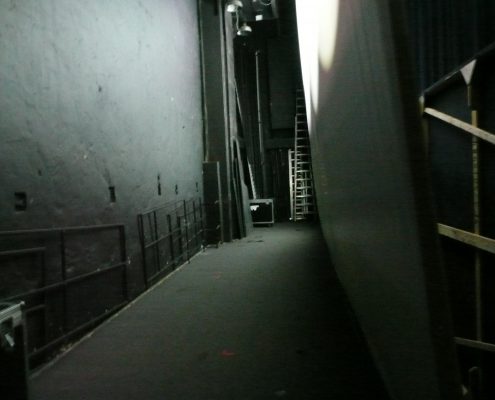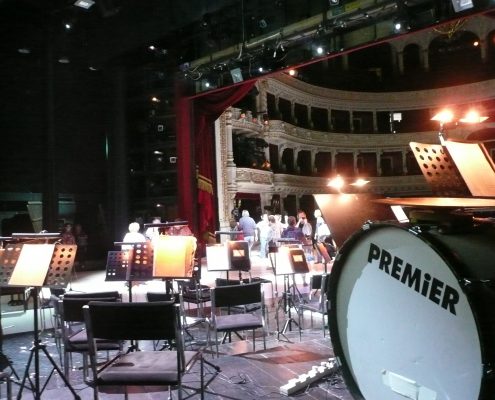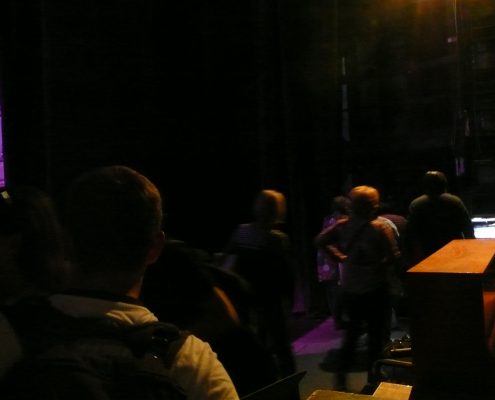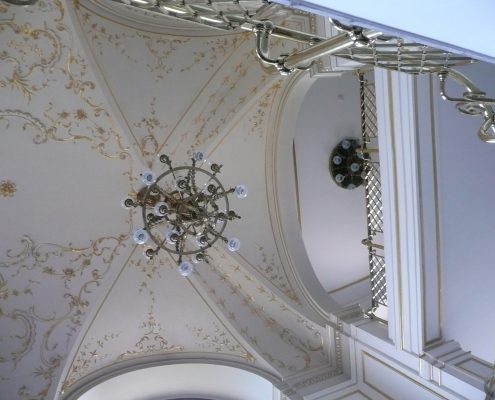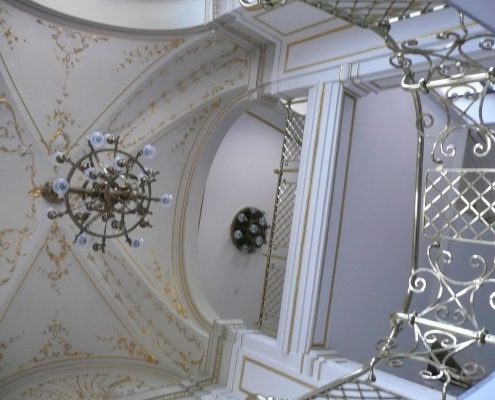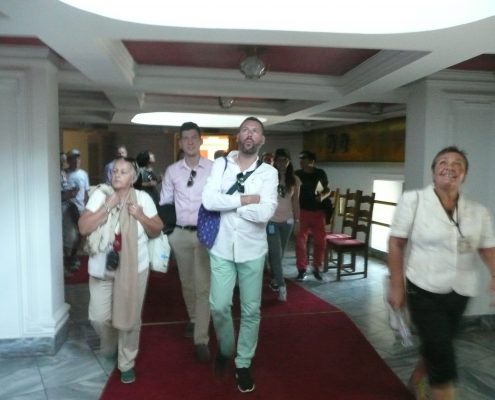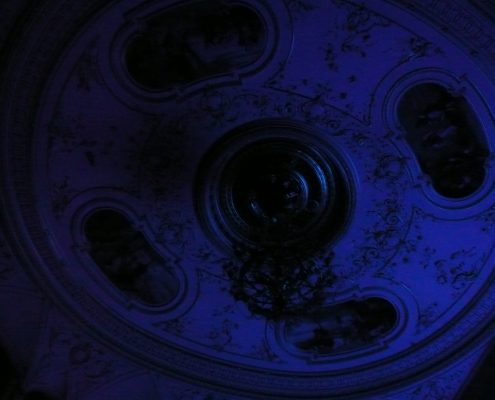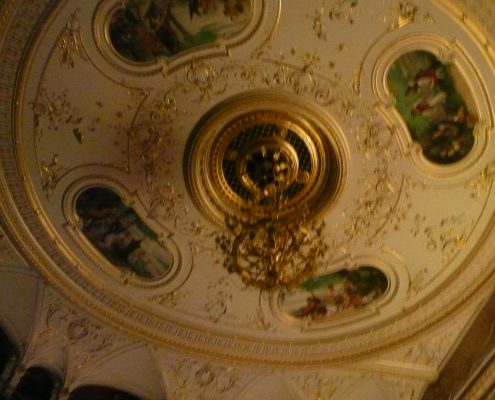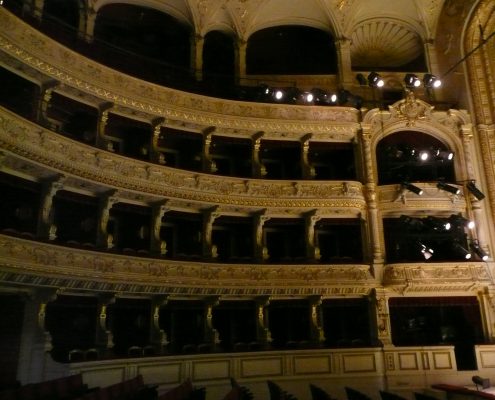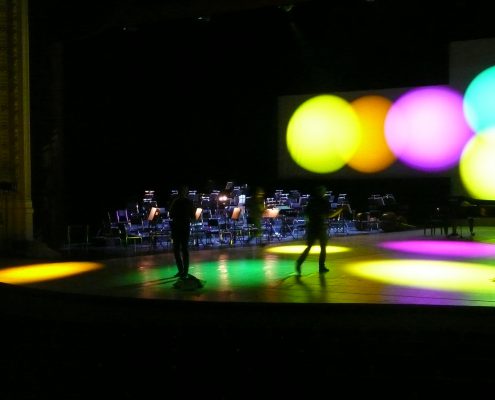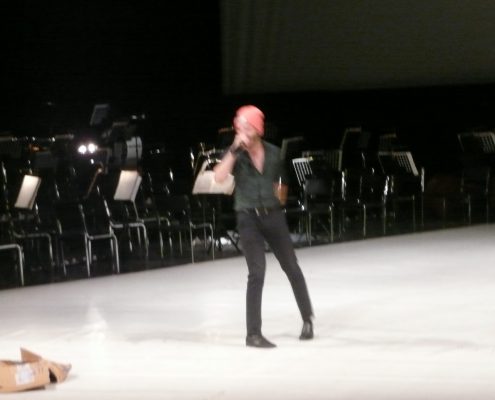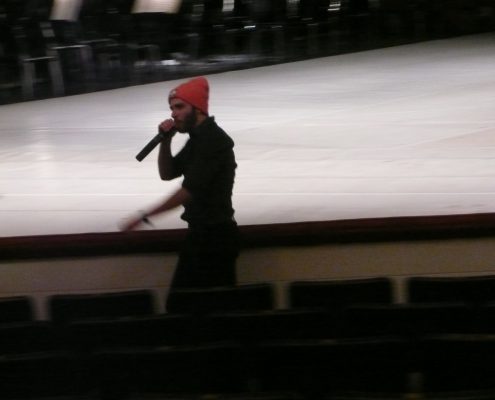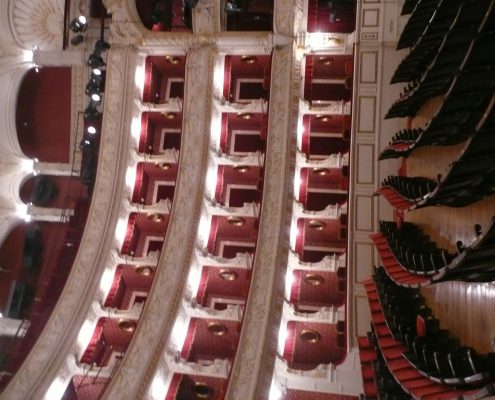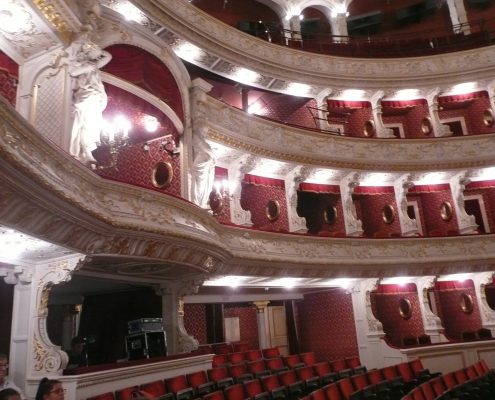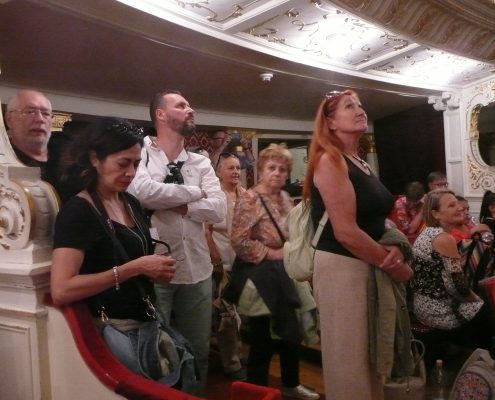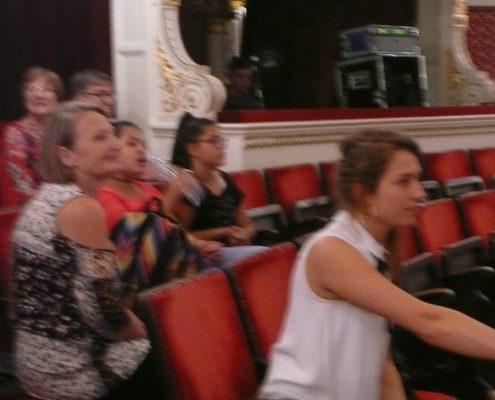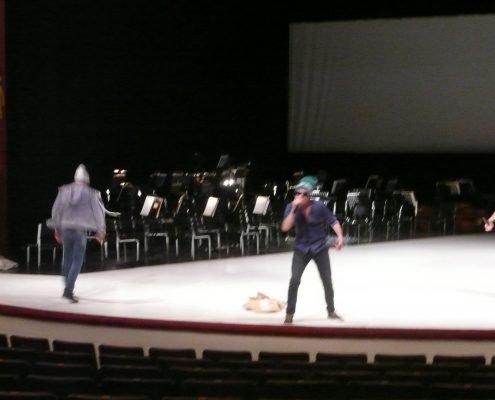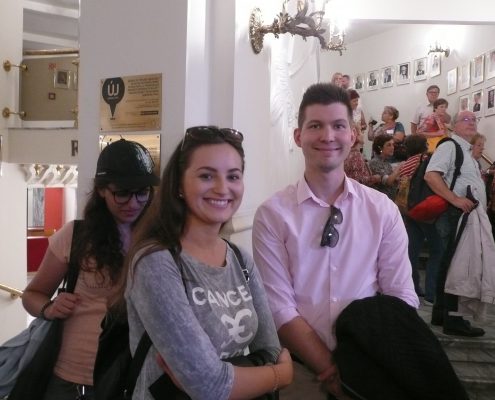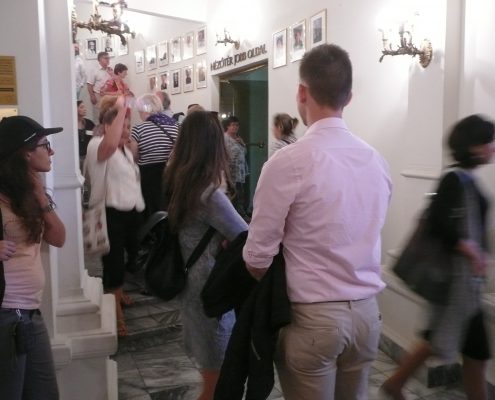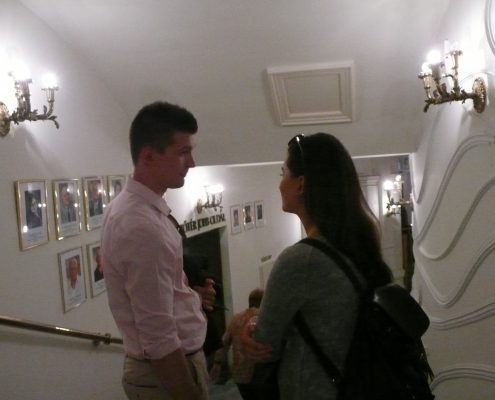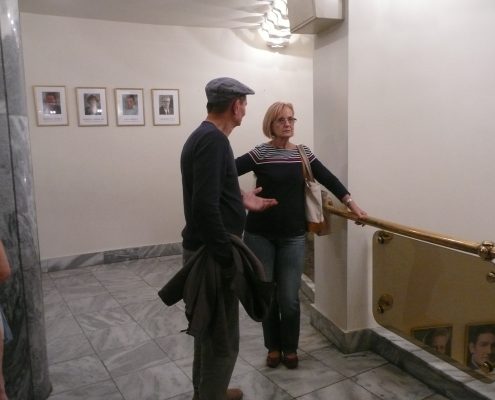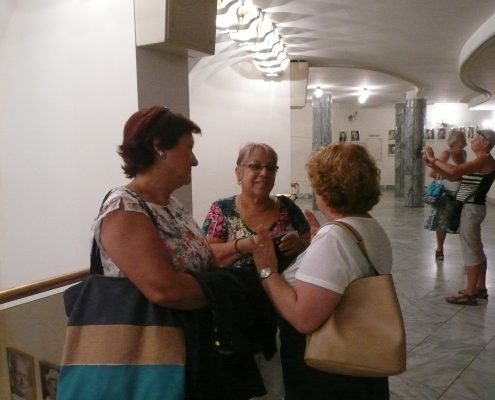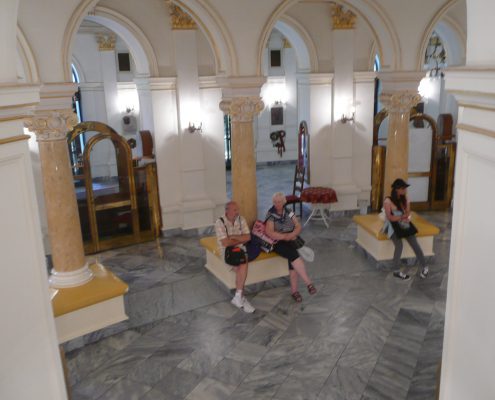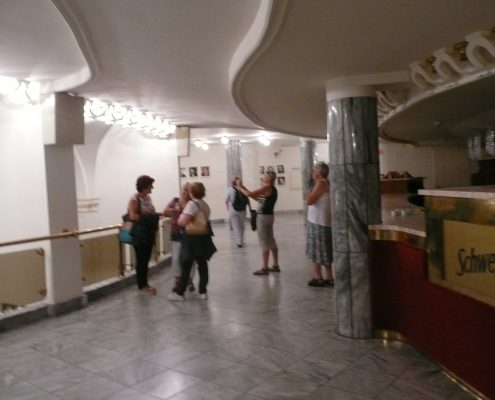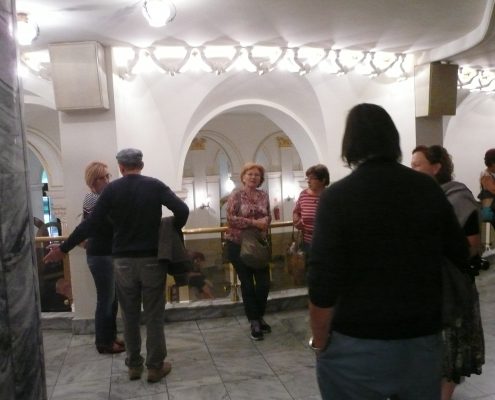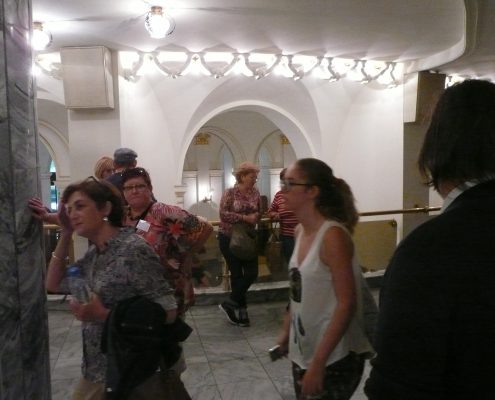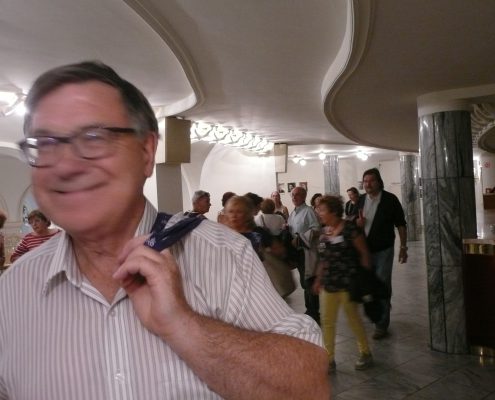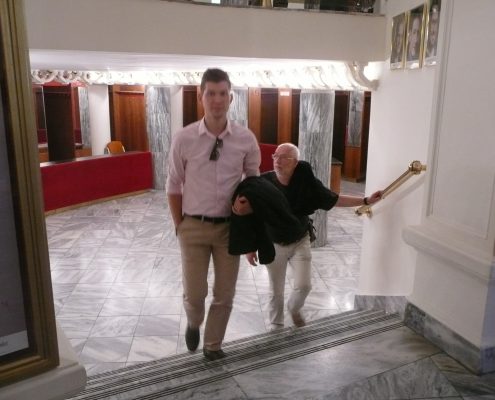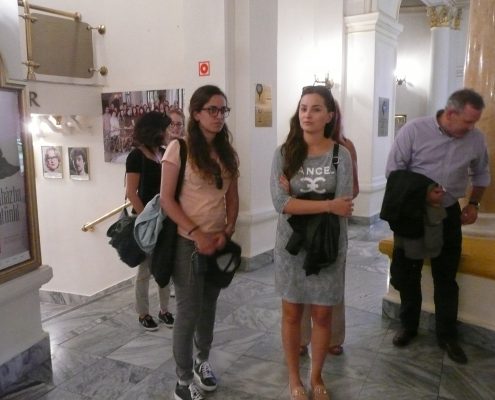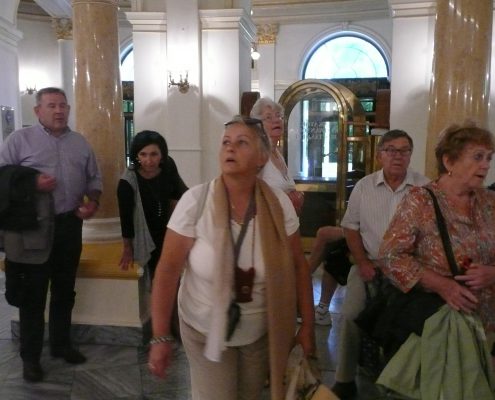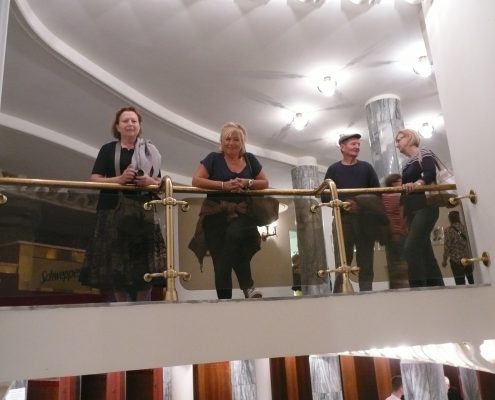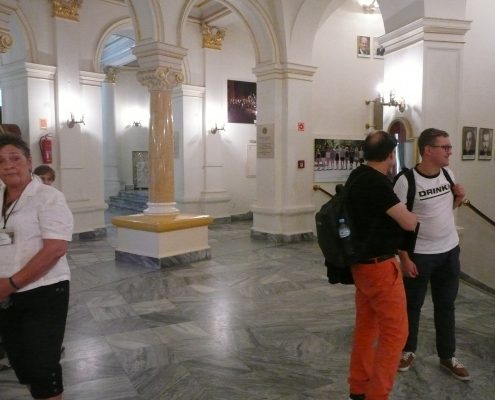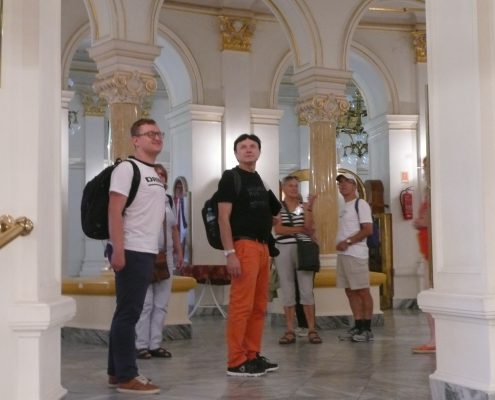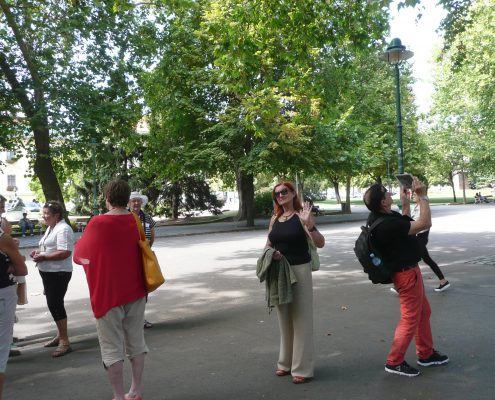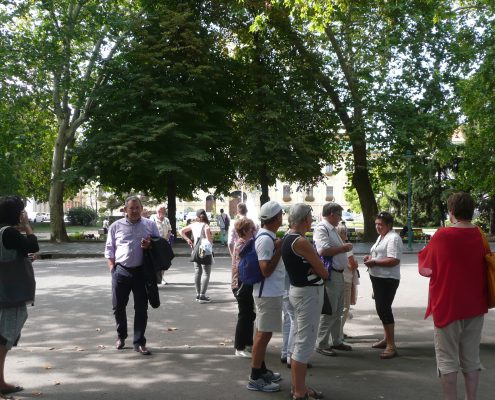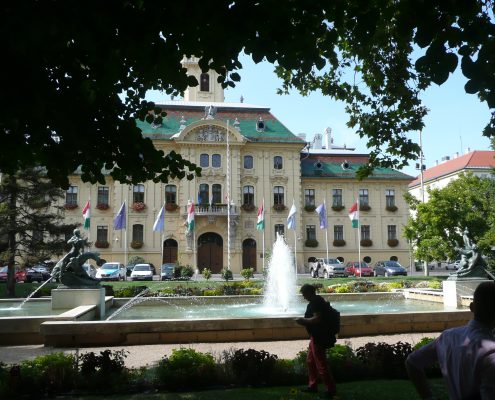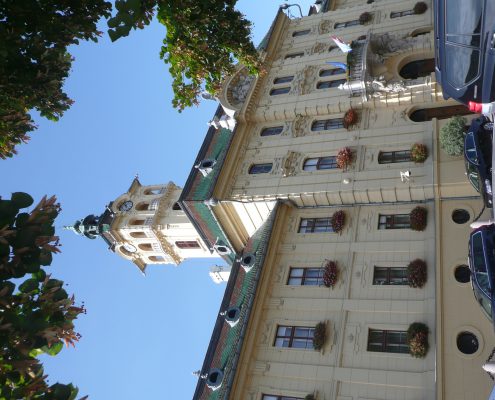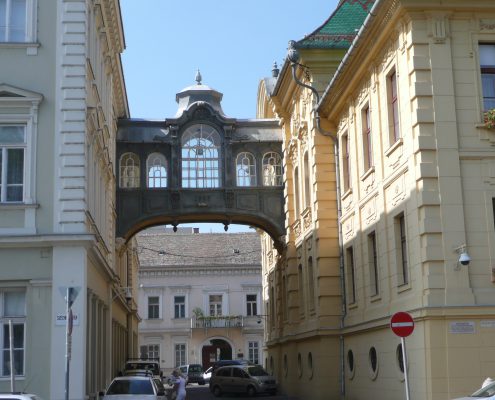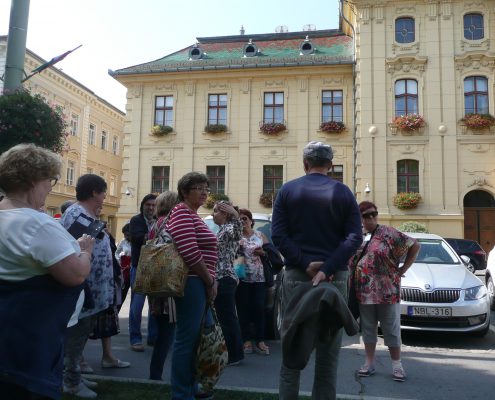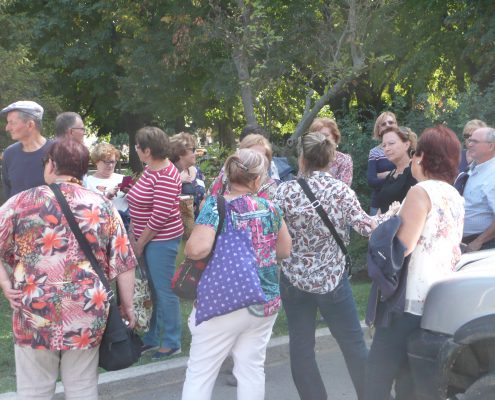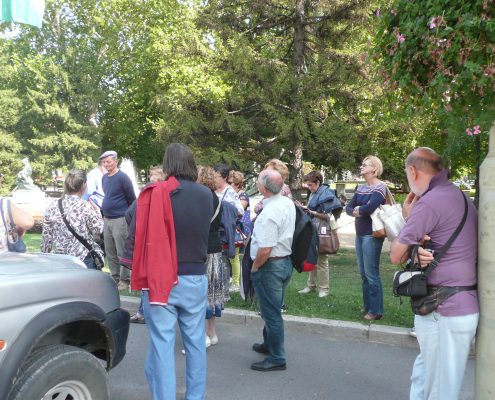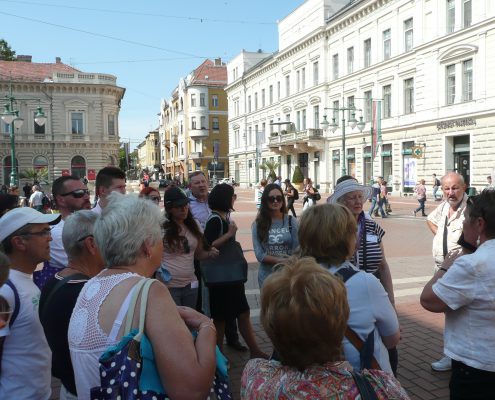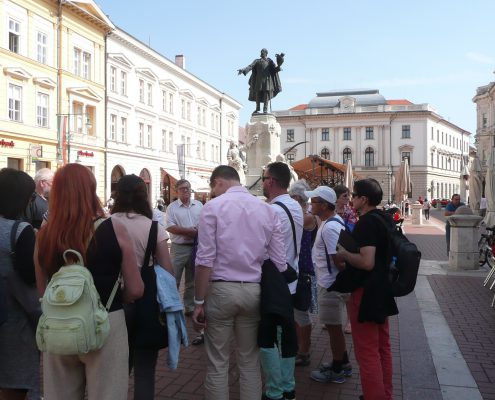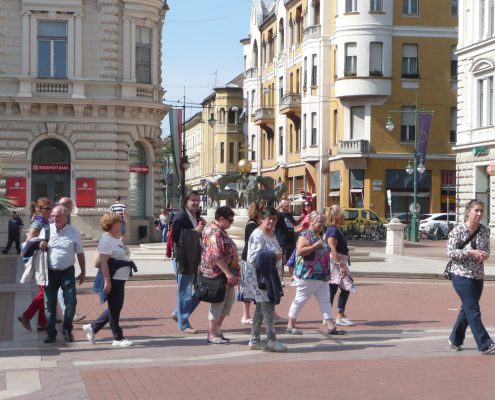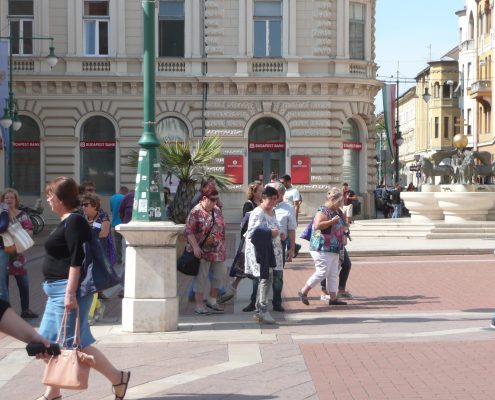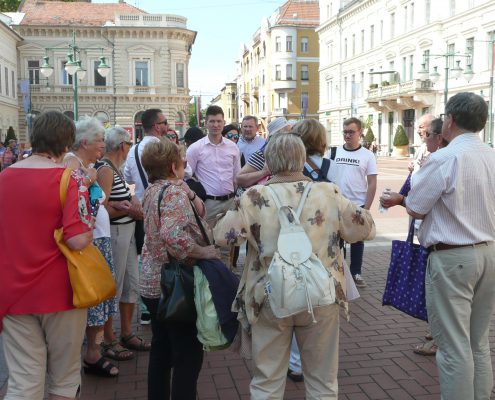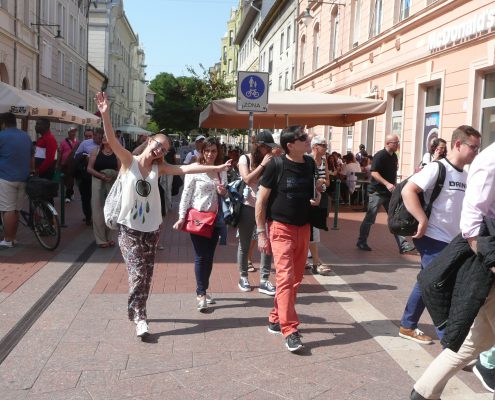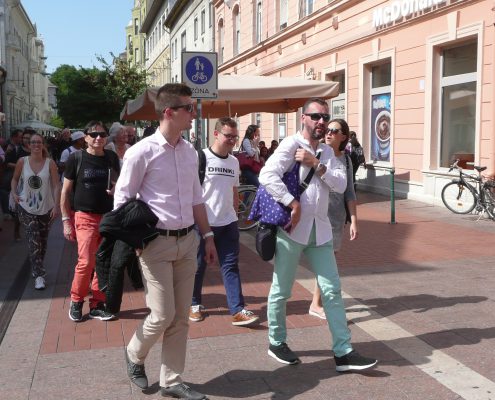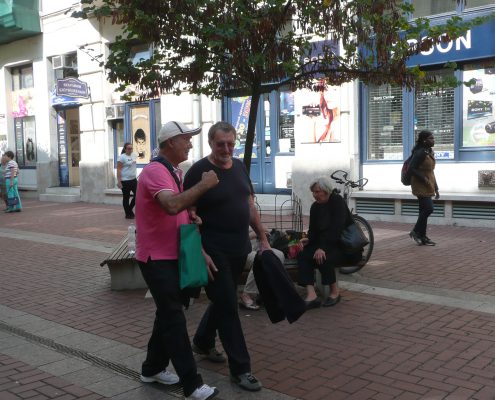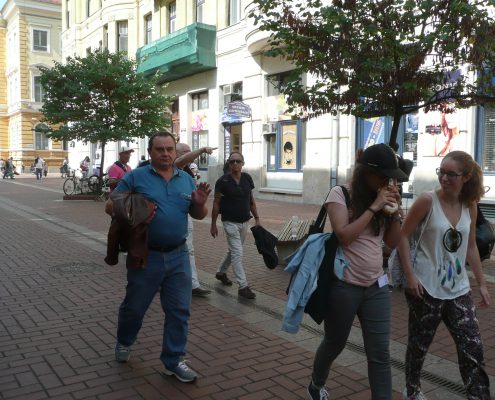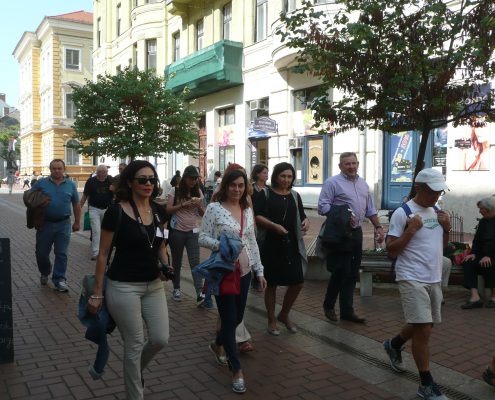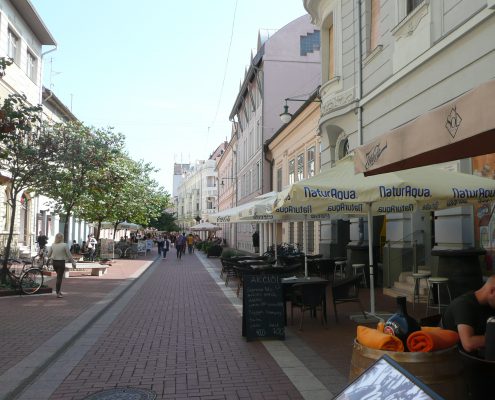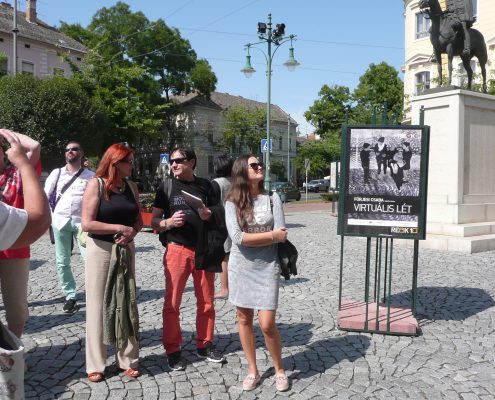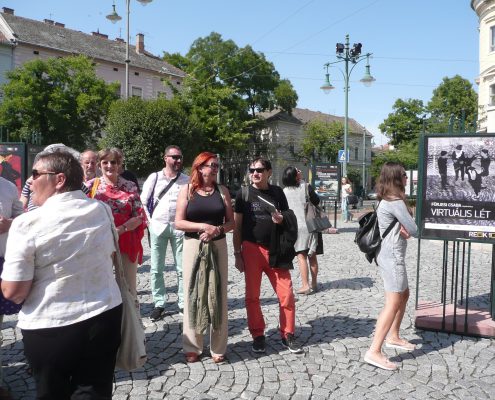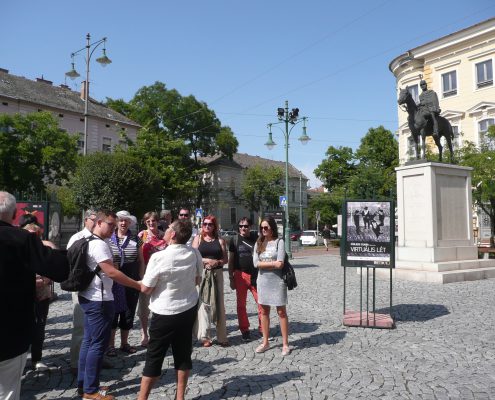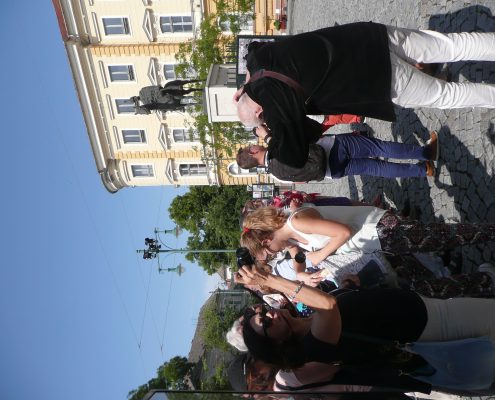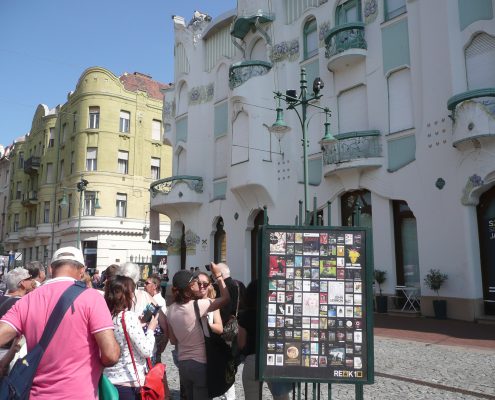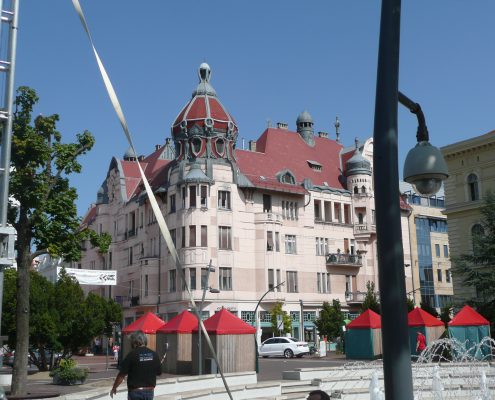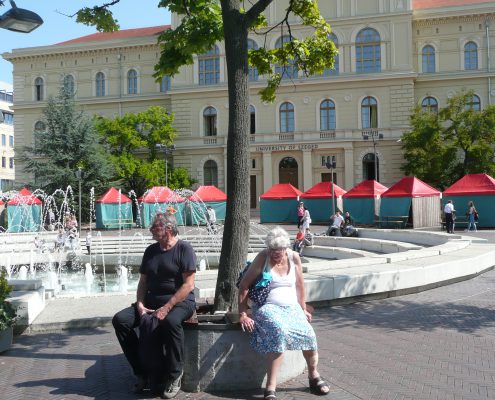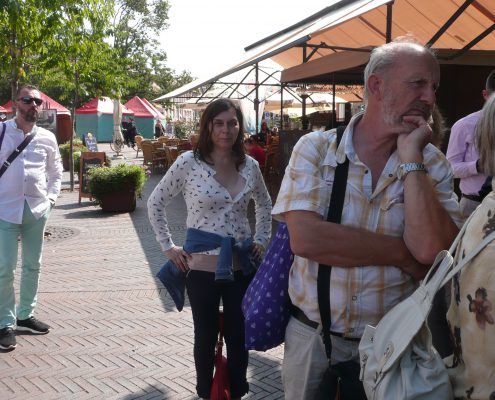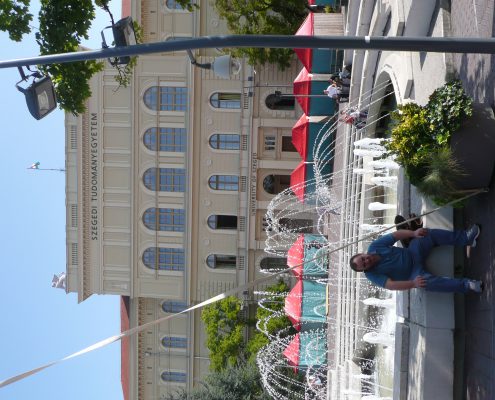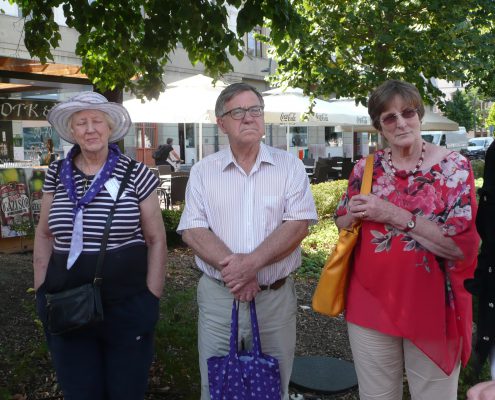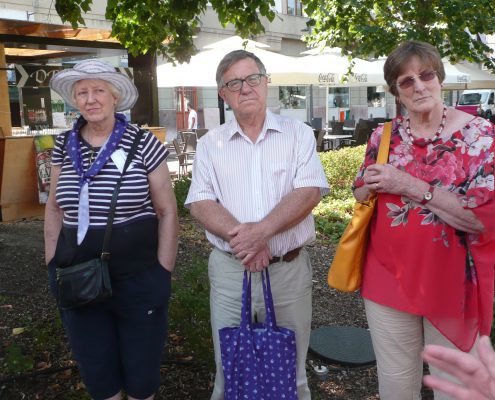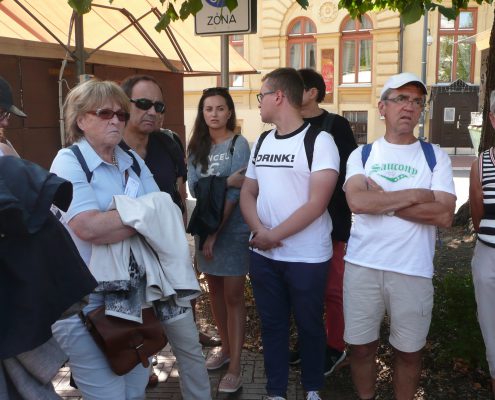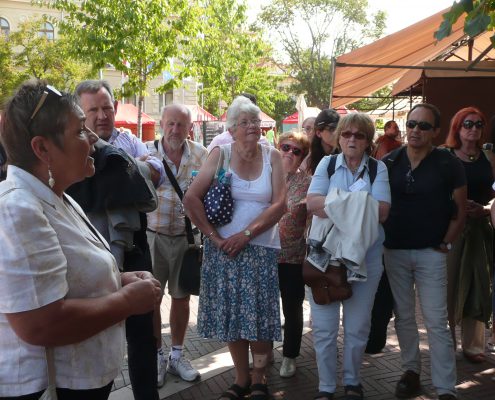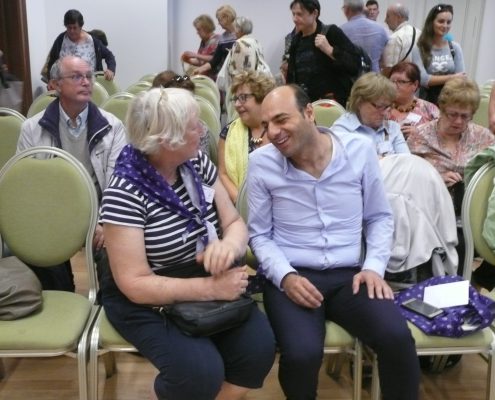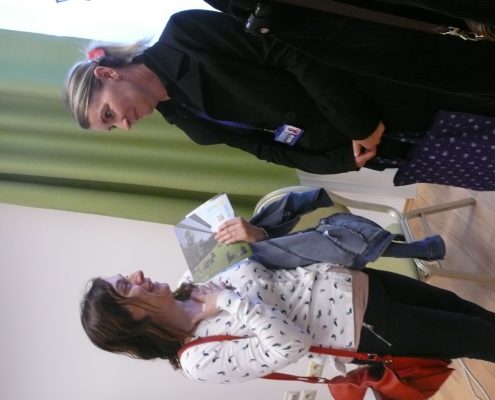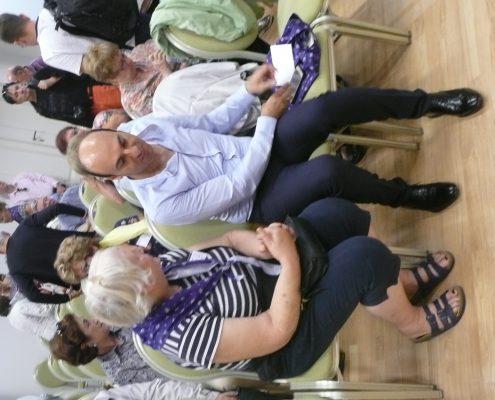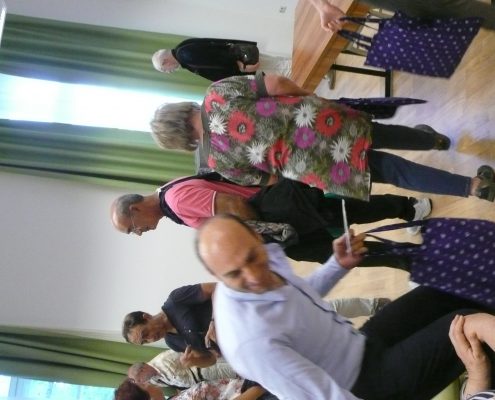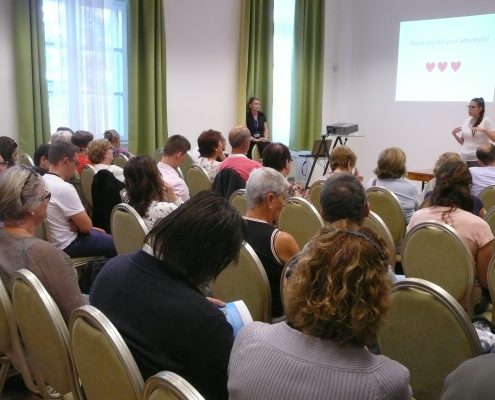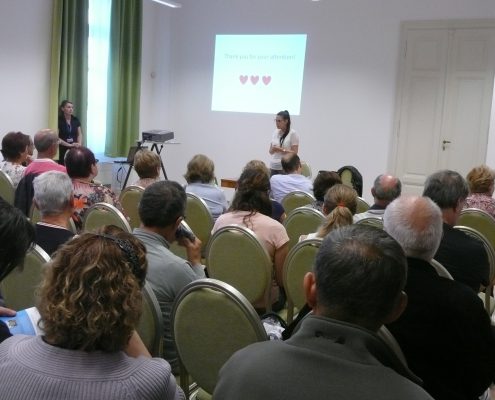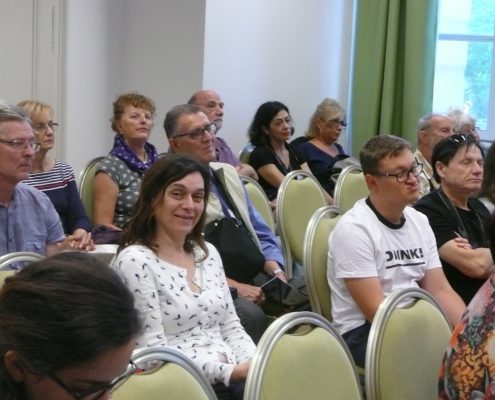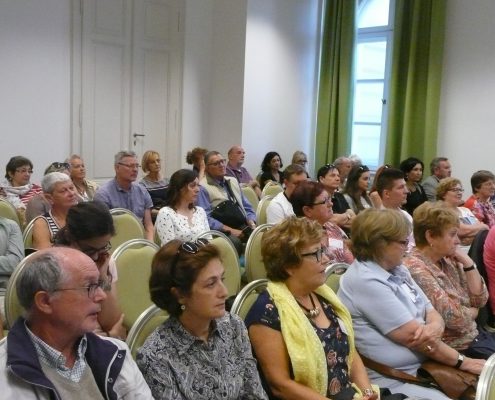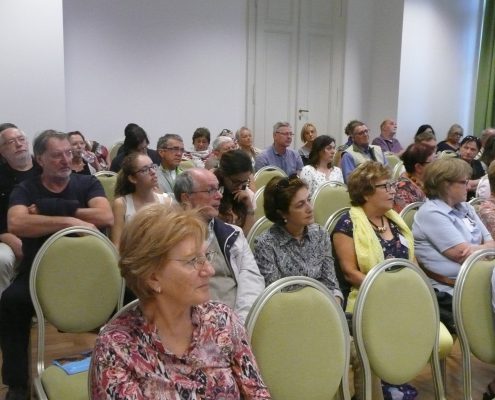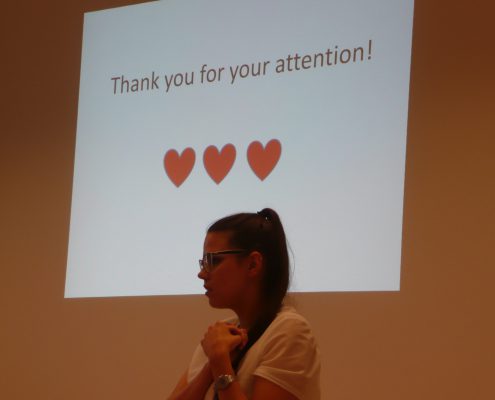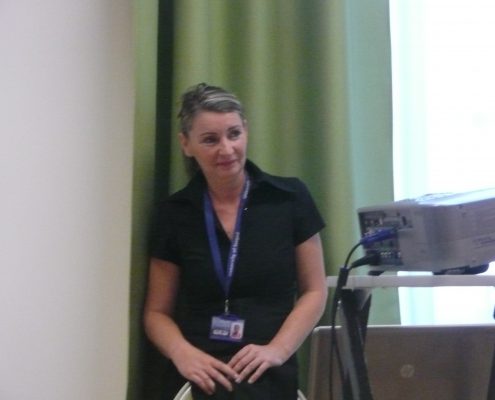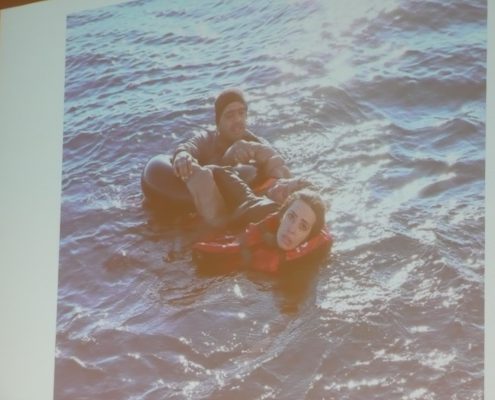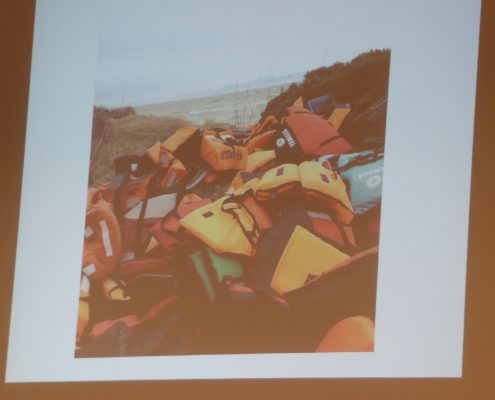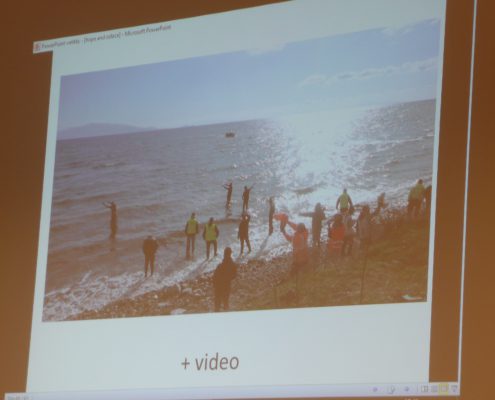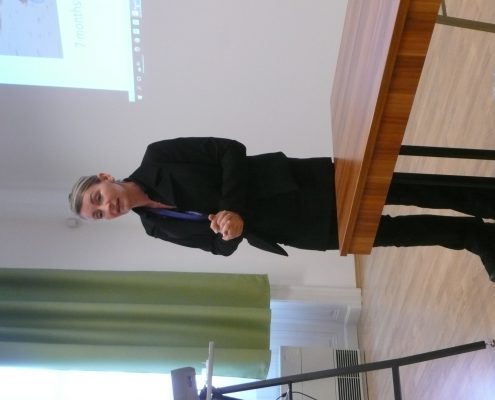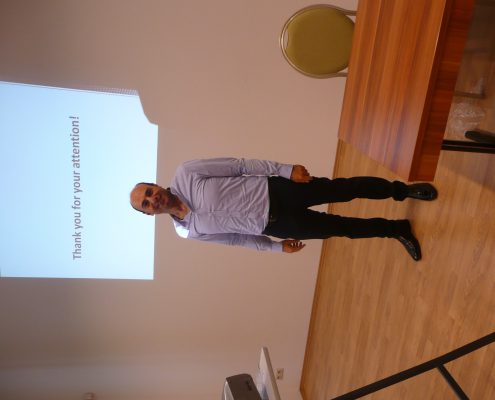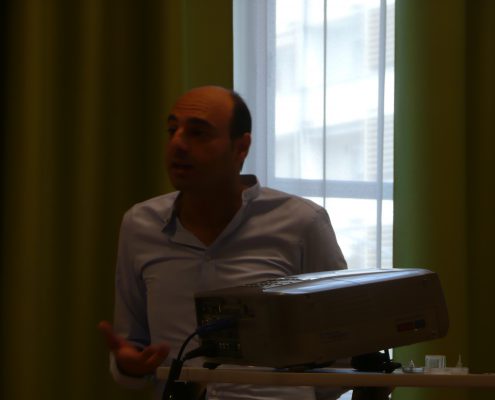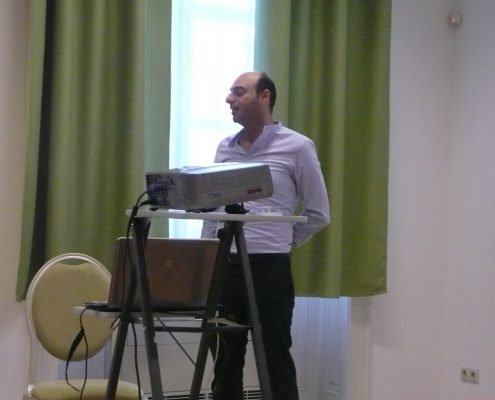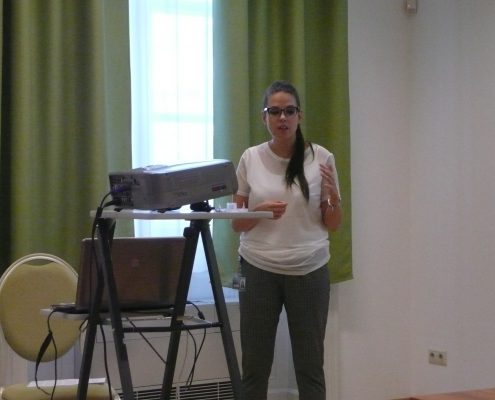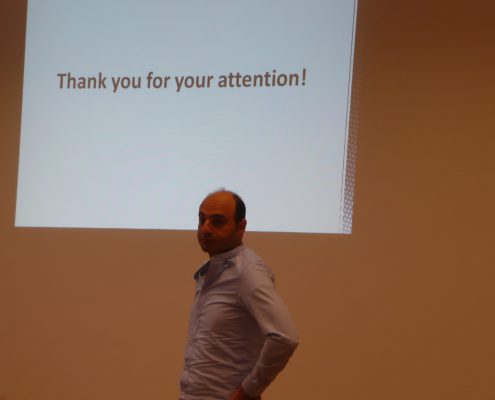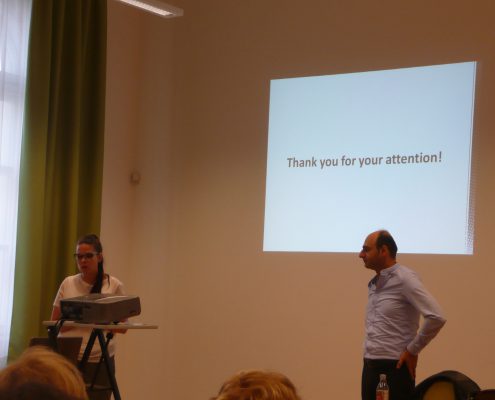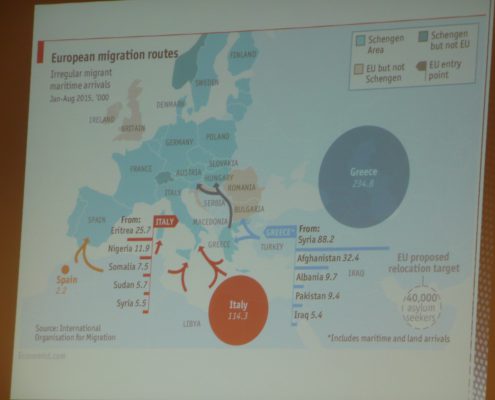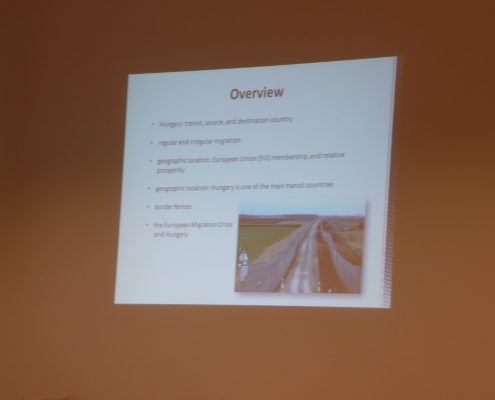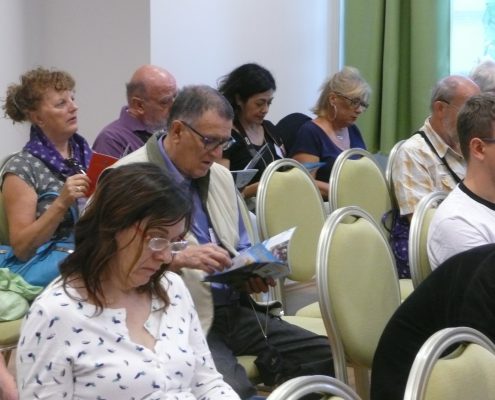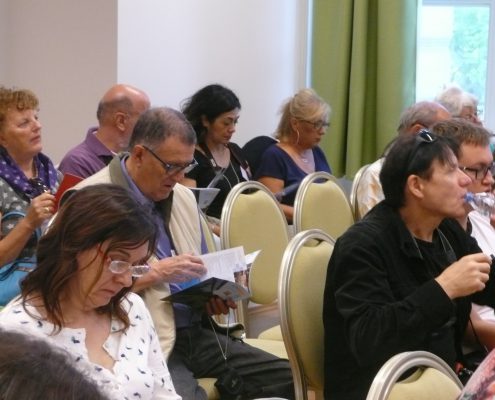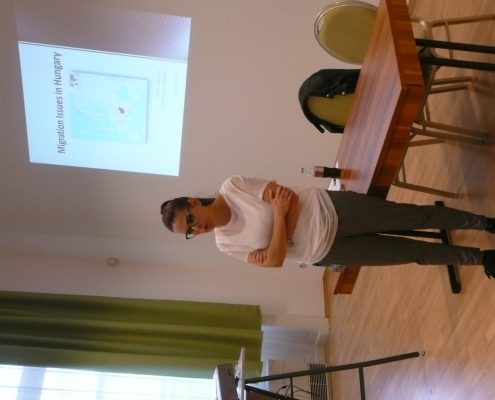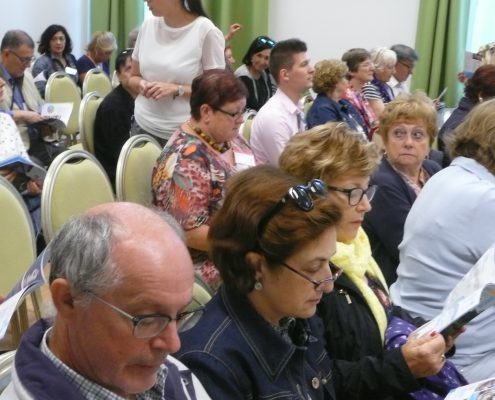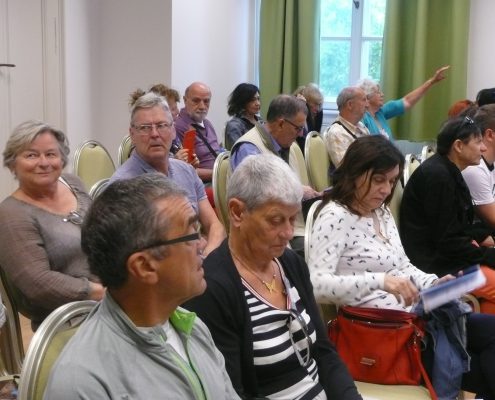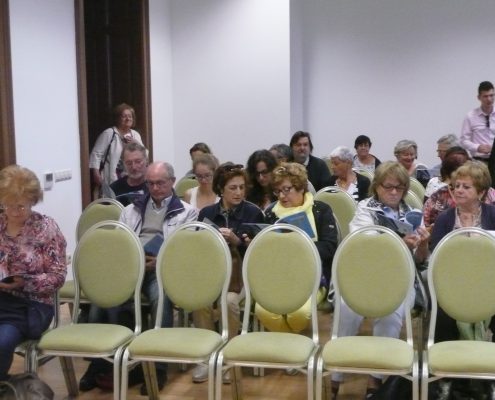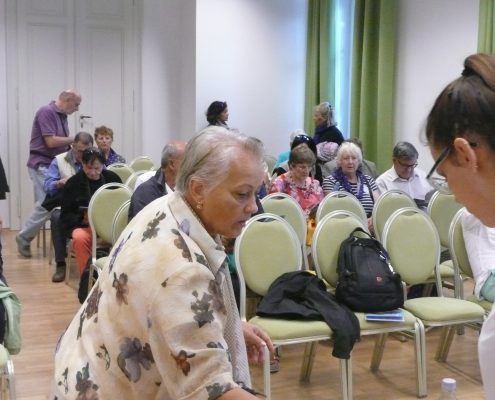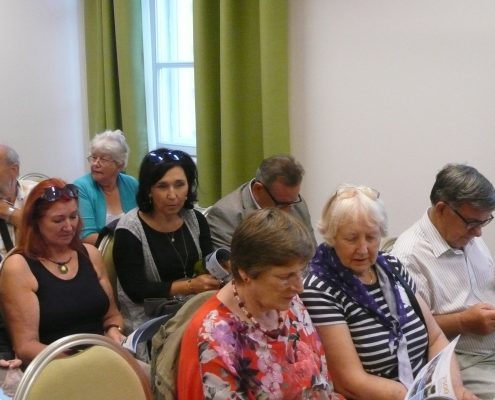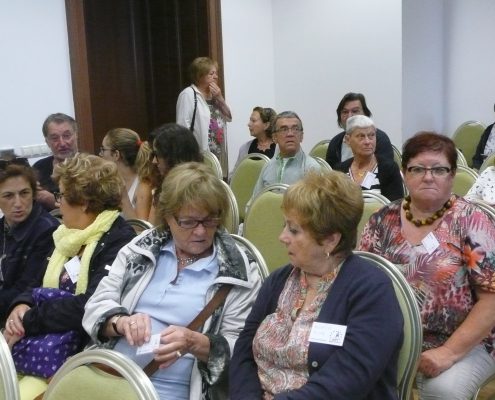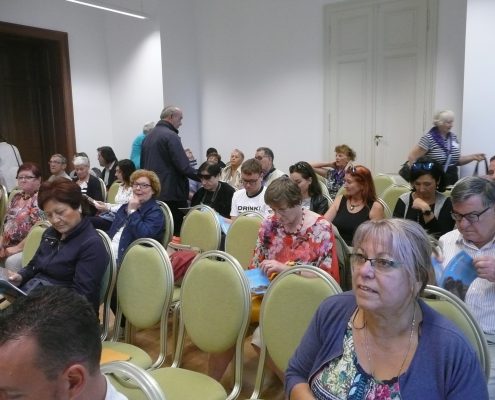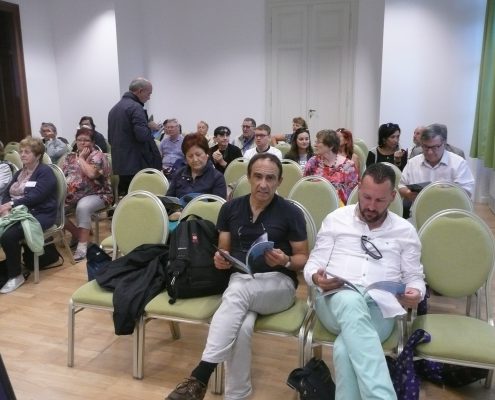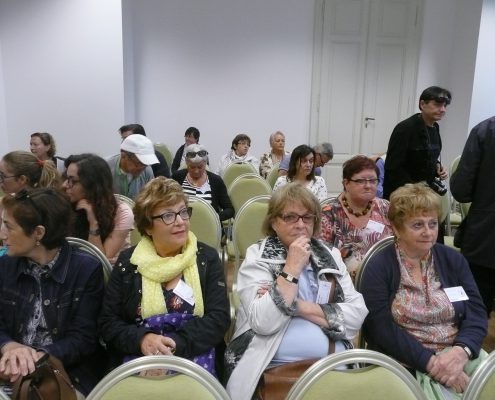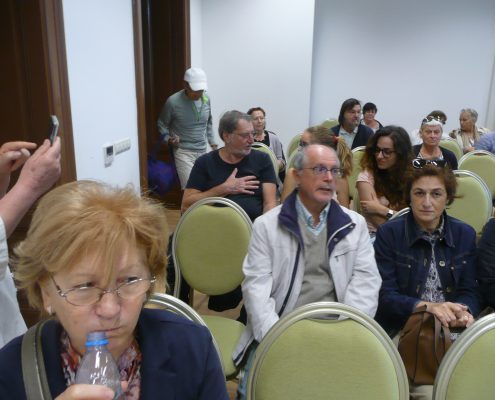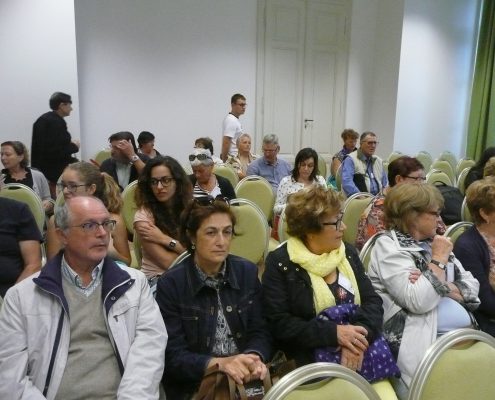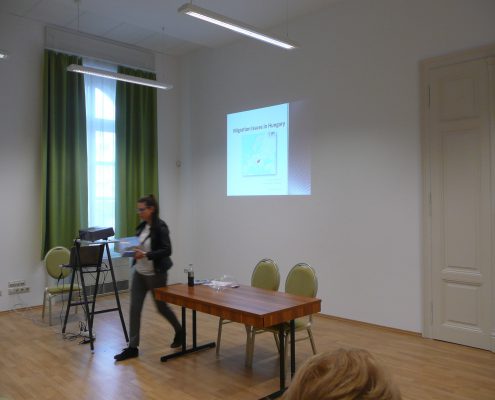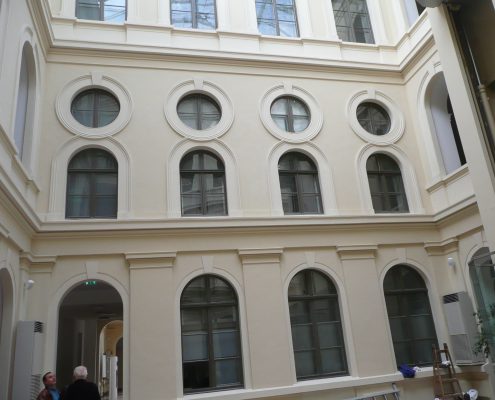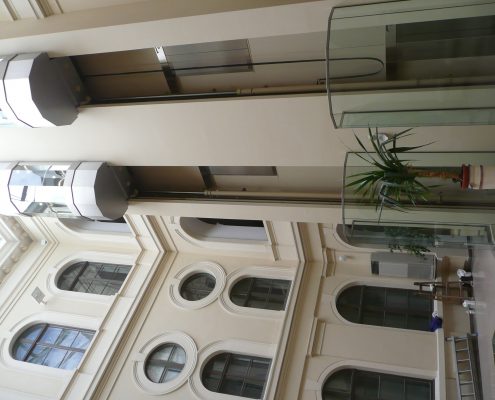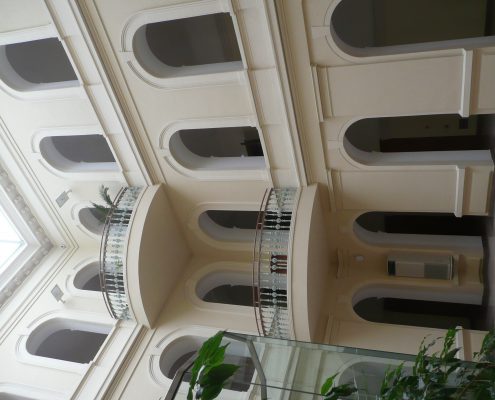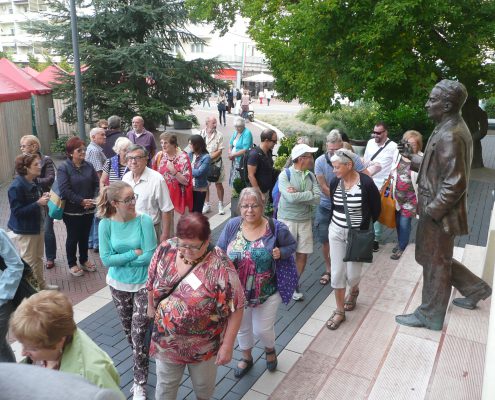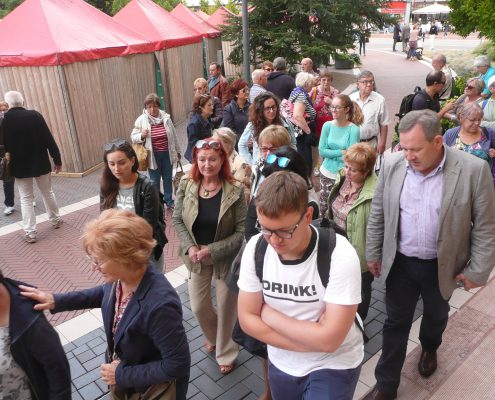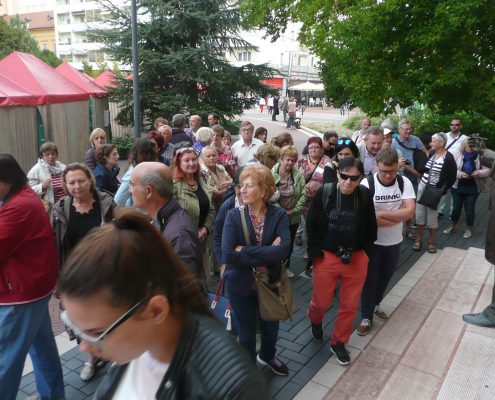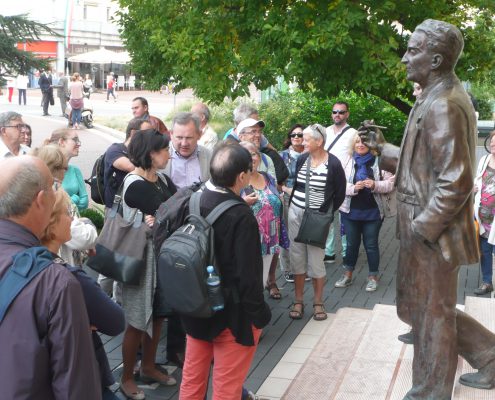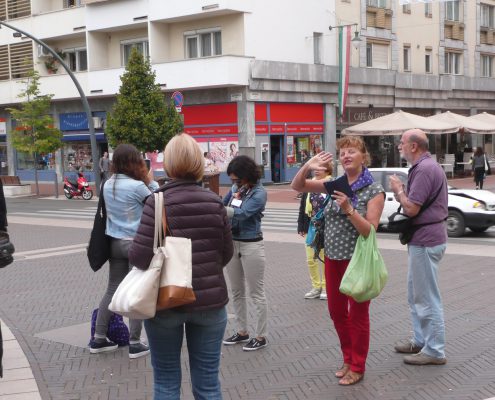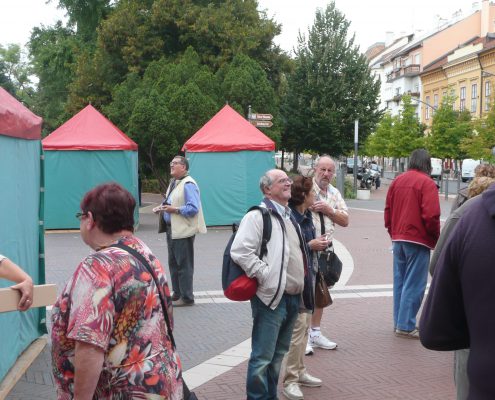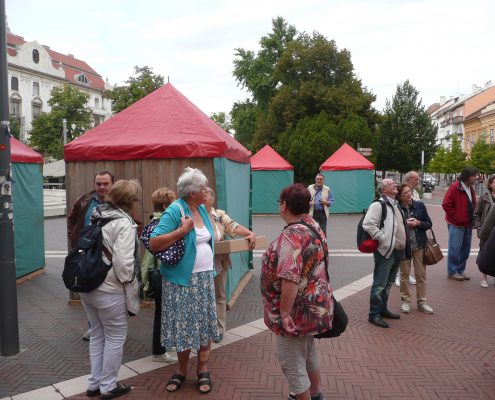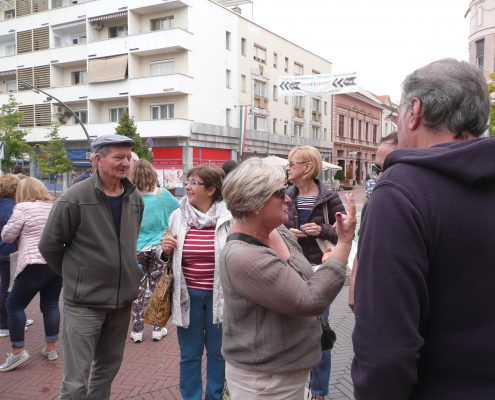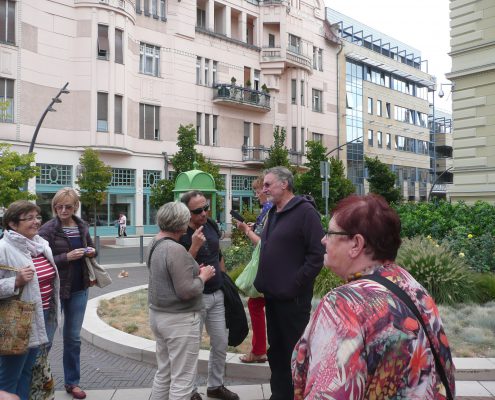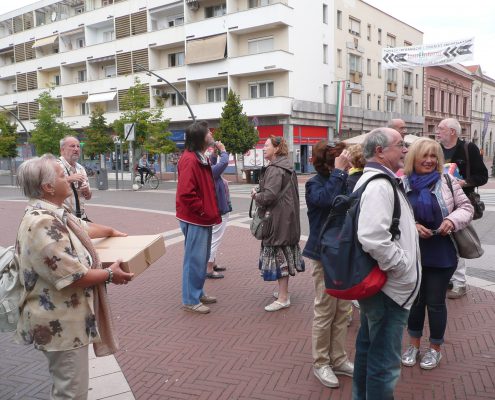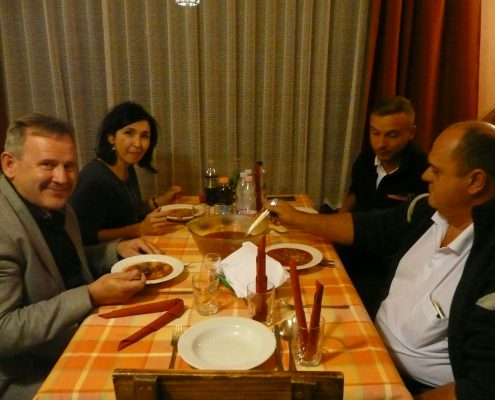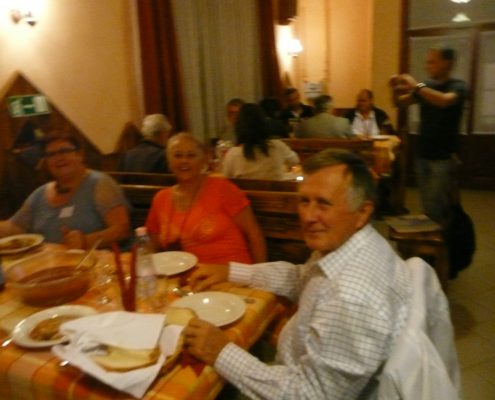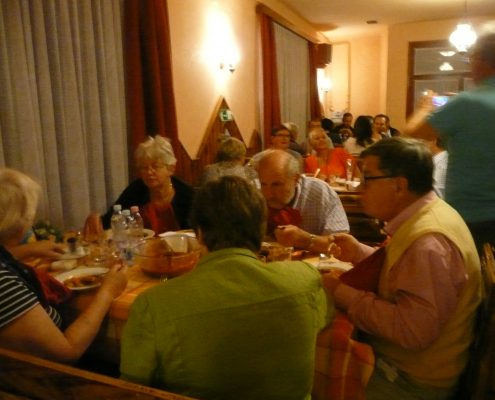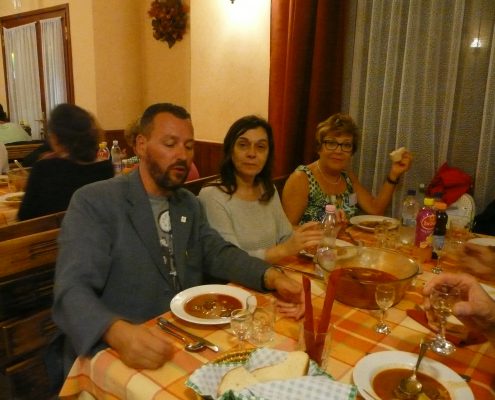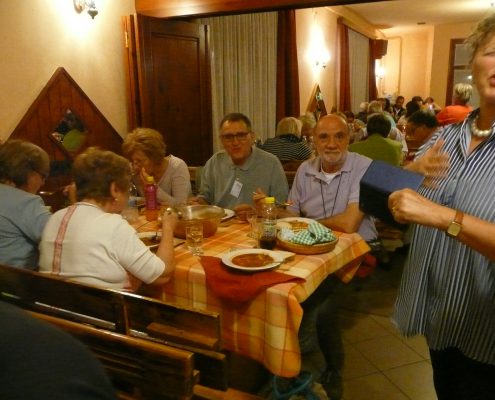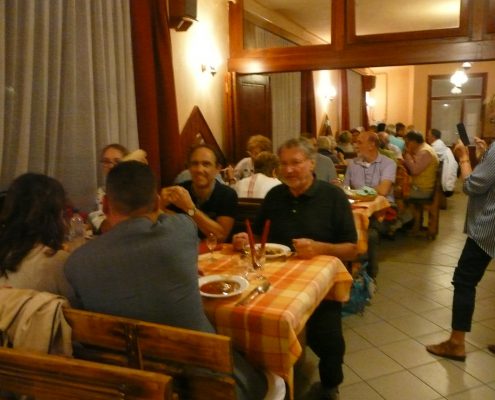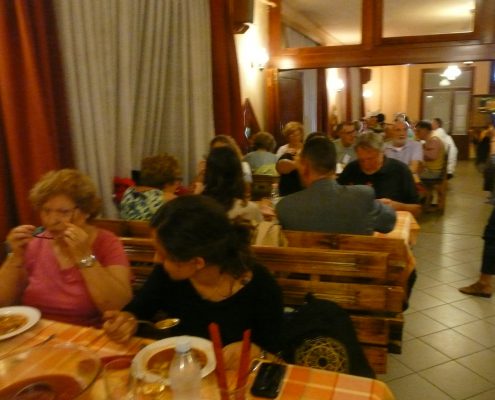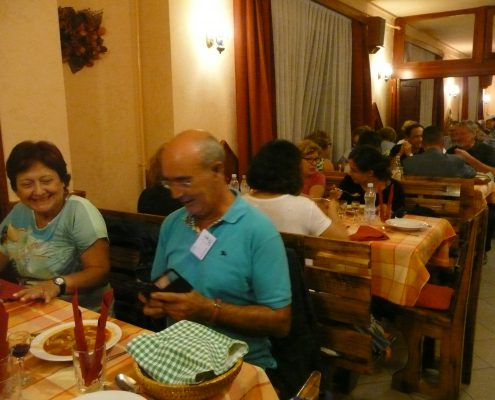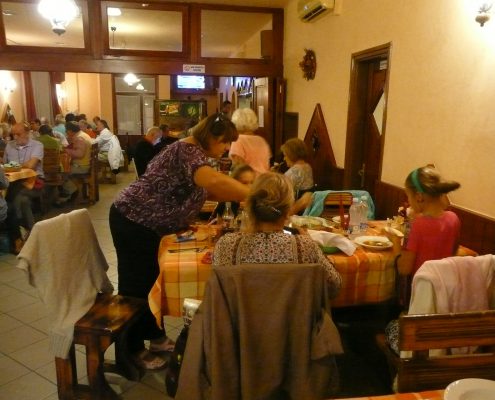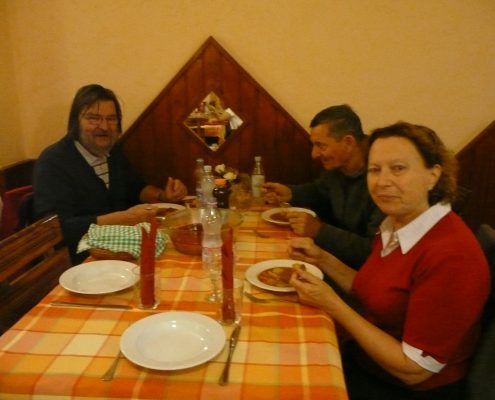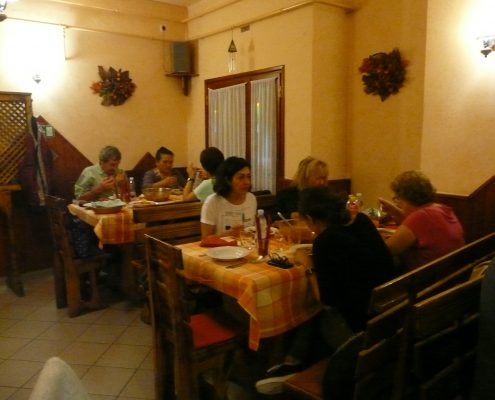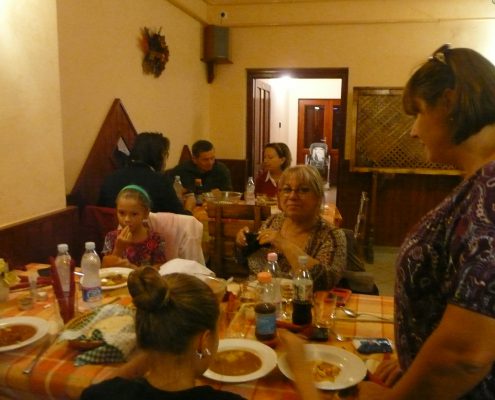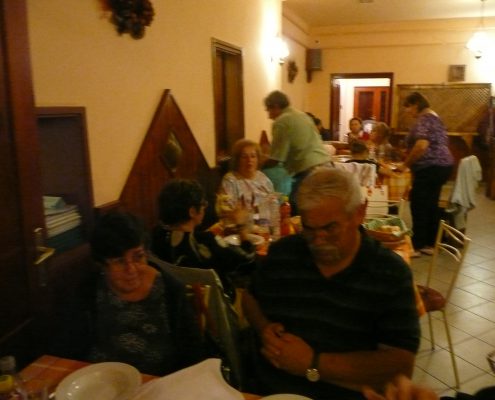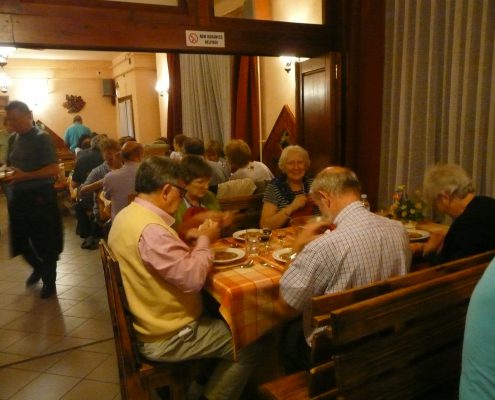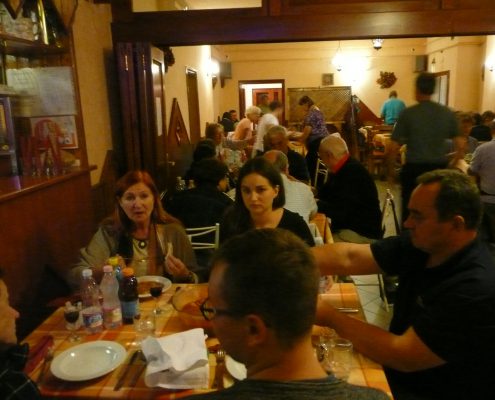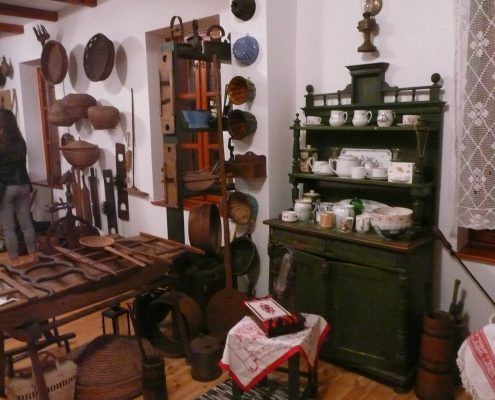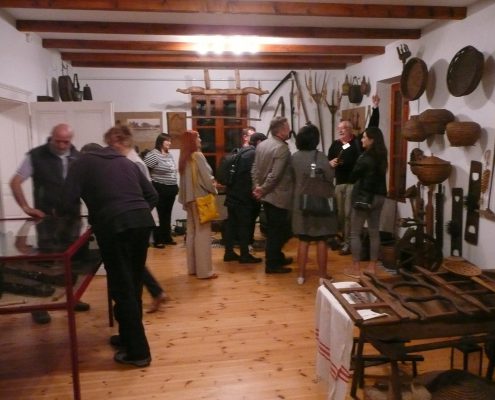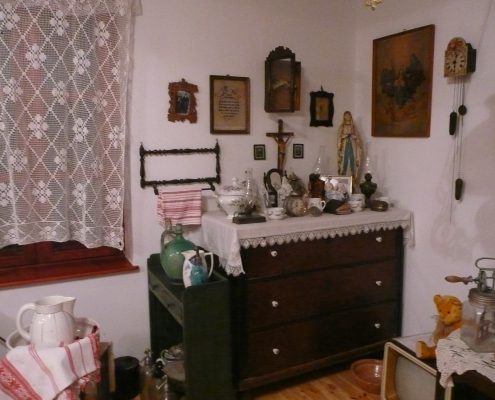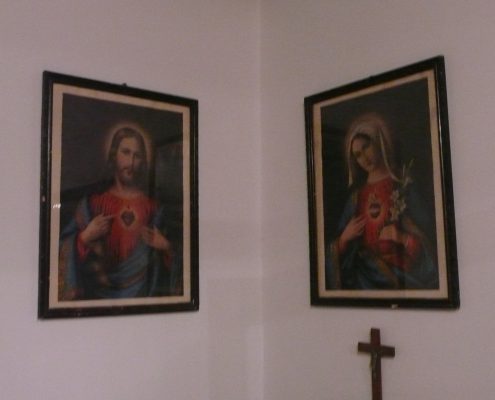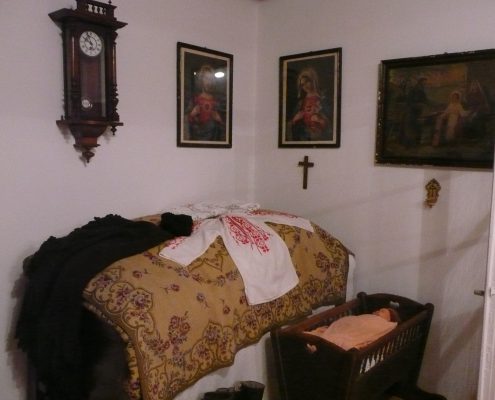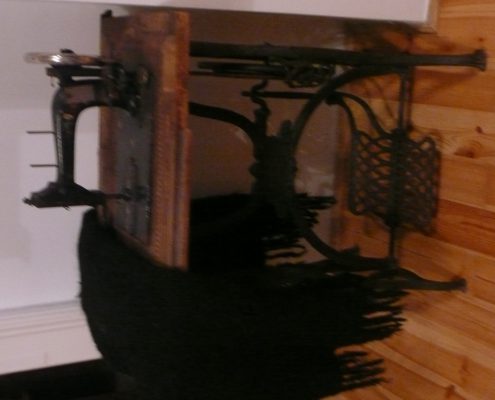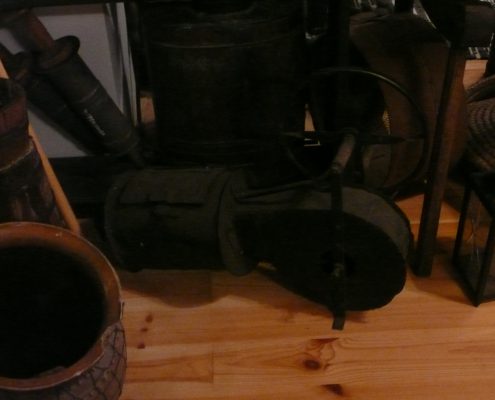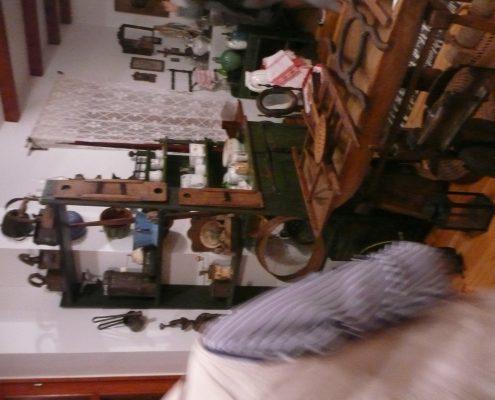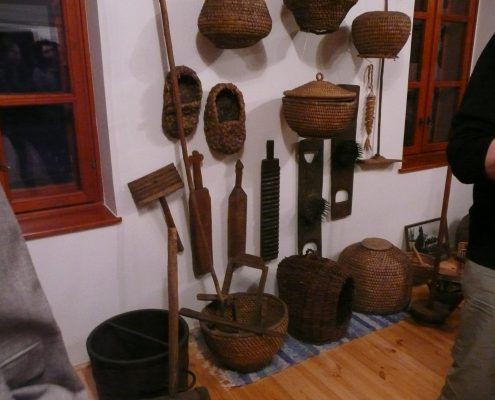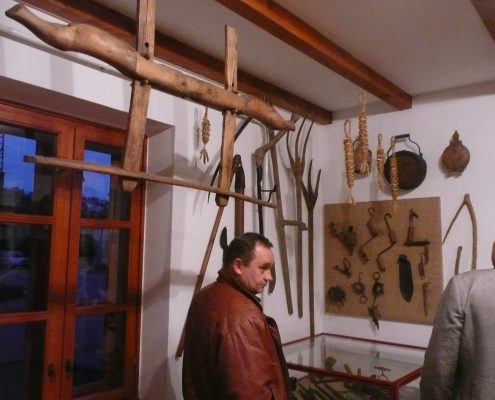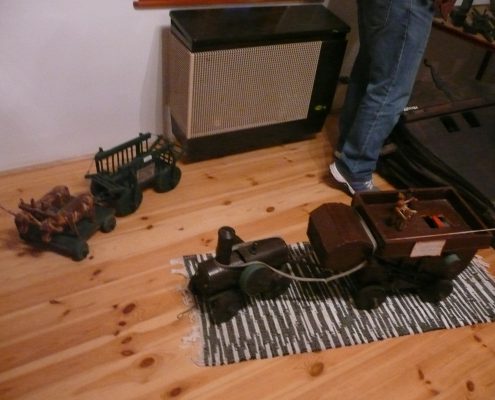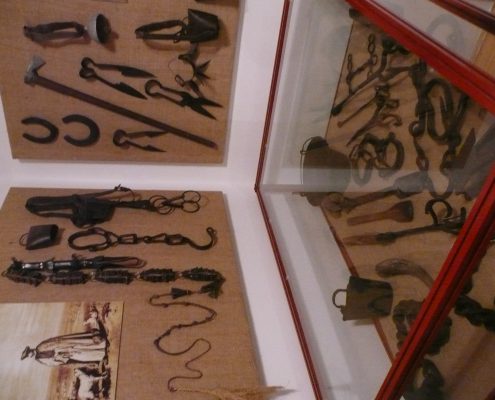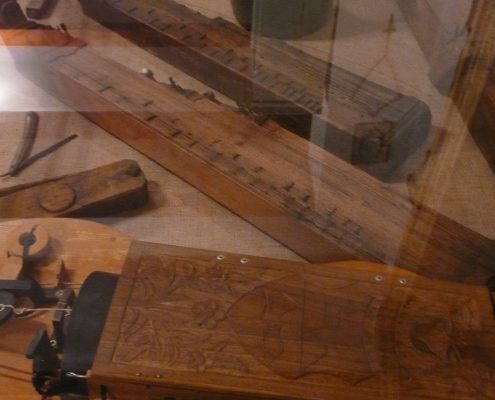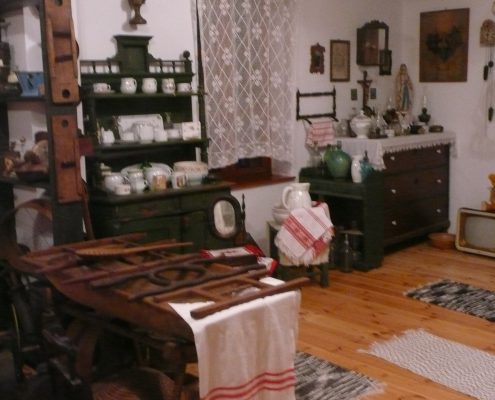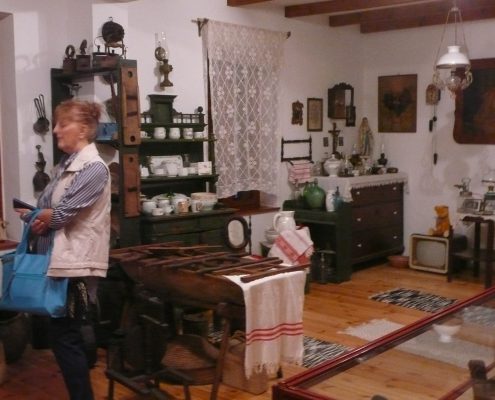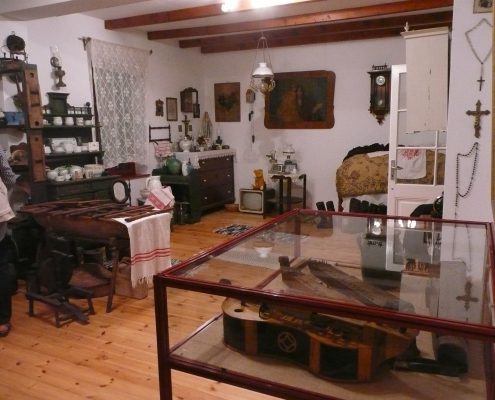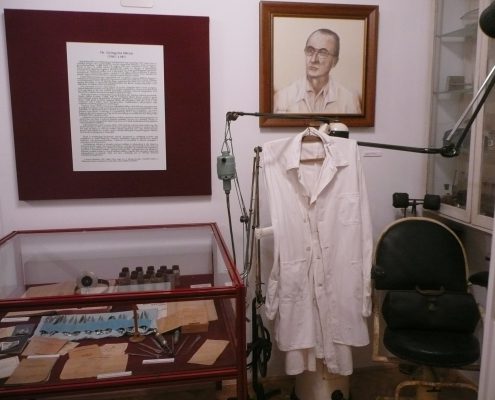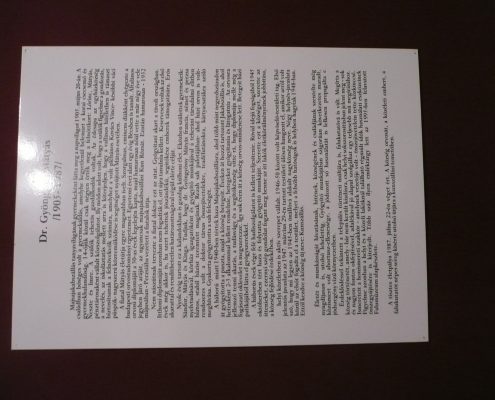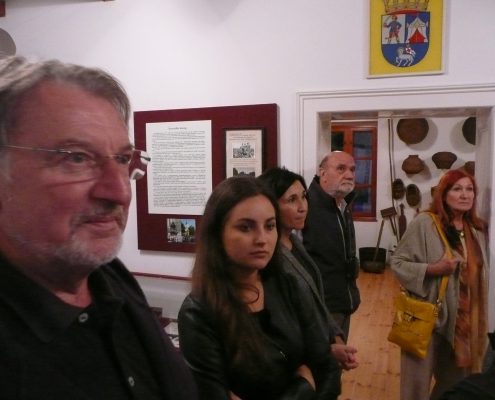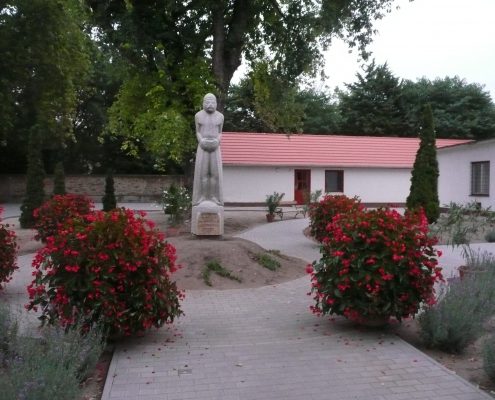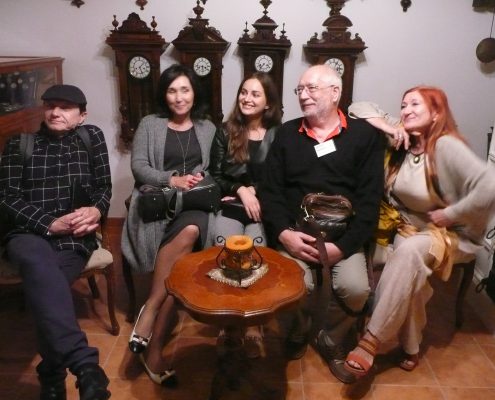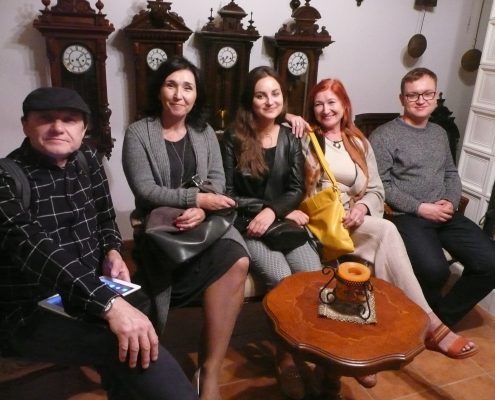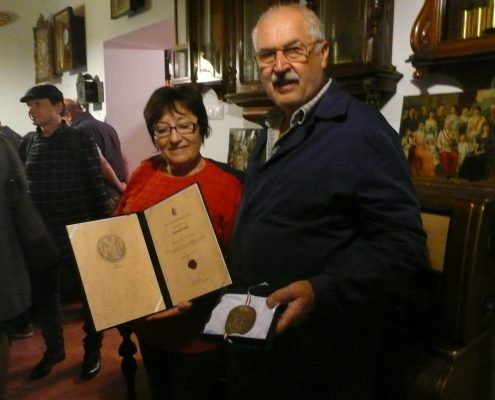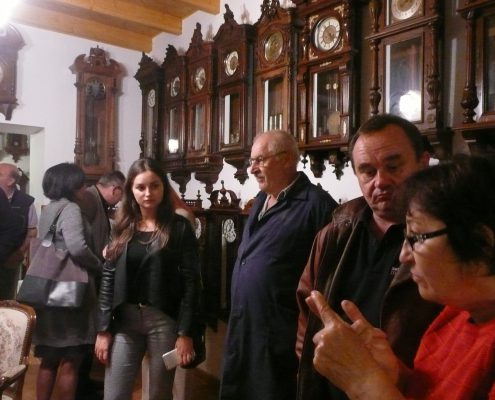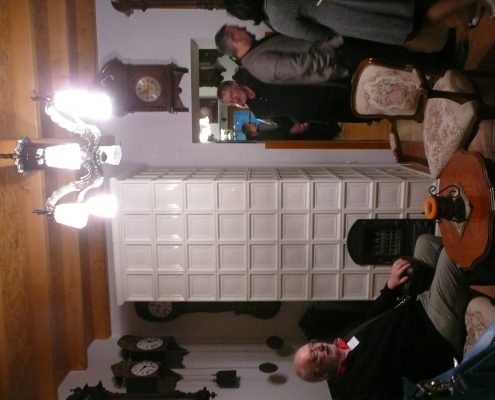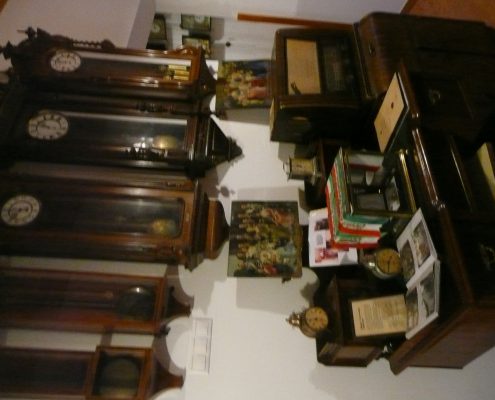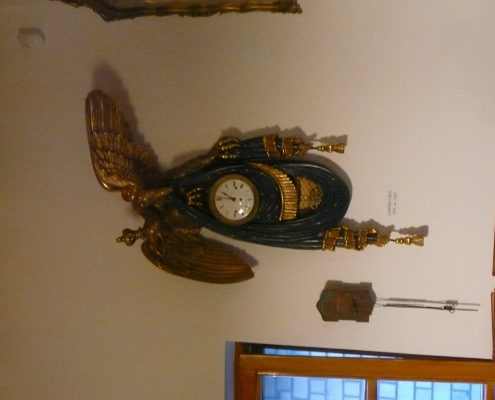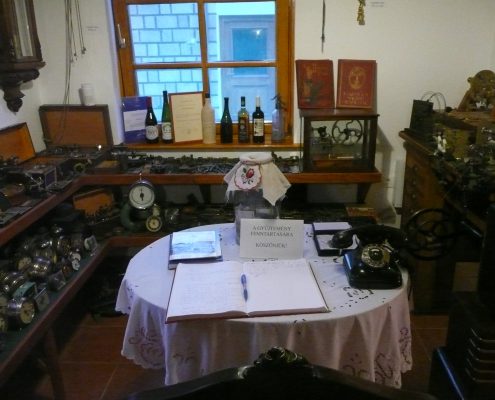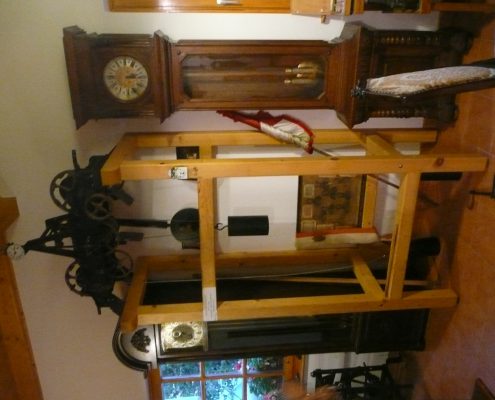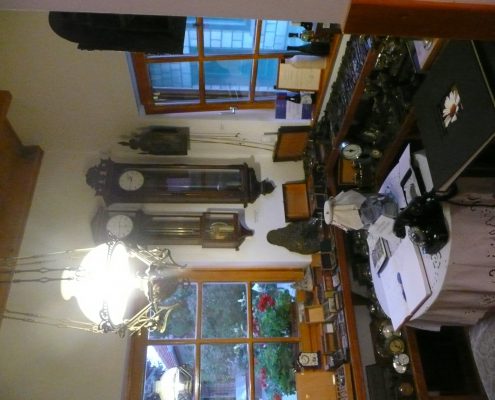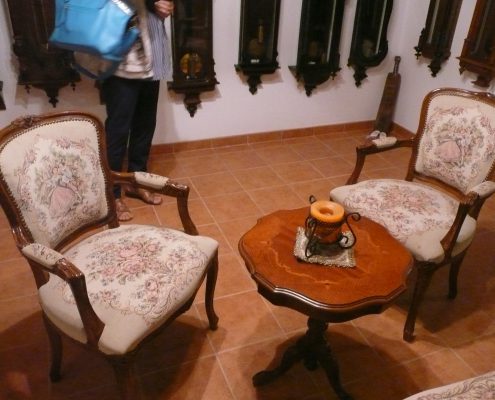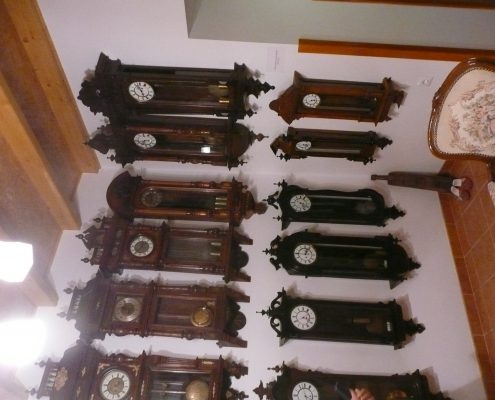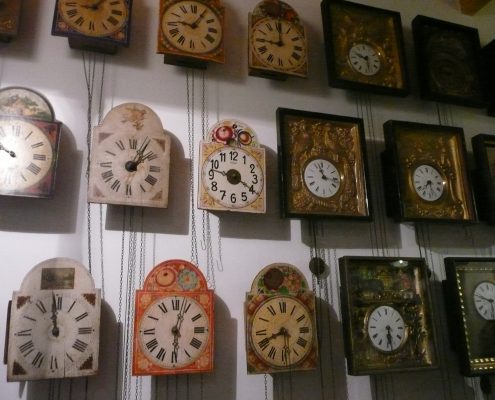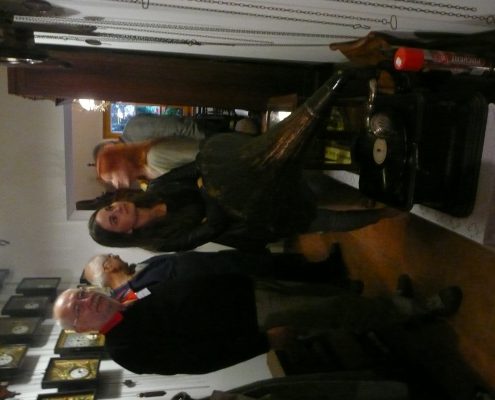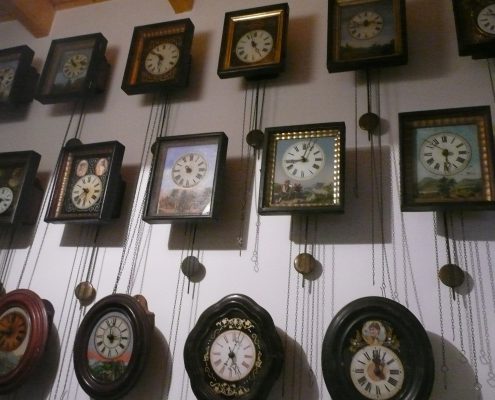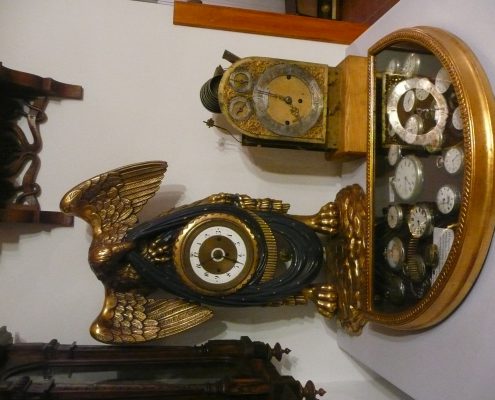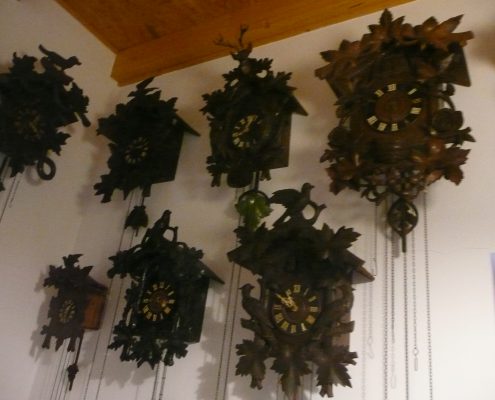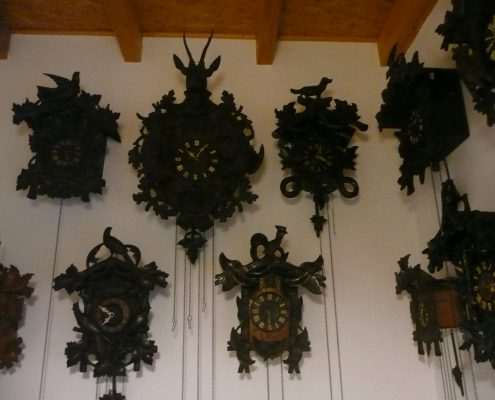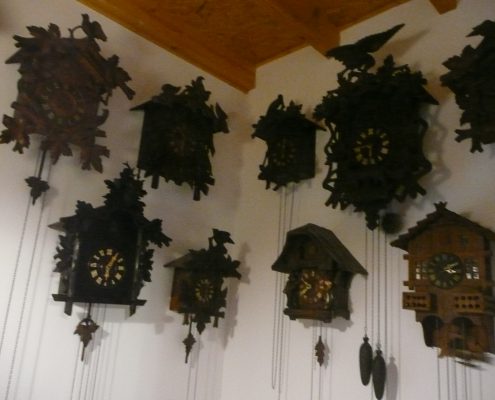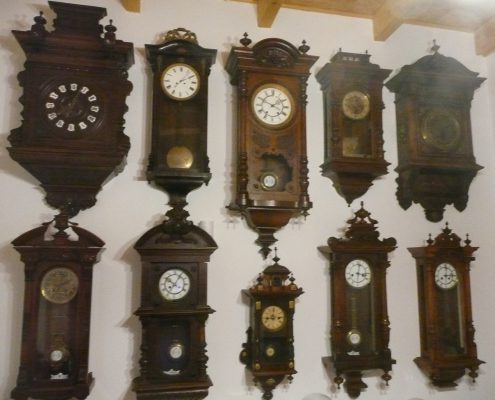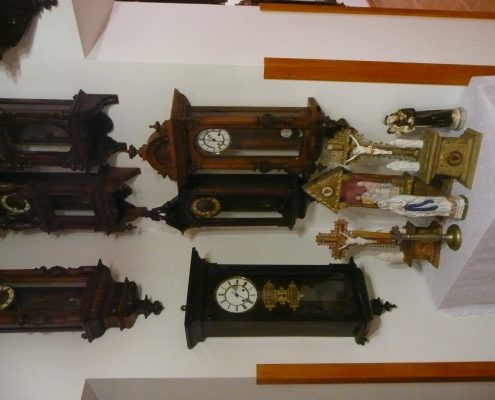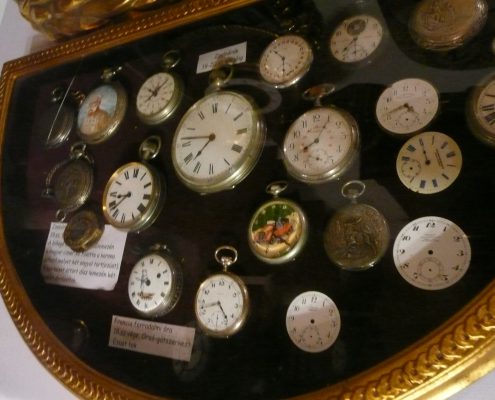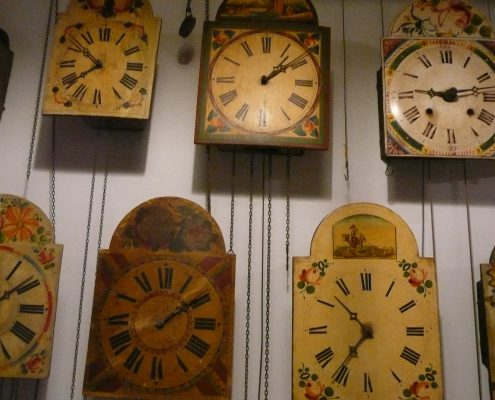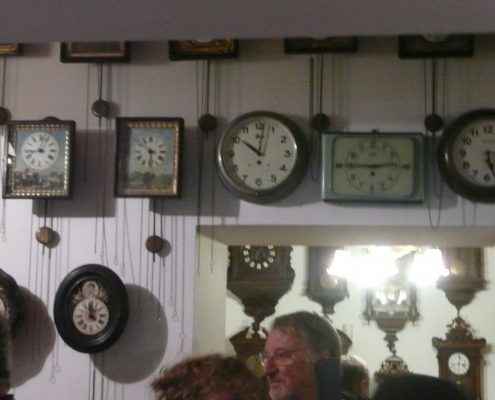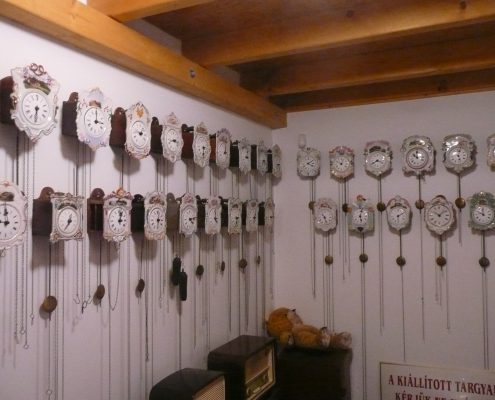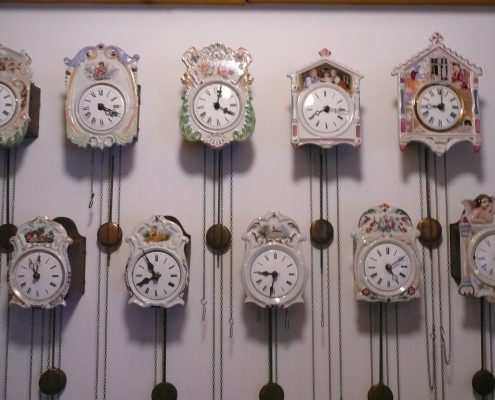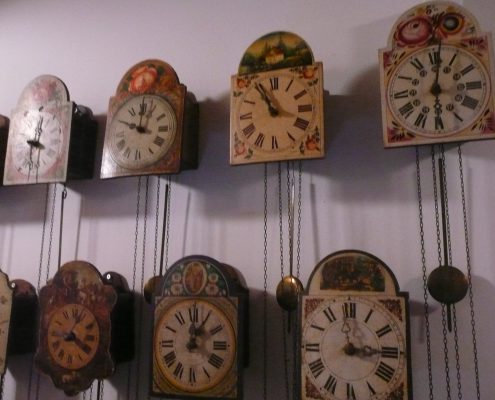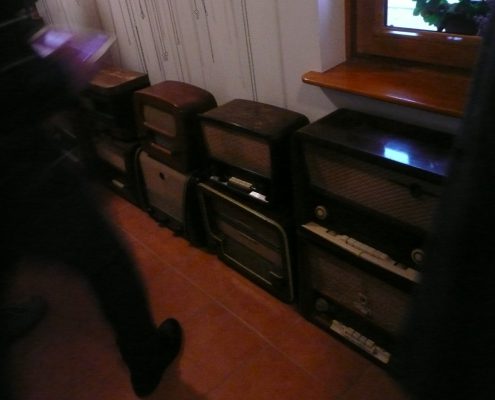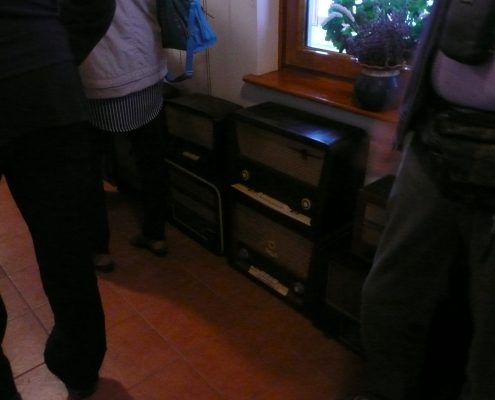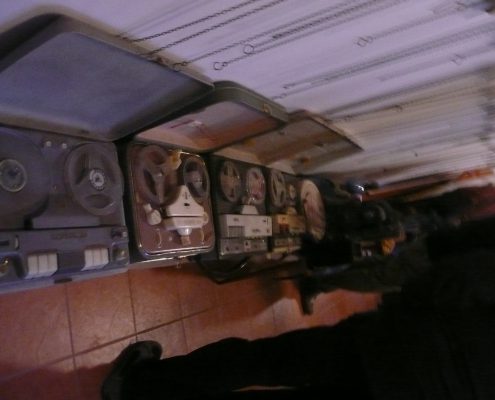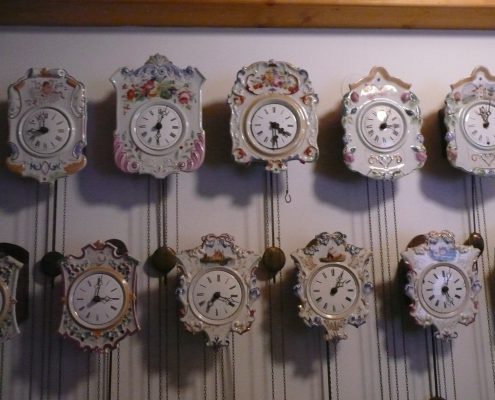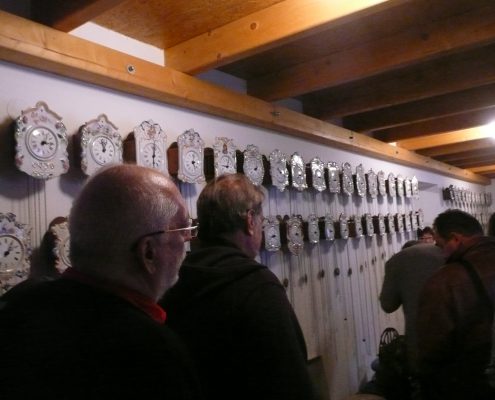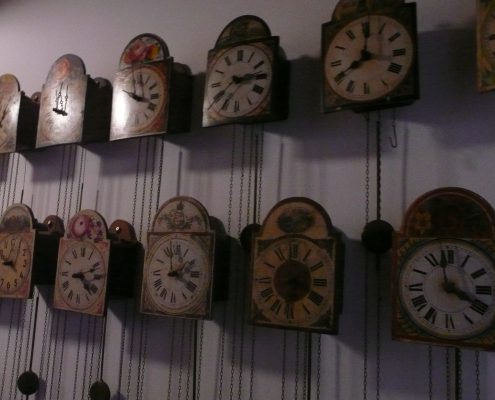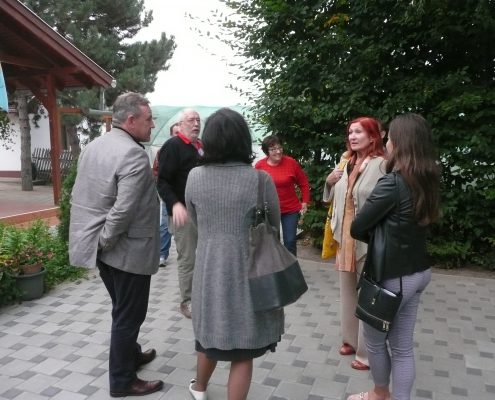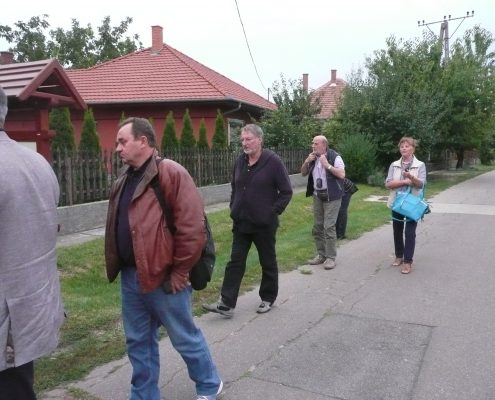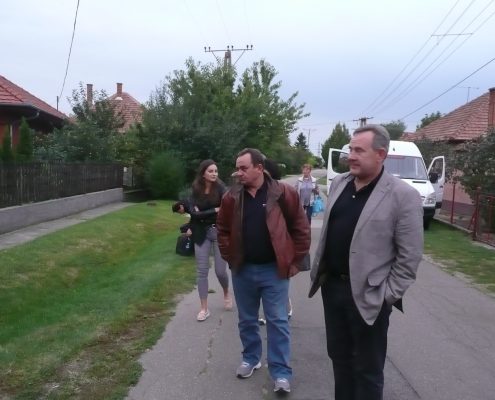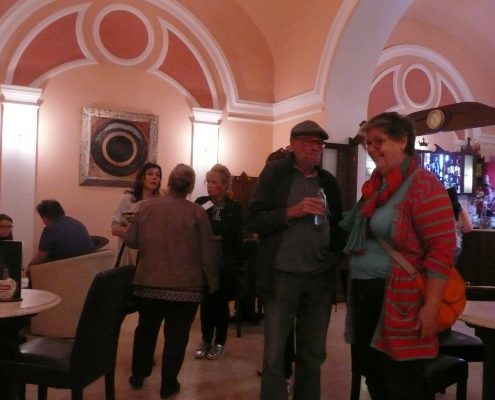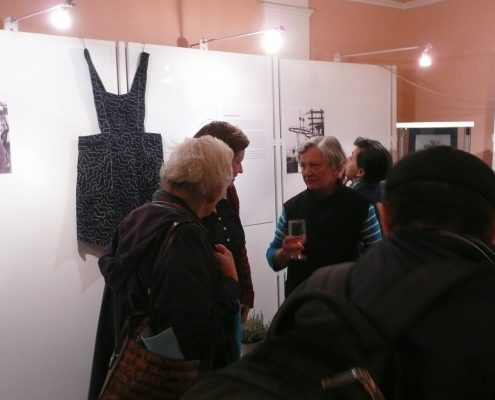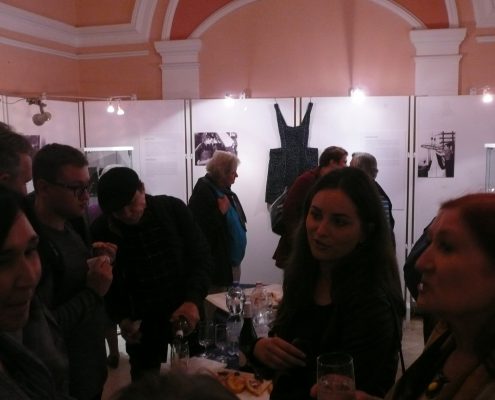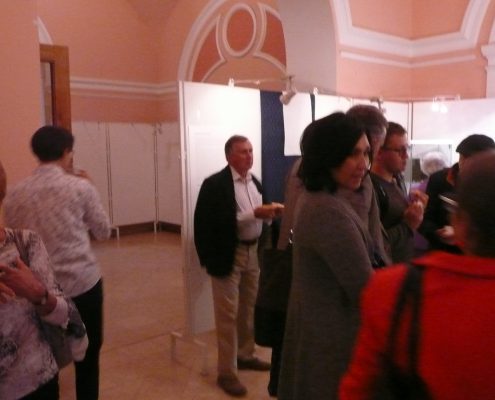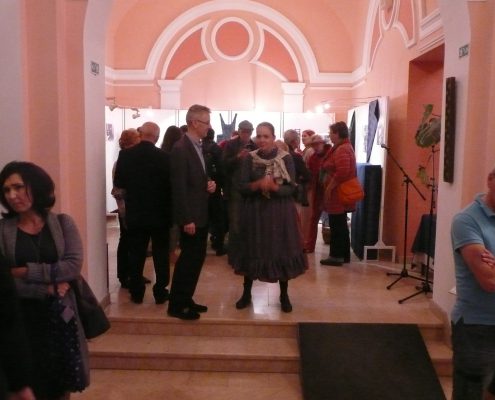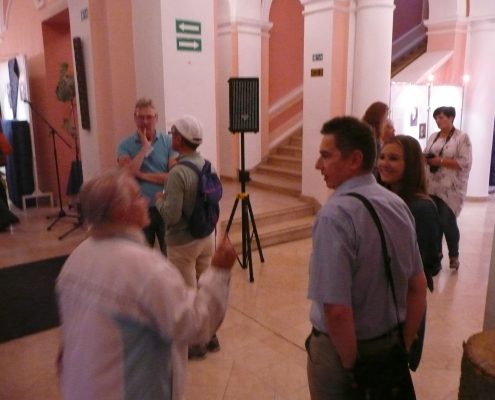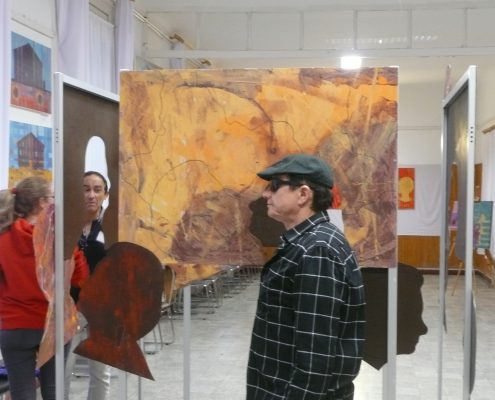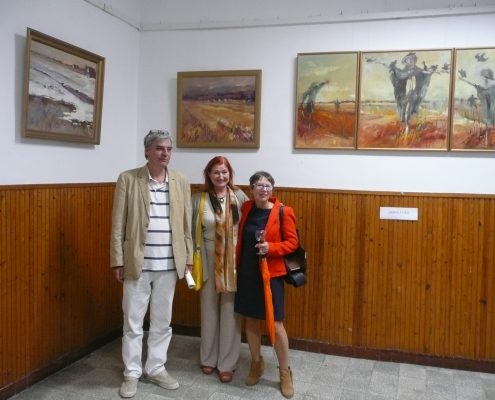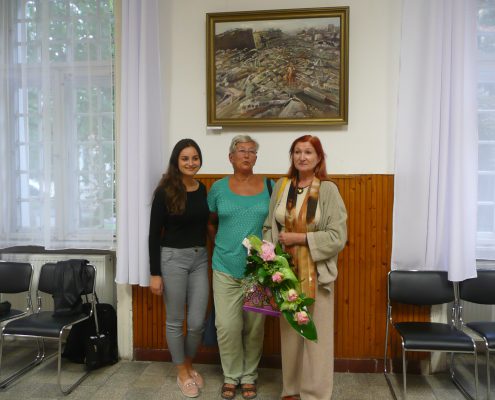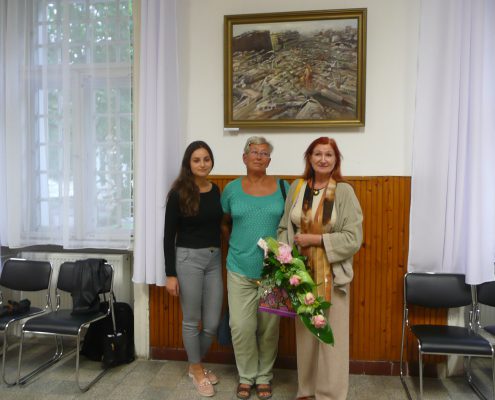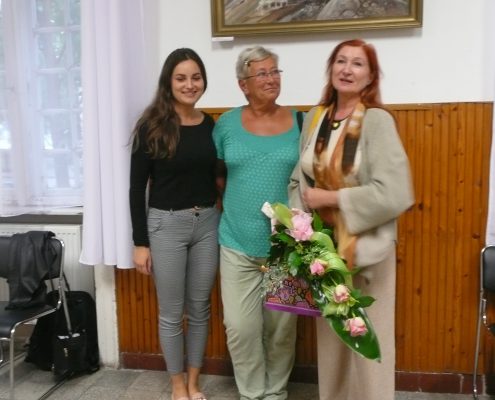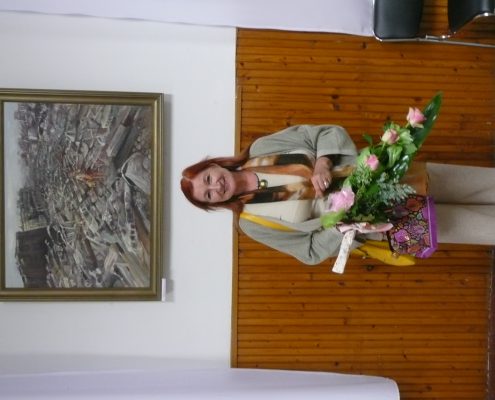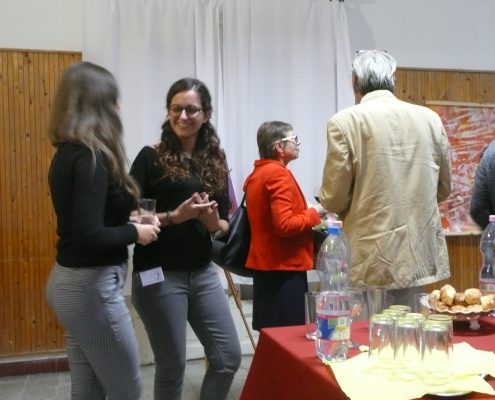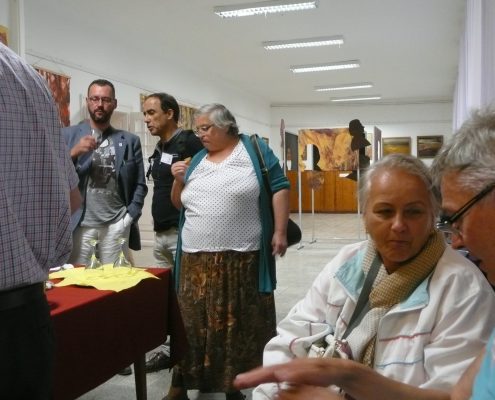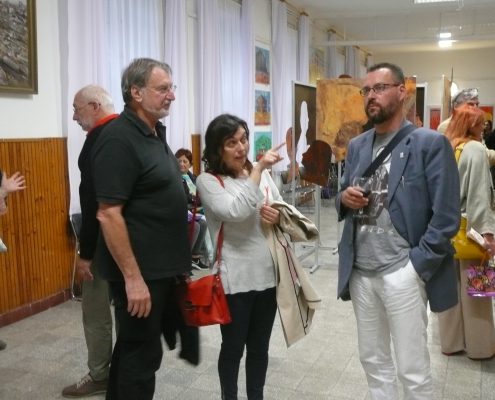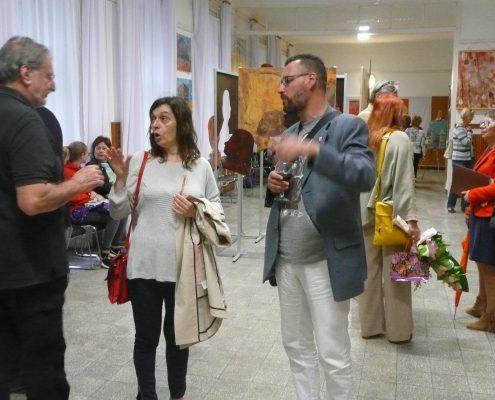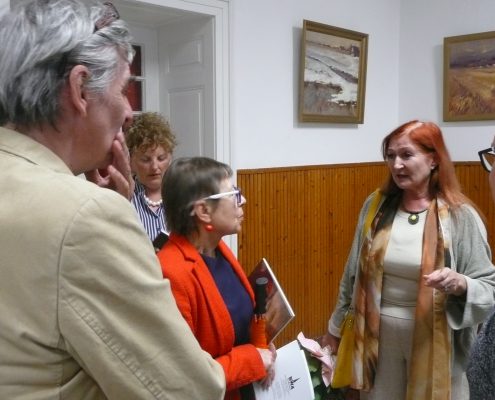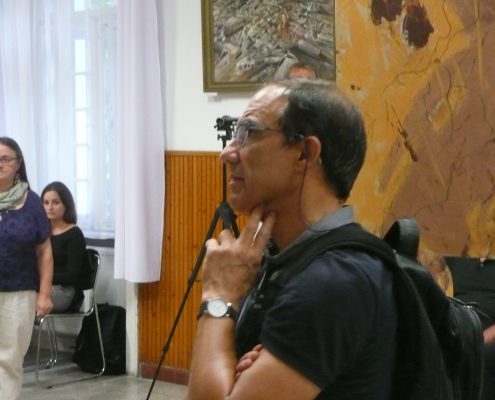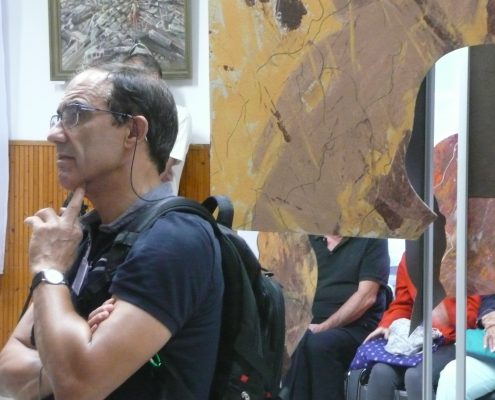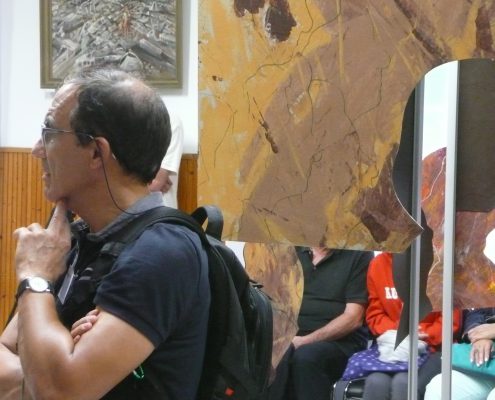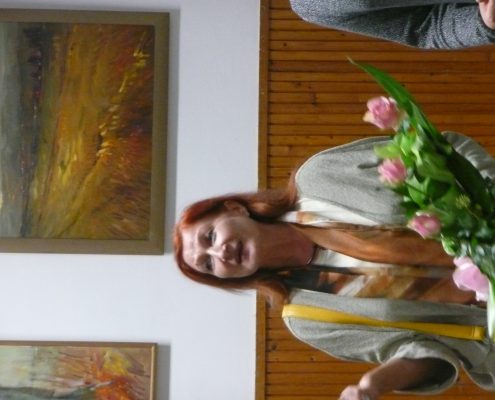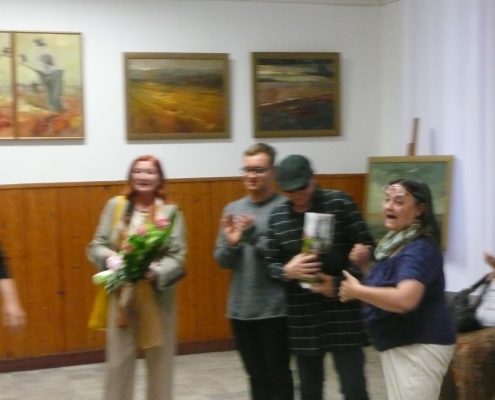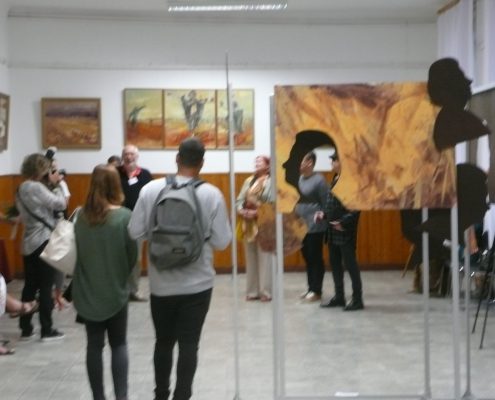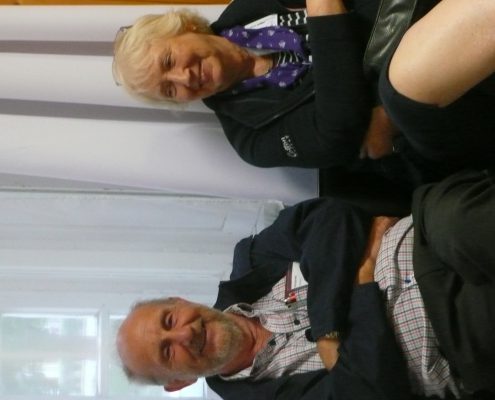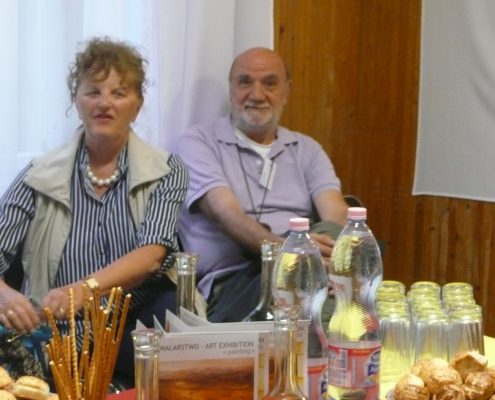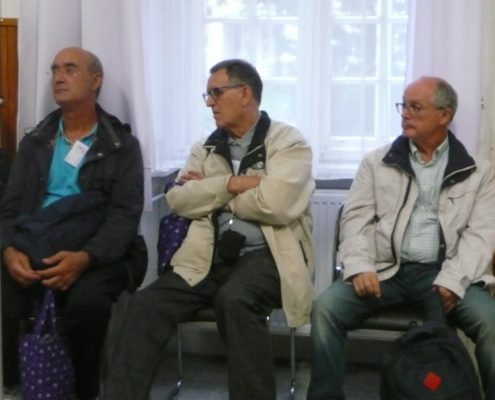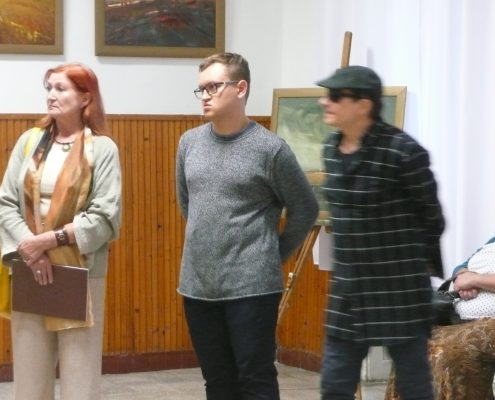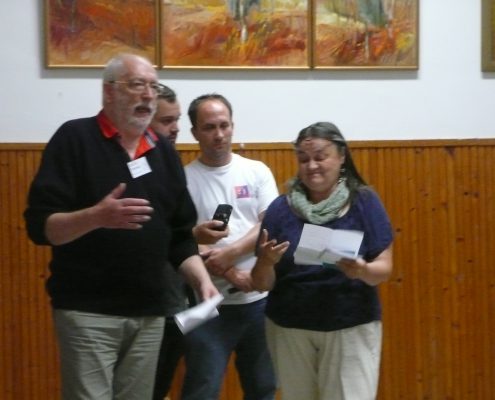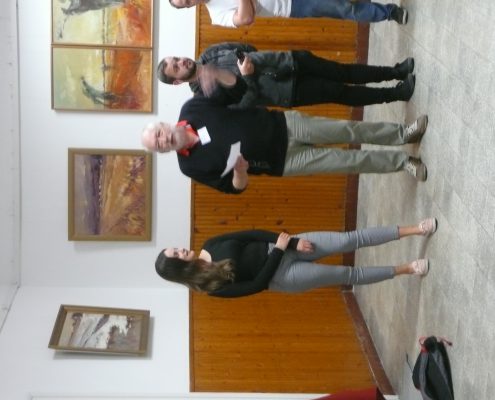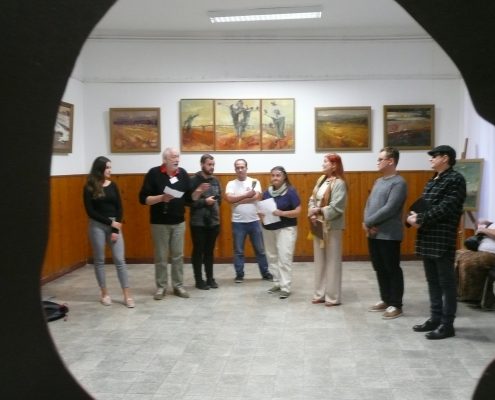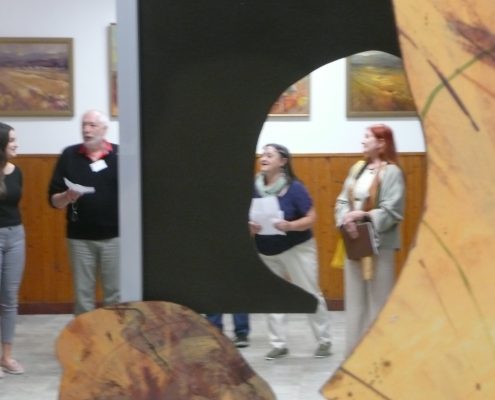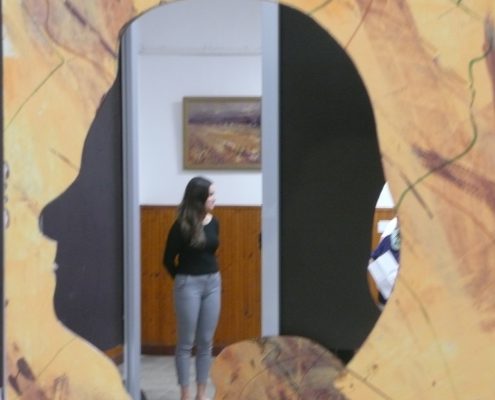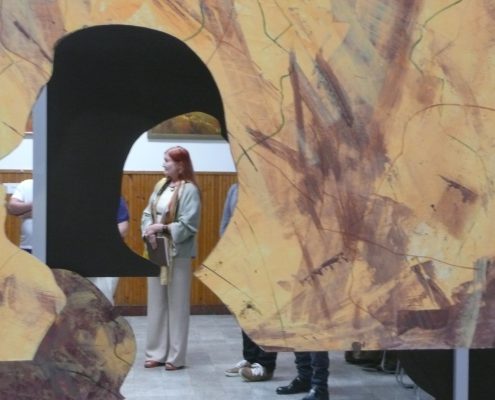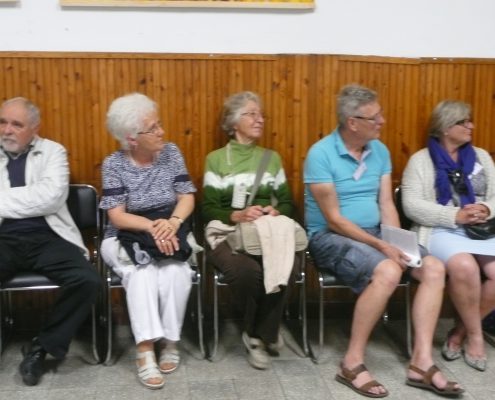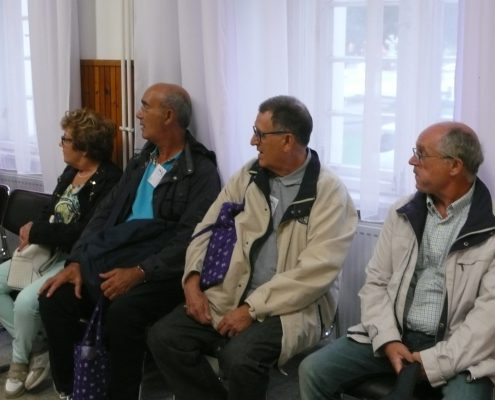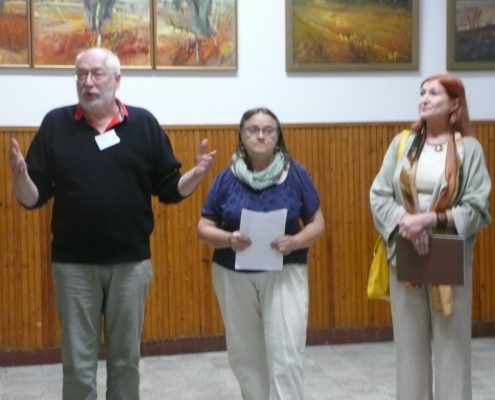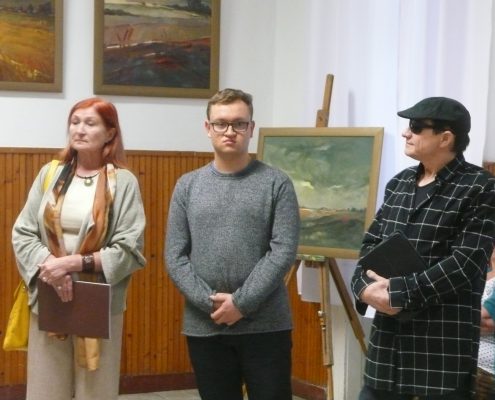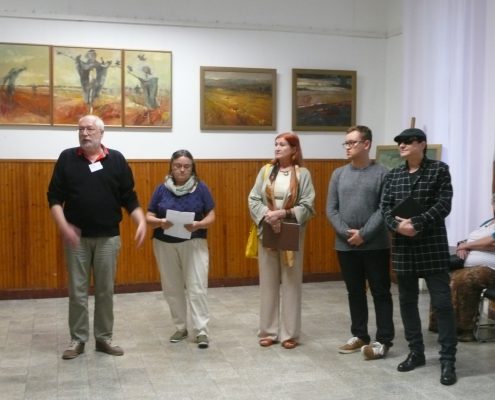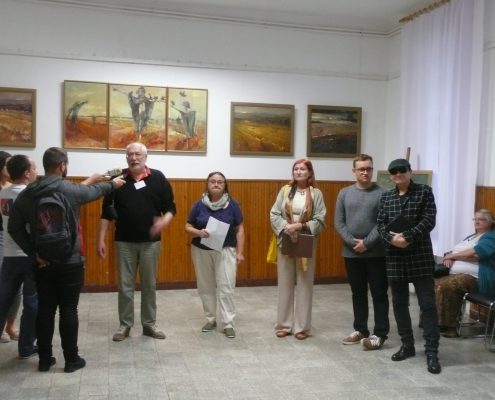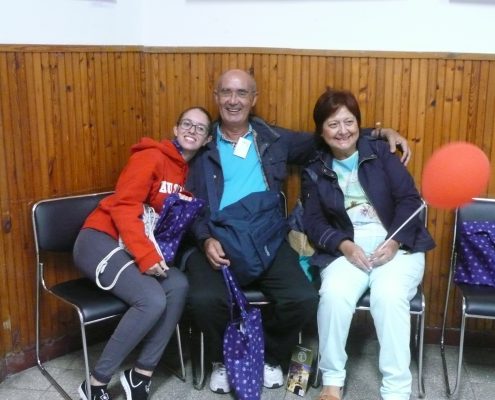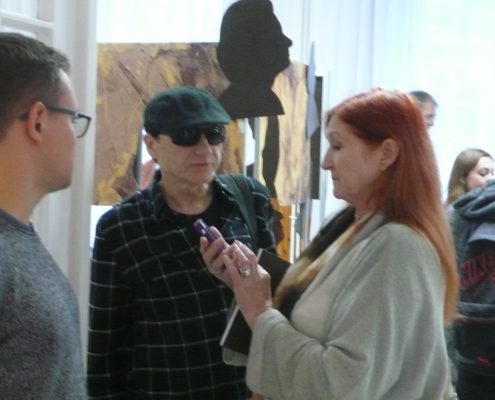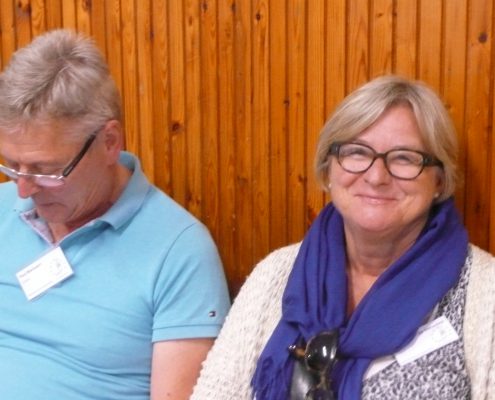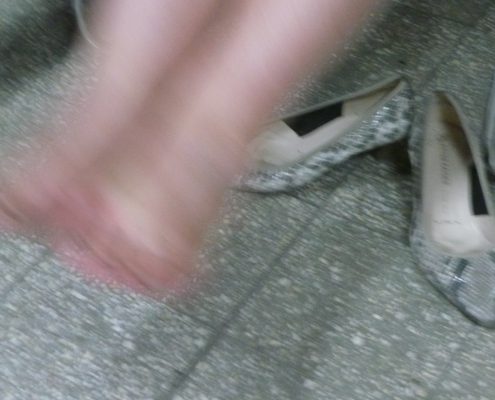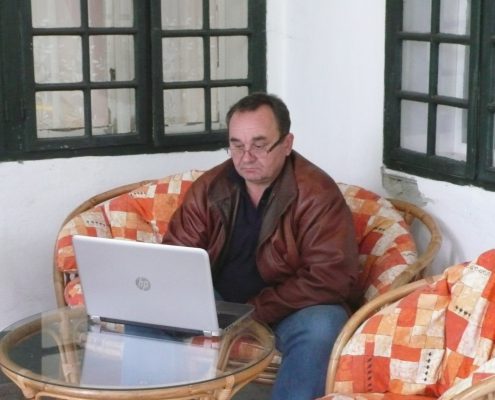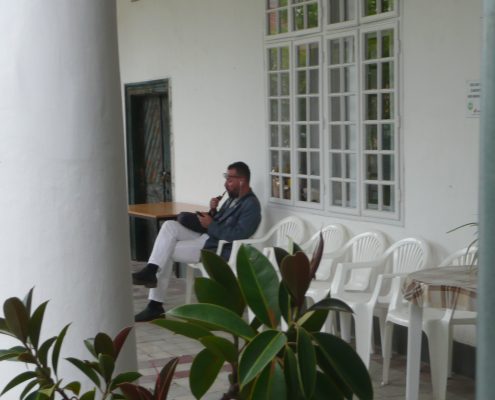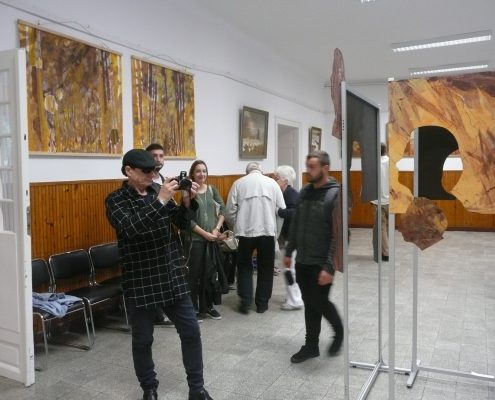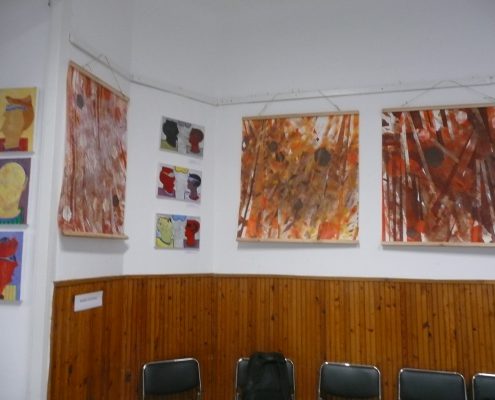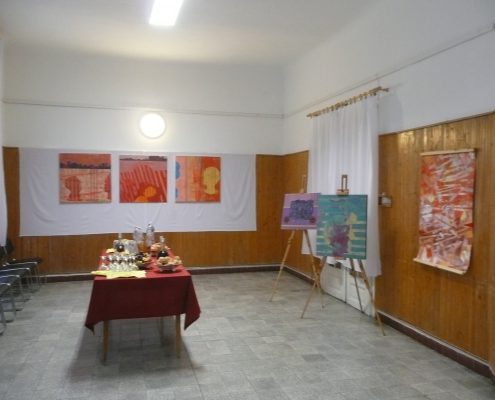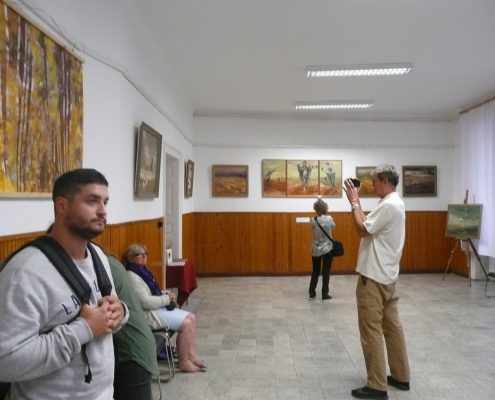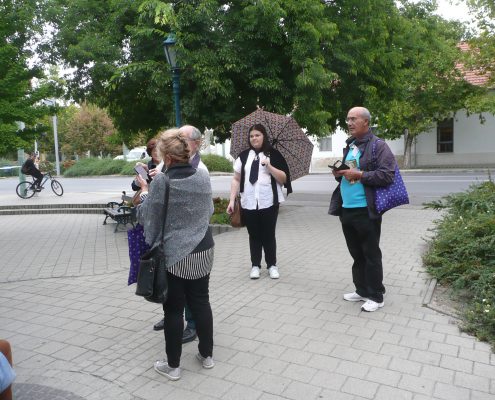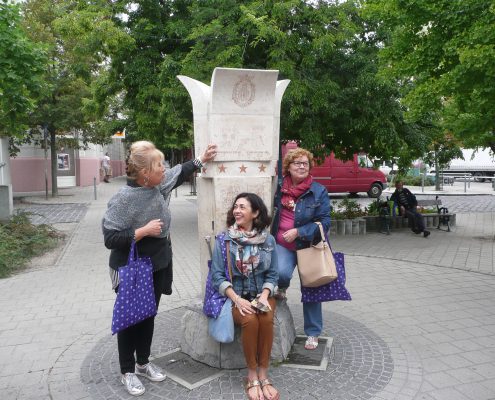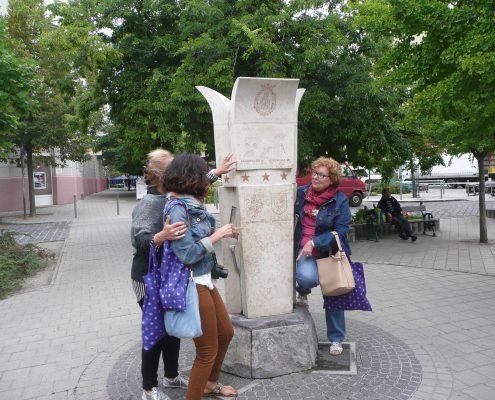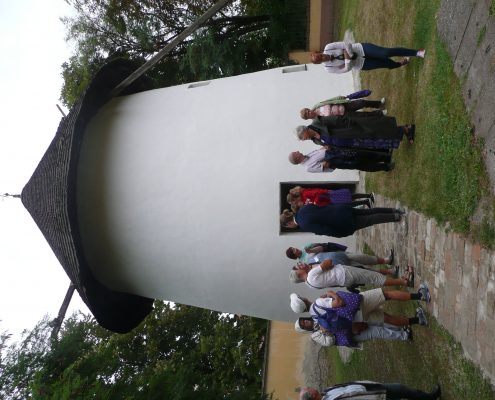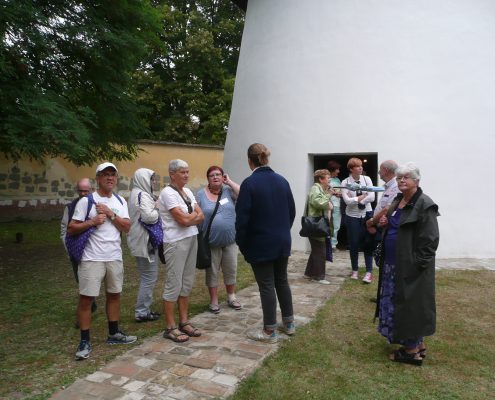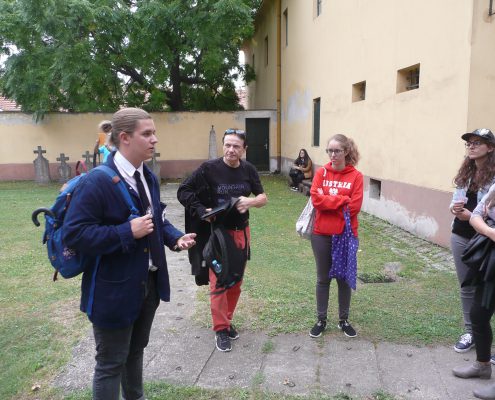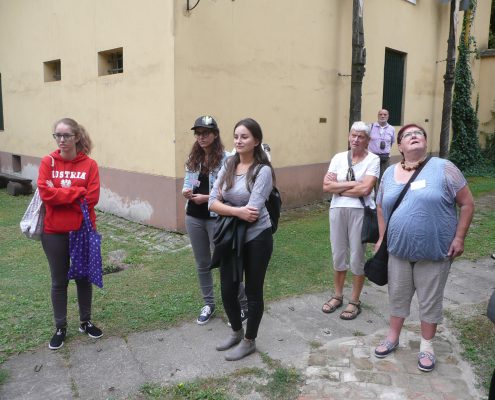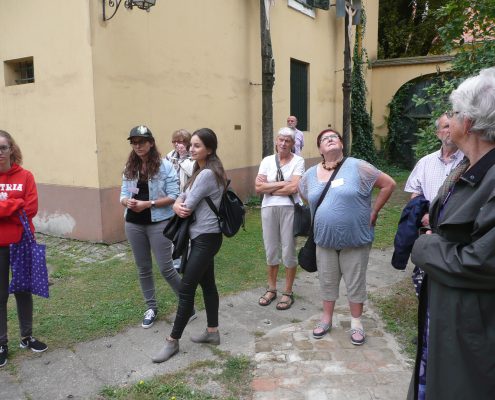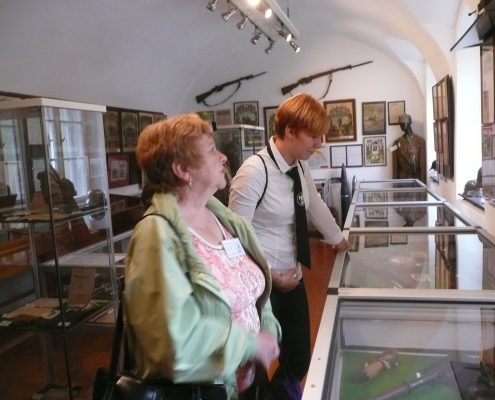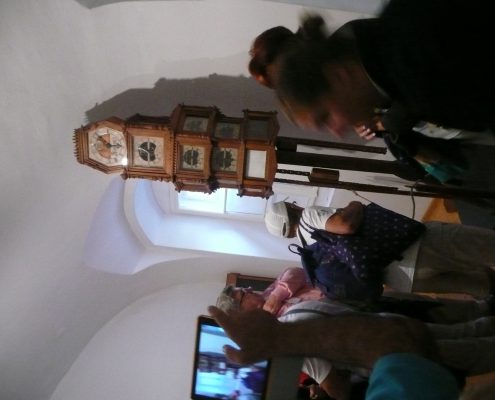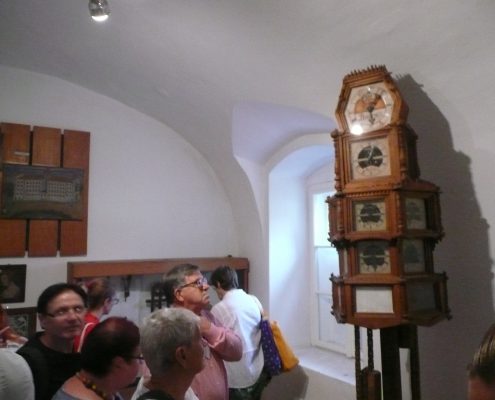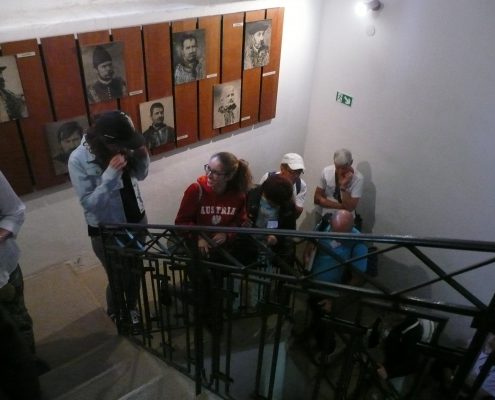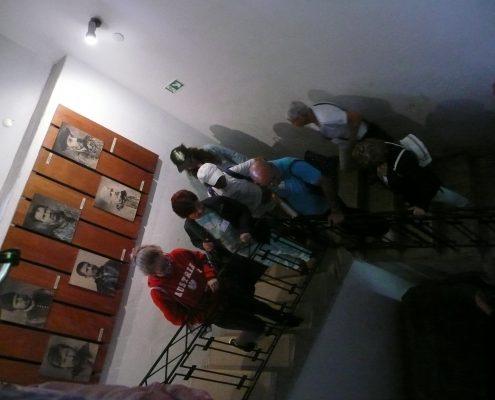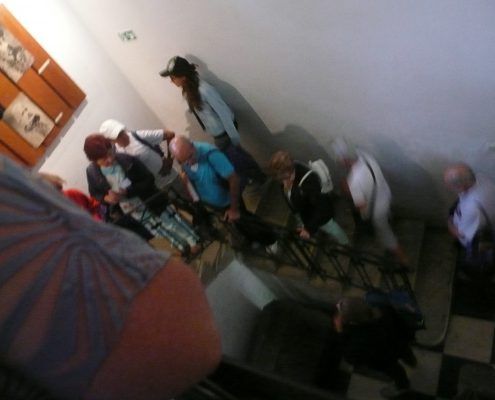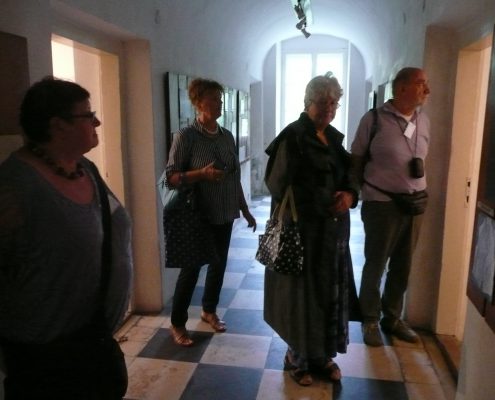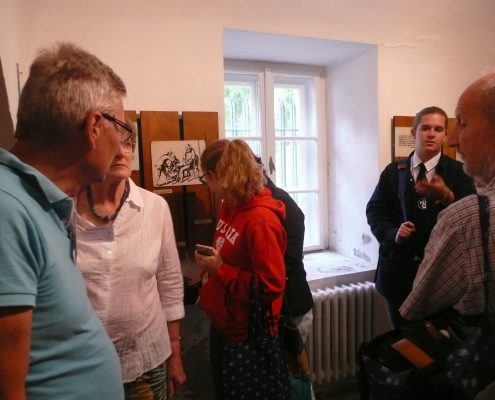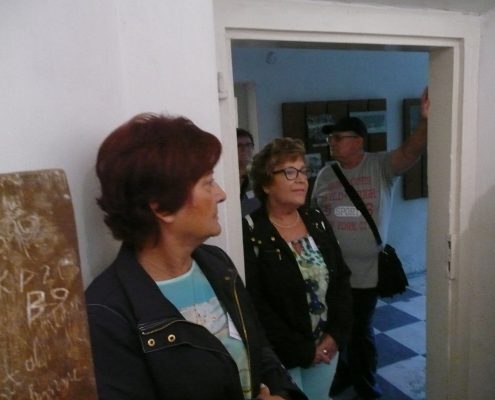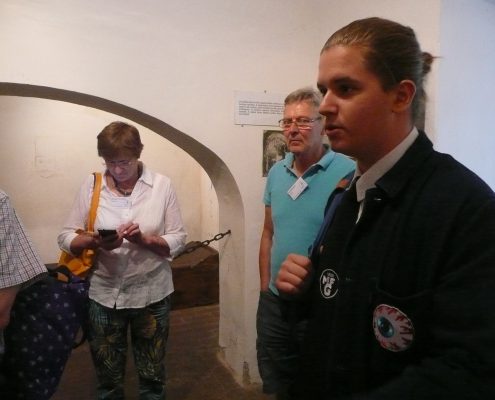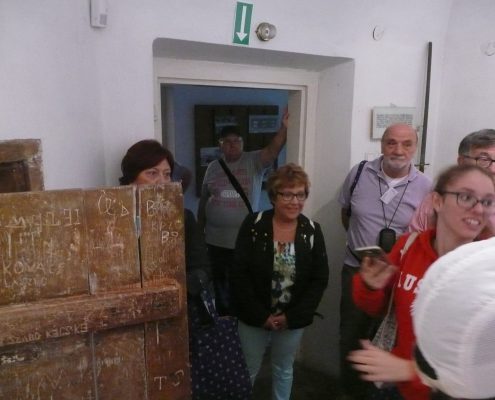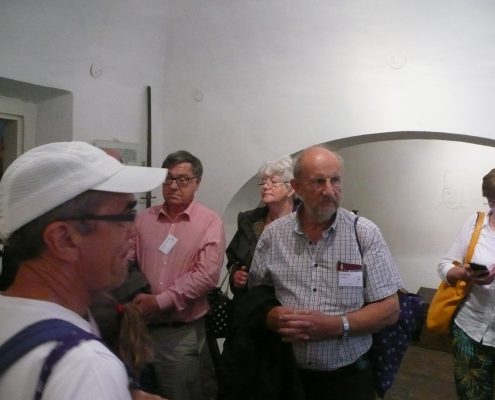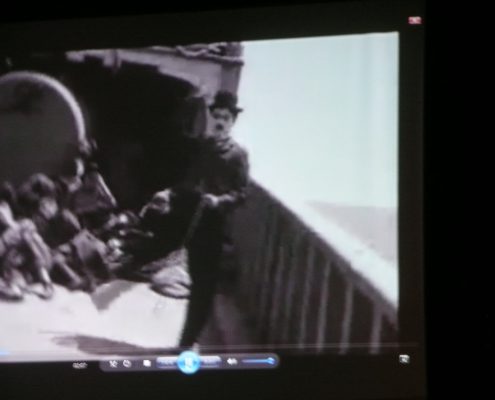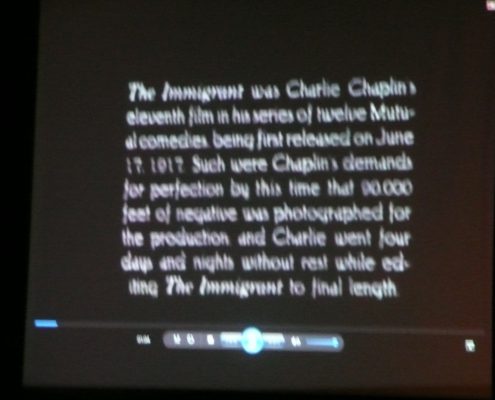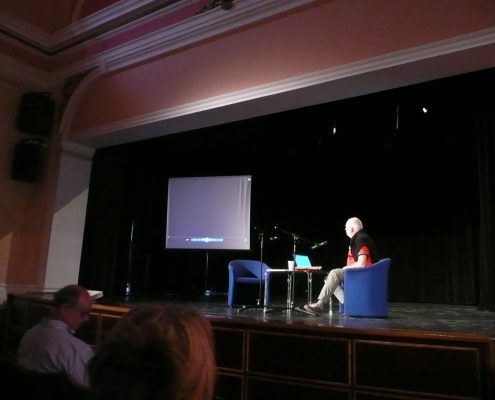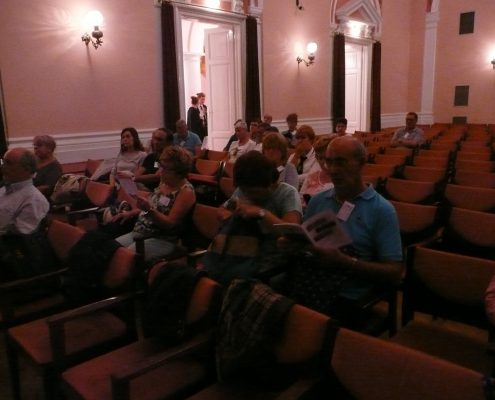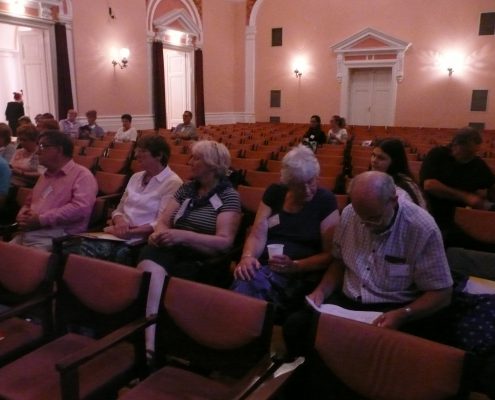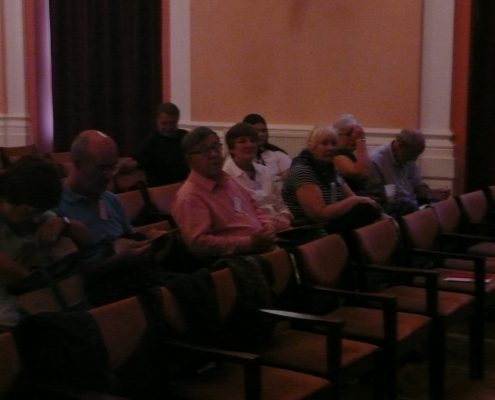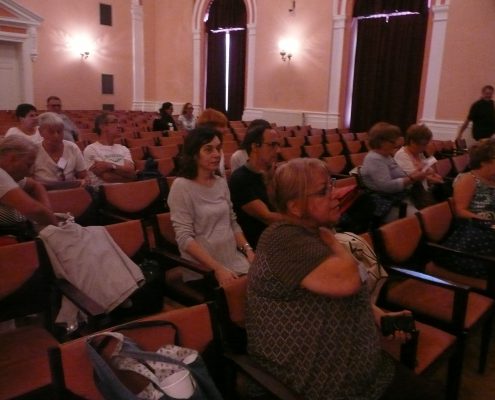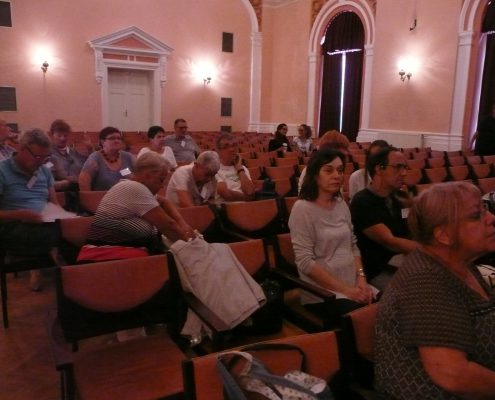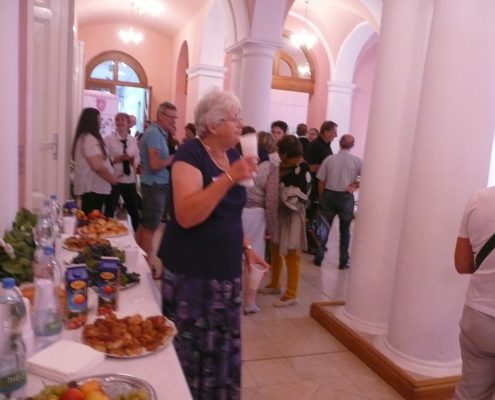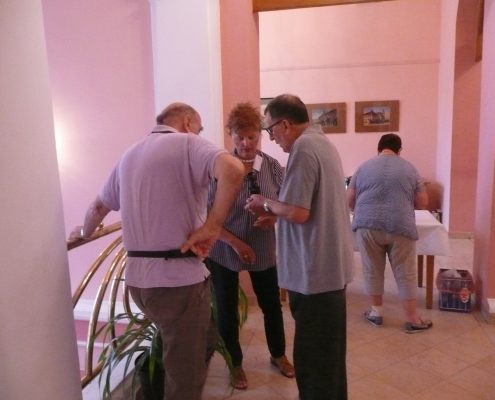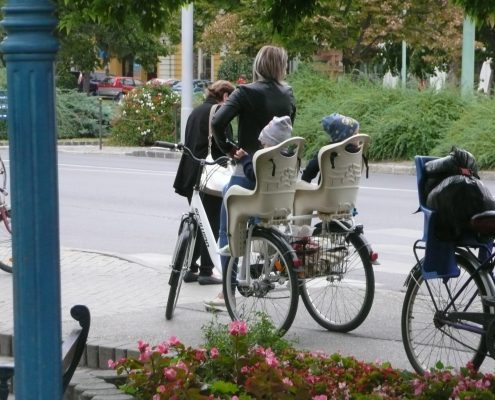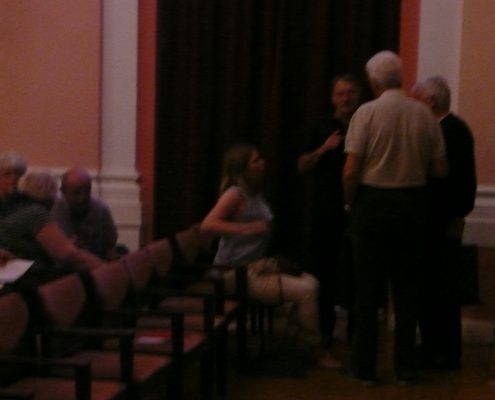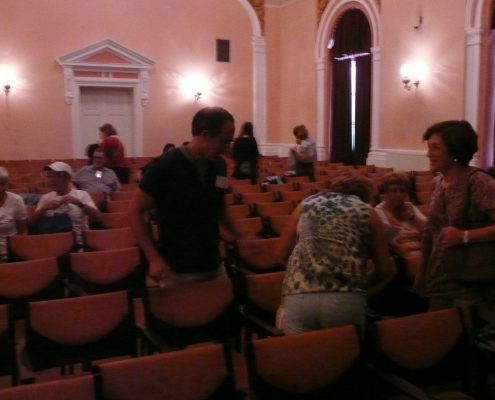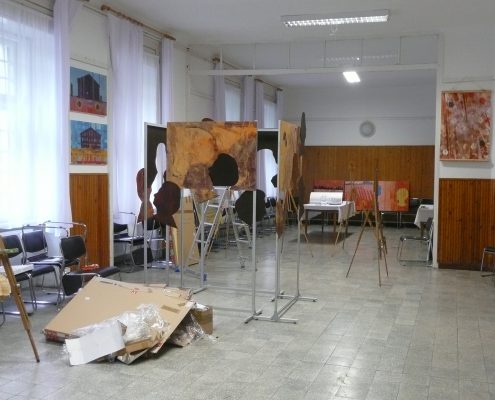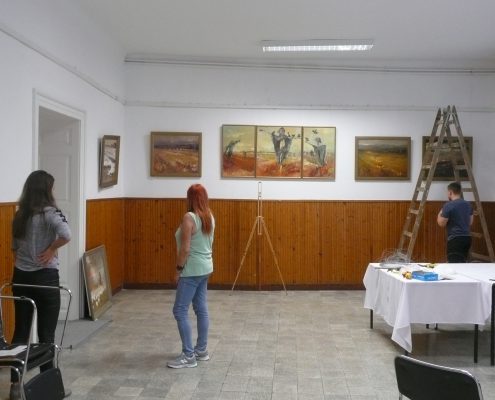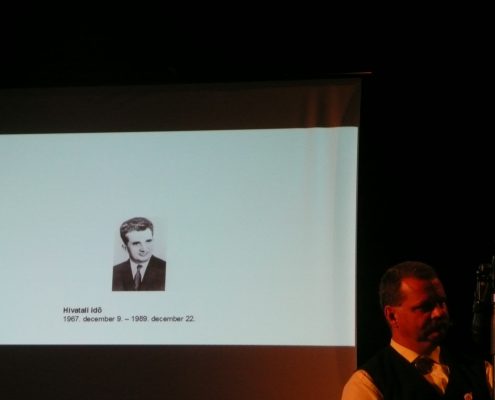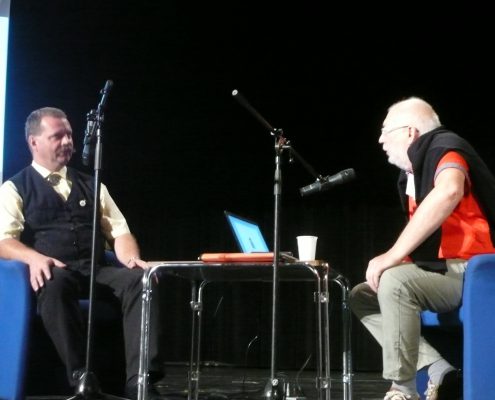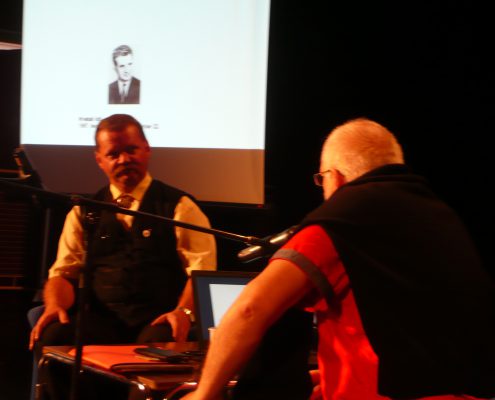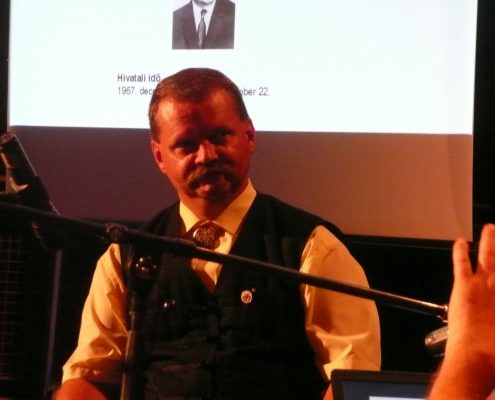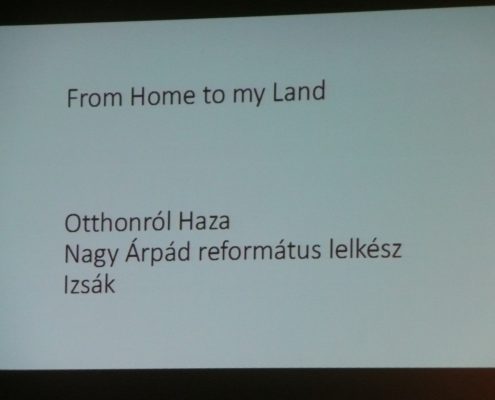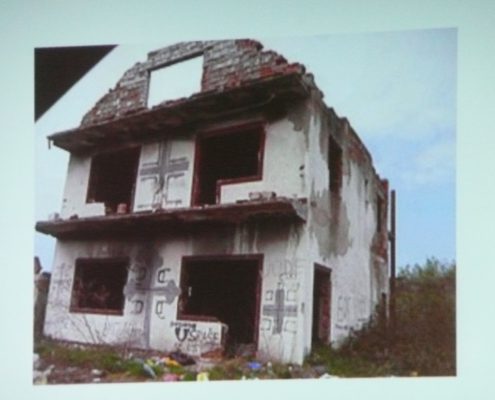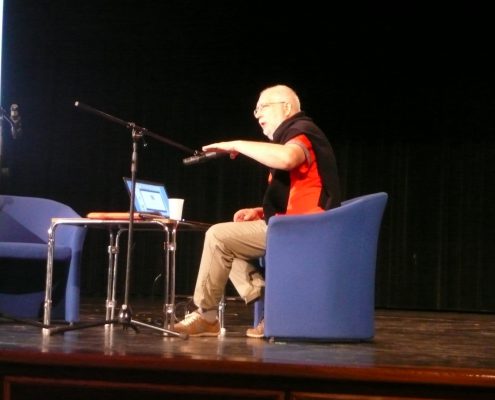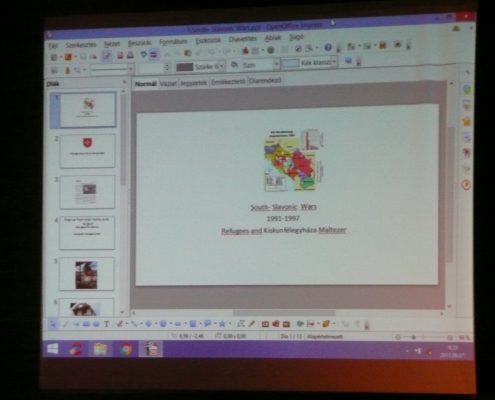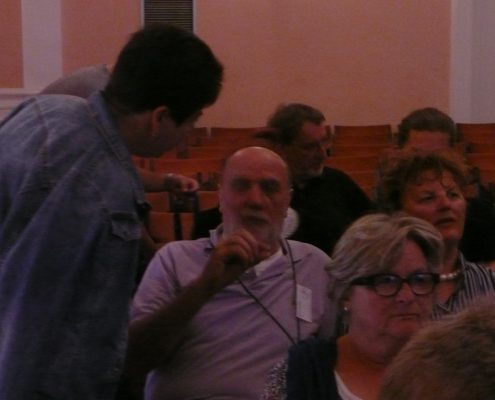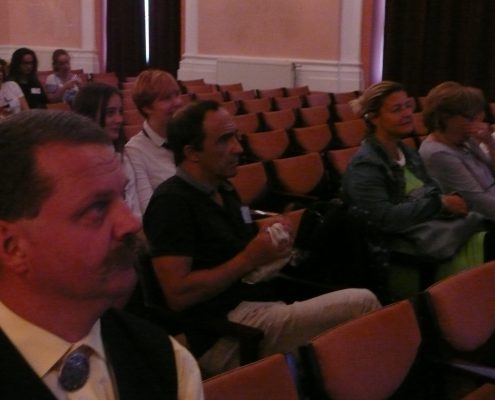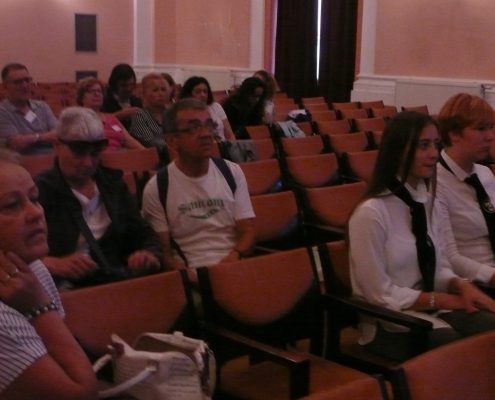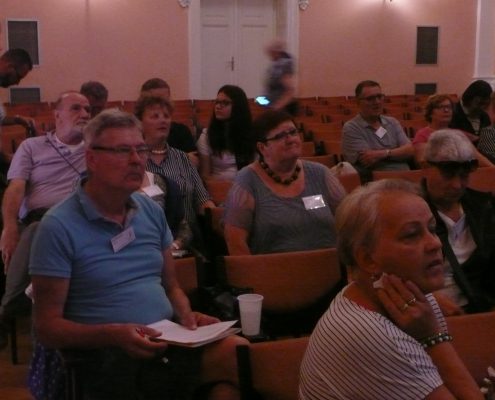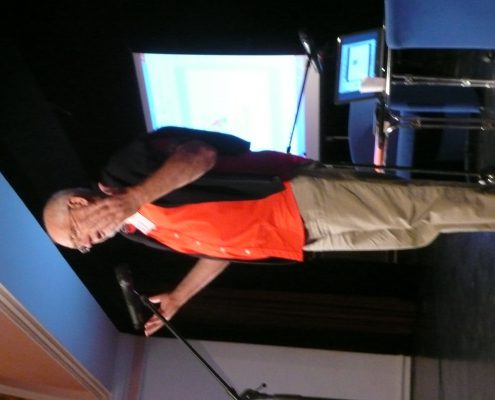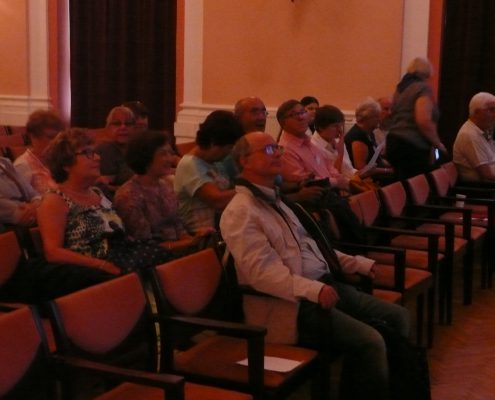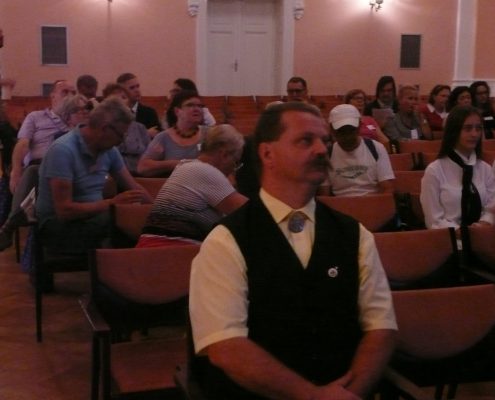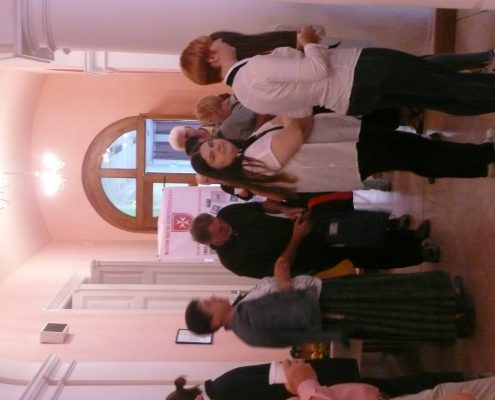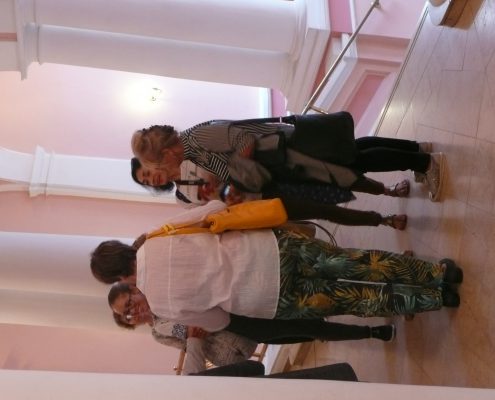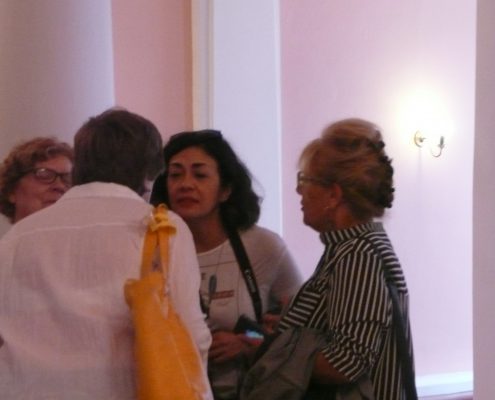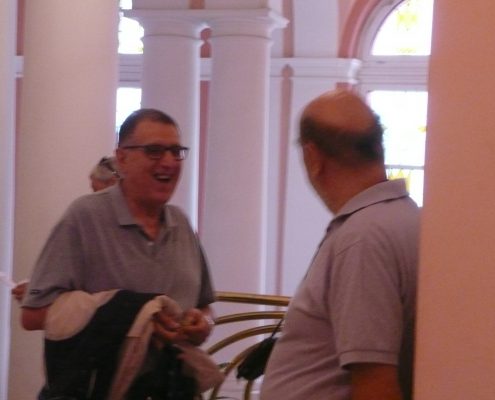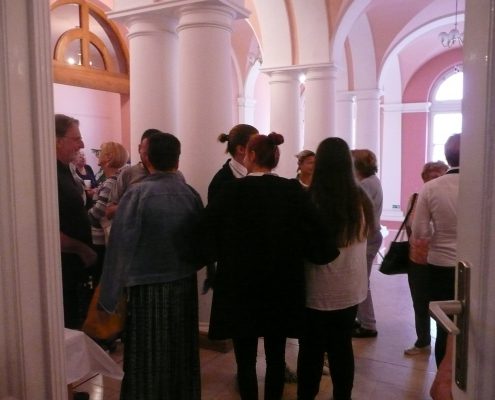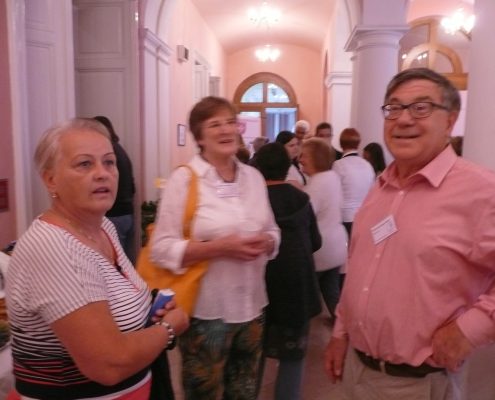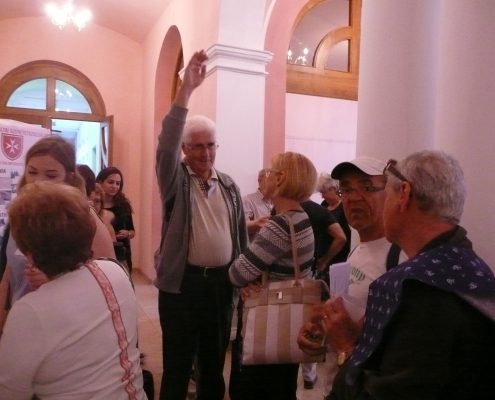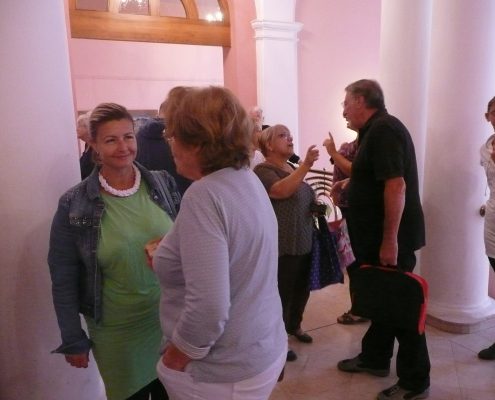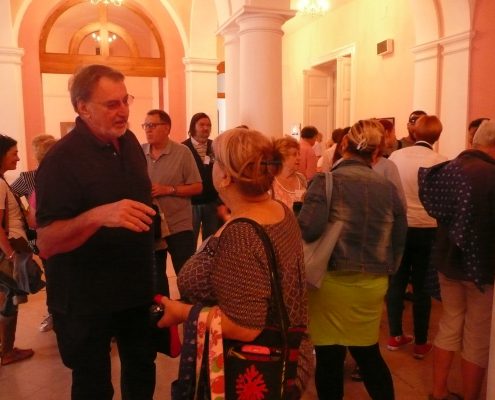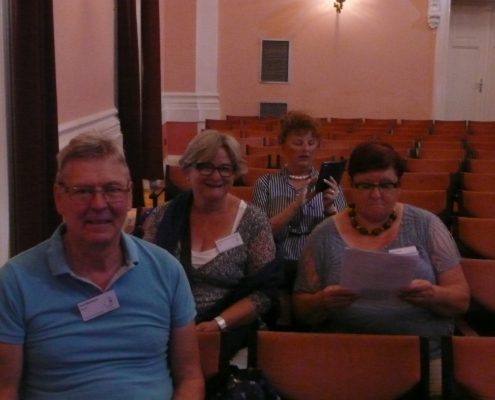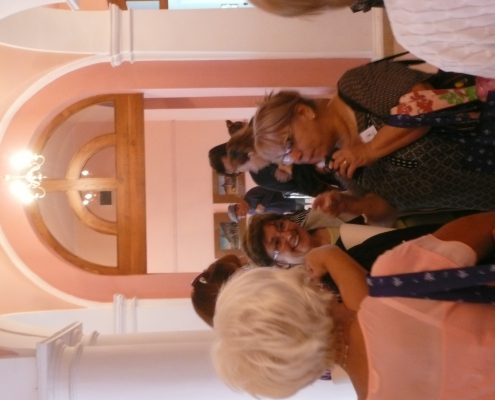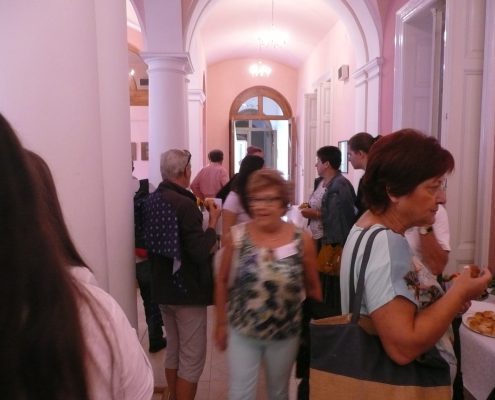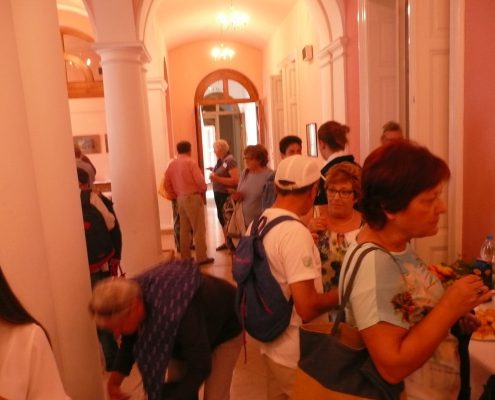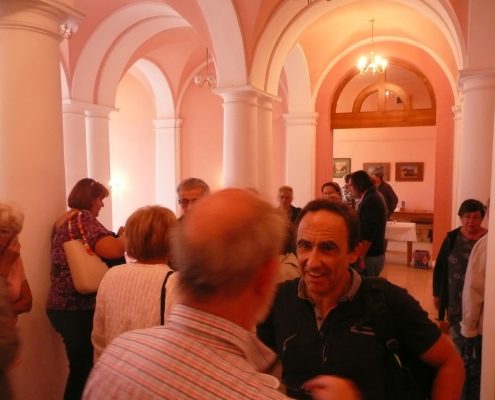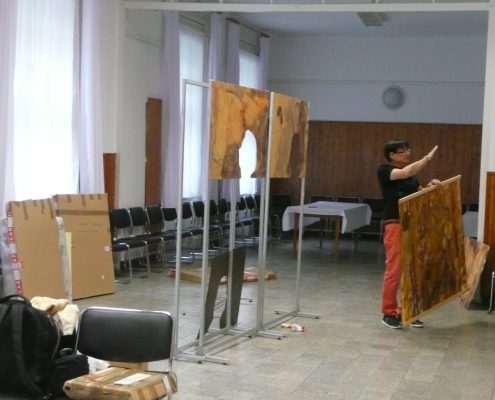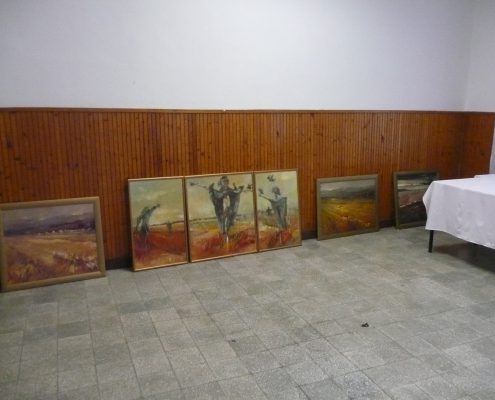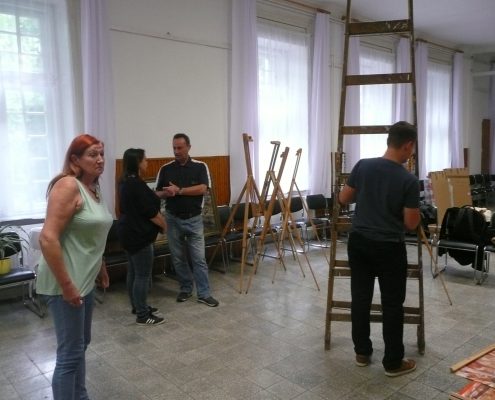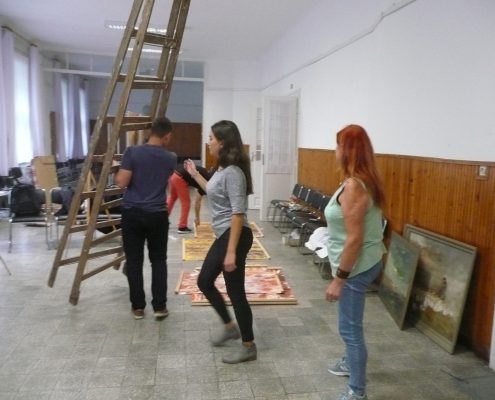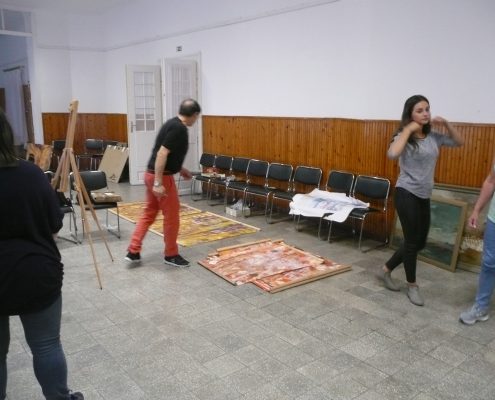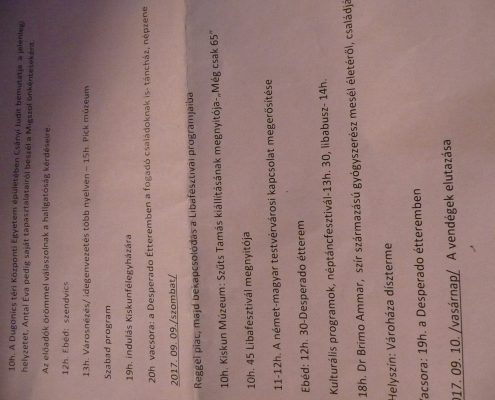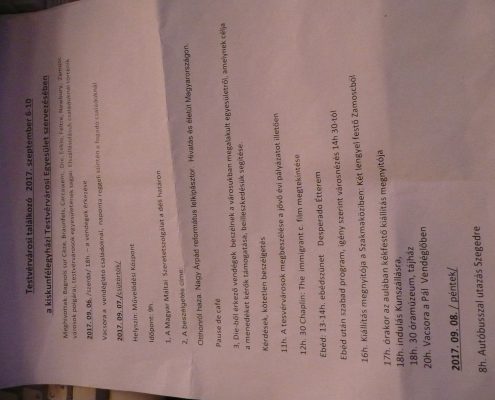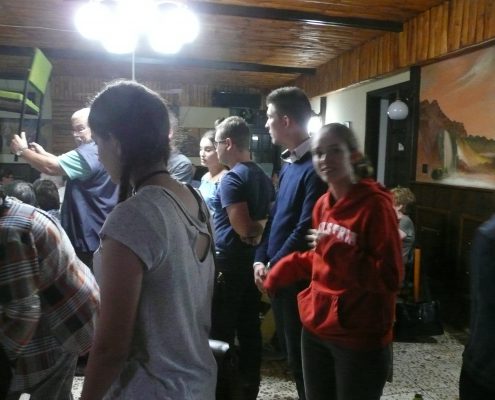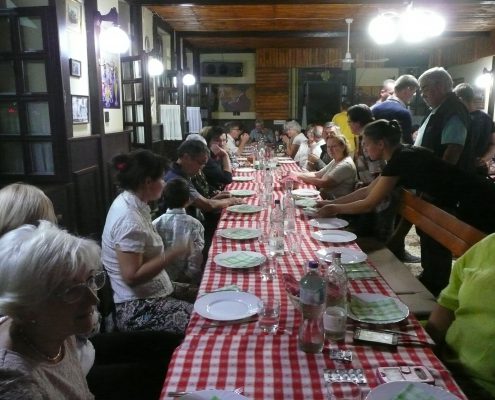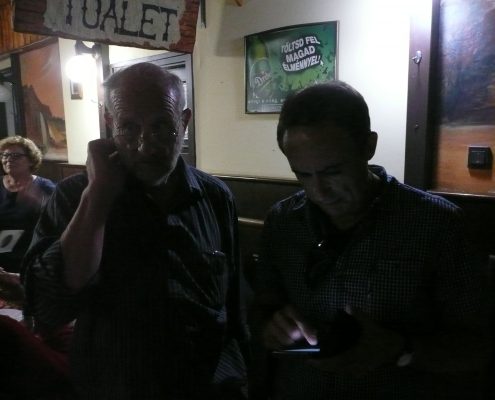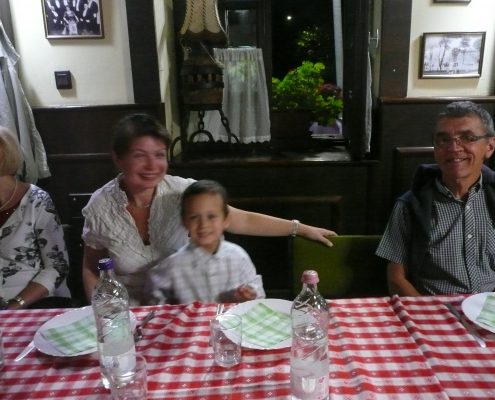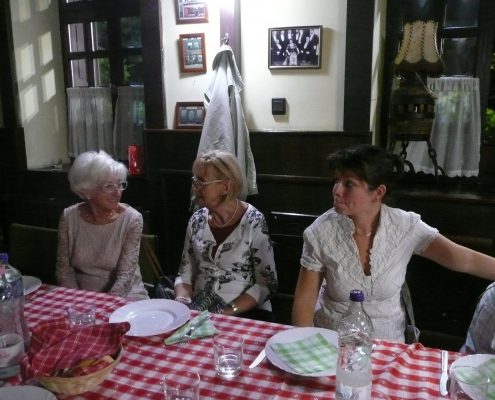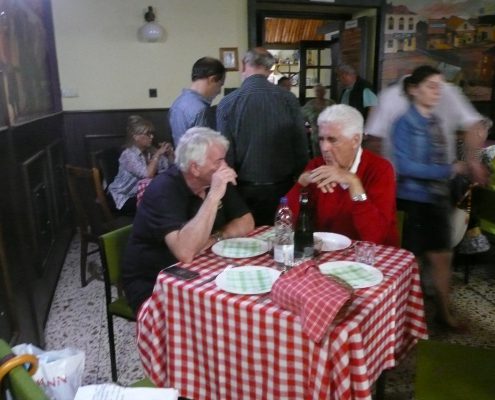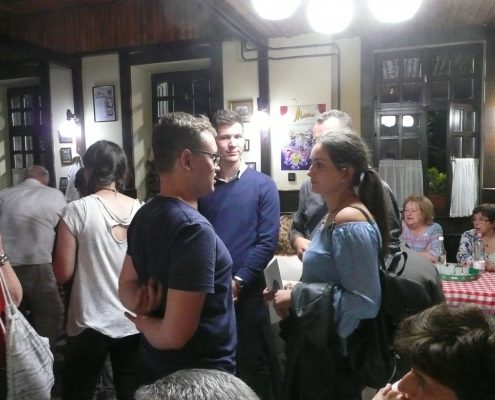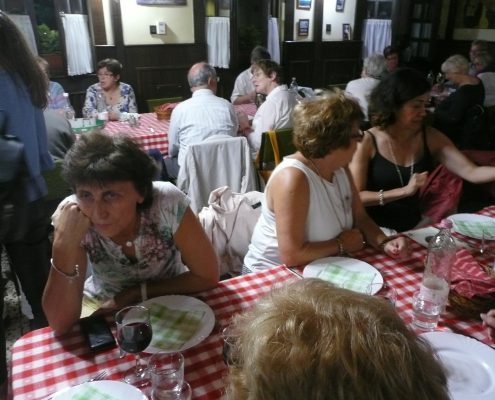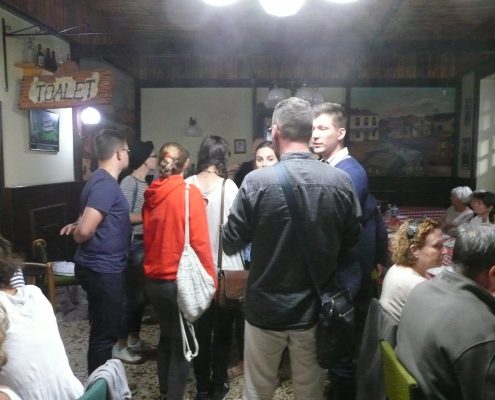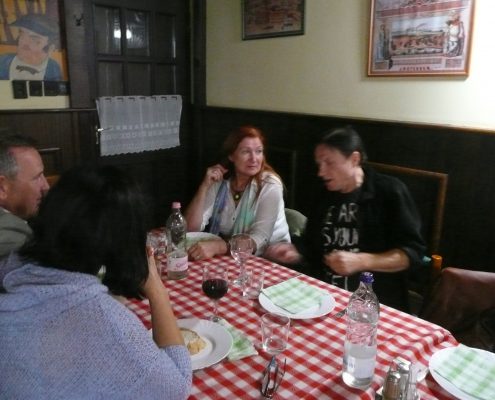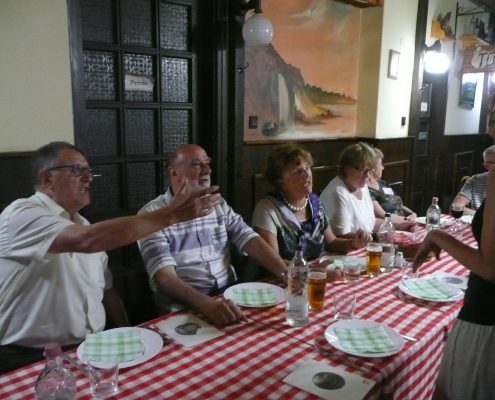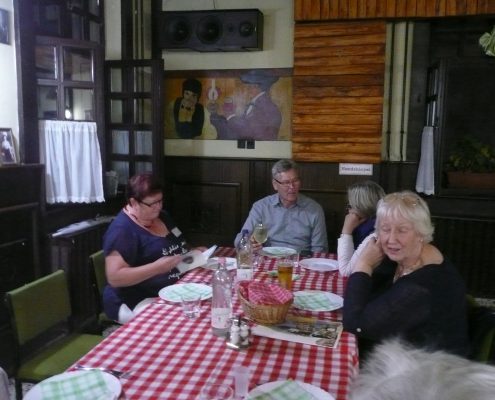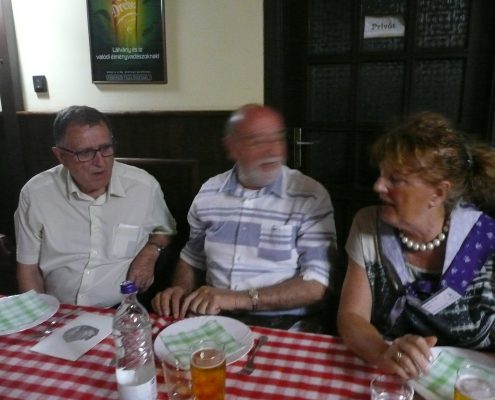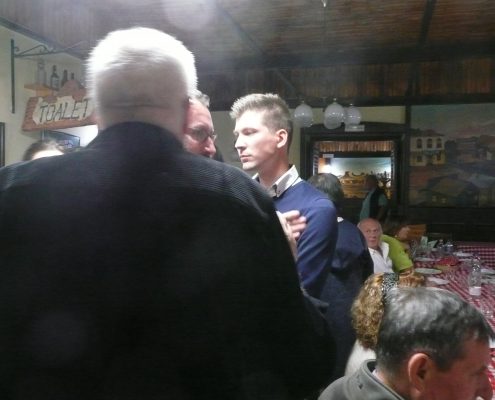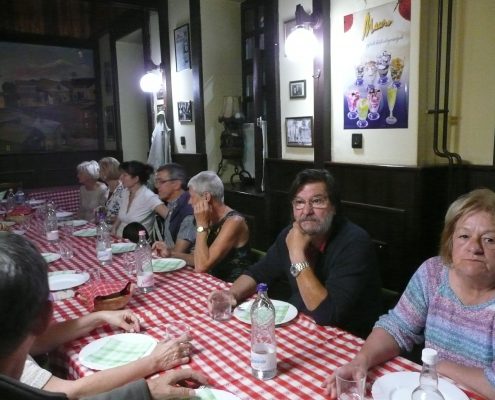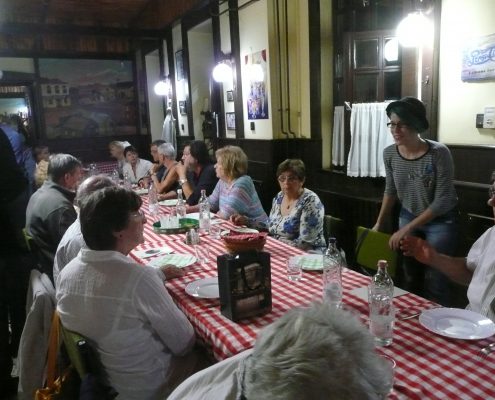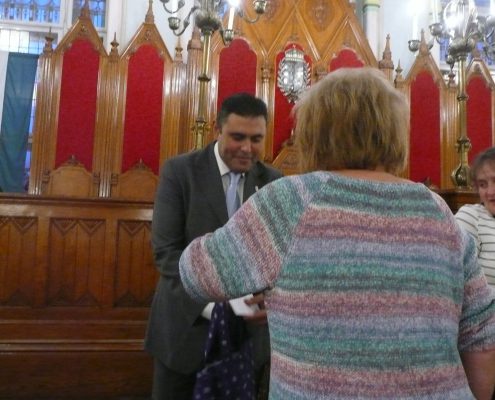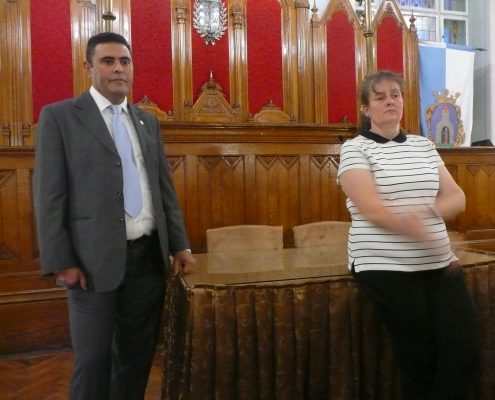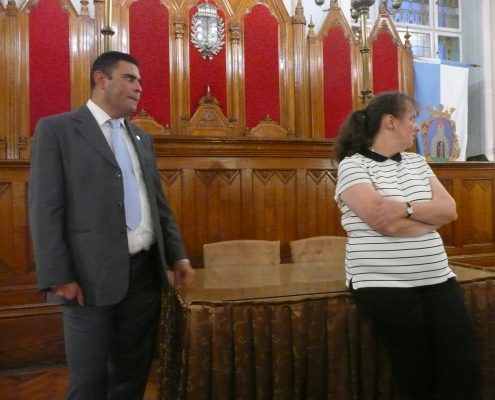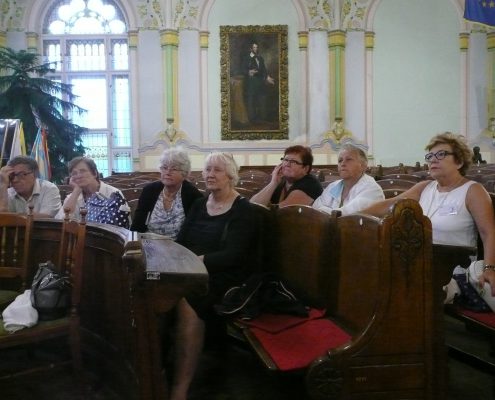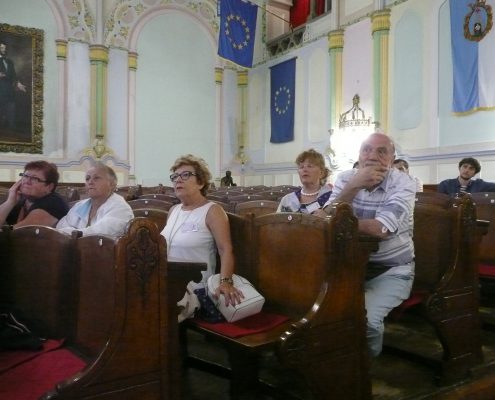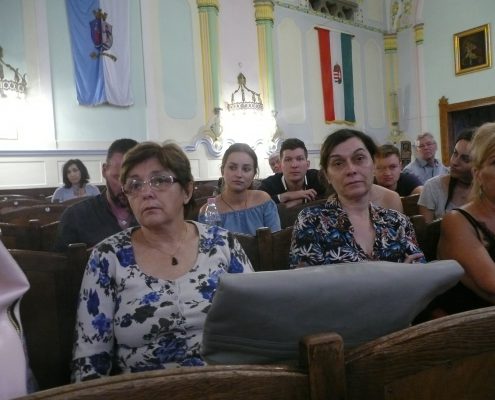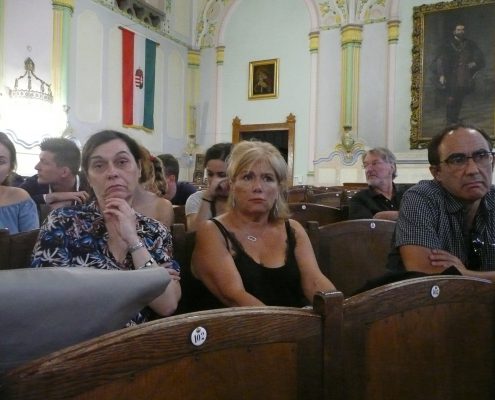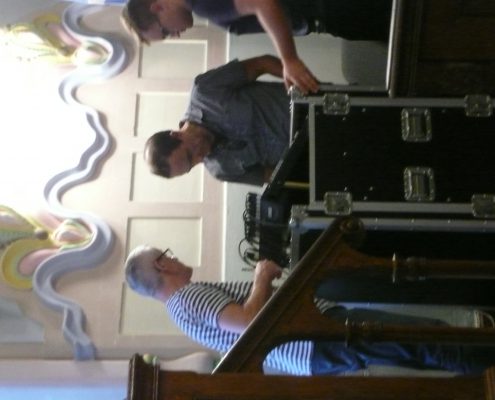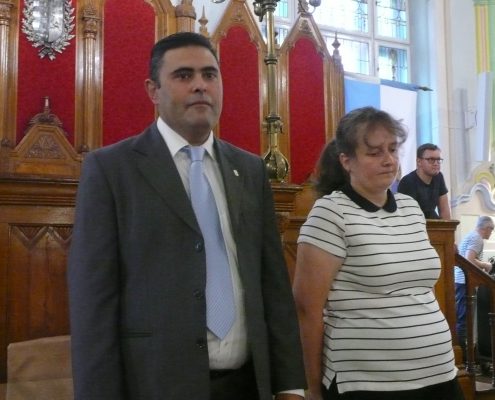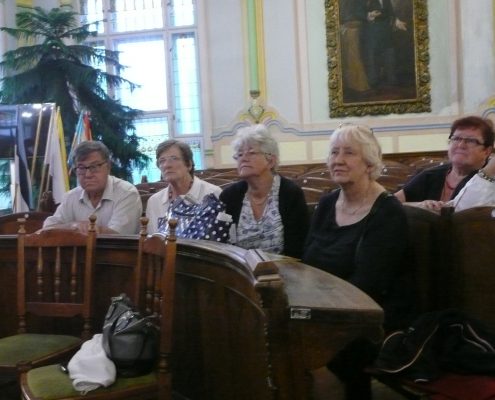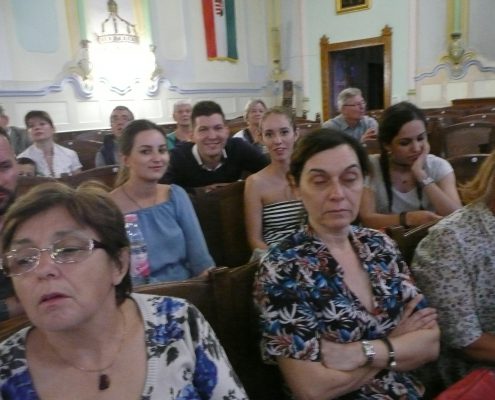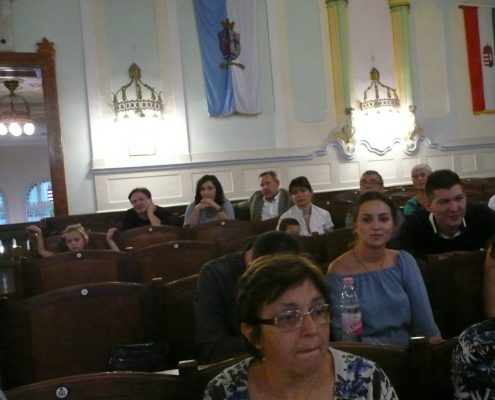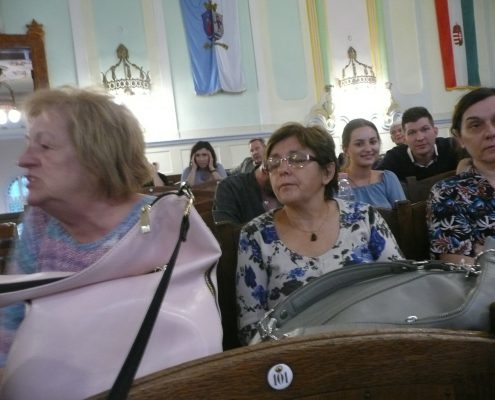Migrációs Projekt
Migrációs Projekt
Az újonnan érkezettek európai polgárok?
Kiskunfélegyháza 2017. szeptember 06.-10.
Az idegen gyűlölet elleni célravezető megoldások
Az Európai Unió által támogatott rendezvénysorozat
A rendezvény fő célja, hogy bemutassa az ország és benne városunk az általánostól eltérő helyzetét. A korábbi évtizedekben-Európa kapujaként -, sok menekült lépte át a határt. Oroszország, Románia, Szerbia felől a diktatúra és a genocidium miatt, ezrek kértek és kaptak menedéket.
A prezentációkon és személyes találkozókon keresztül megismerhették a vendégek és helybeliek, hogyan és mit tett az állam a segélyszervezetekkel együttműködve. Láthatták, hogyan találták meg az újonnan érkezettek otthonukat, illetve erőt gyűjthettek az induláshoz végleges úticéljuk felé. Napjainkban a magyar egyetemeken sok külföldi diák tanul, akikkel külön egyetemi szervezet foglalkozik. Ők egy közös nyelv használatával (angolul) kommunikálnak.
Az idősebbek közül sokan különböző munkahelyeken dolgoznak, jelentős részük anyanyelve magyar (Románia, Szerbia).
Az önkéntesek, diákok és segélyszervezetek tagjai közelről ismerhették és tanulhatták meg a segítségnyújtás és az elfogadás, a tolarencia érzését és lényegét.
A találkozó jelentős eredménye az itteni körülmények és munka bemutatása, a város lakóinak széleskörű informálása.
Network project
2016 – 2018
¿Los recién llegados son ciudadanos europeos ?
Est-ce que les nouveaux arrivés sont des citoyens européens?
Are newcomers European citizens?
Exchange of best practices to combat xenophobia
Kiskunfélegyháza, 06th – 10th September 2017
The main aim of the event is to show the situation of Hungary and our town which is different from the average one. In the earlier decades as the gateway to Europe lots of refugees from Russia,Romania and Serbia crossed the border of Hungary because of the dictatorship or genocidium, thousands of people asked for and got refuge.
With the help of the different presentations and personal meetings the guests and the local people could get to know what the government working closely together with the relief organizations could do. It was demonstrated how the newcomers could find their homes or they could get prepared for the journey to find their final destinations. Nowadays in the Hungarian universities there are a lot of foreign students who are supervised by a separate organization of the university. They communicate with each other in a common language that is in English.
Most of the older ones work in different workplaces, the native language of most of them is Hungarian ( Romania,Serbia).
The volunteers, the students and the members of the relief organizations could see and experience directly the meaning of aid giving, acceptance and tolerance.
The most important result of the meeting is the presentation of the local work and conditions and giving information to a wide range of local people.
Testvérvárosi Egyesület Kiskunfélegyháza
Final report
Are newcomers European citizens?
Final report
- Event 1: Carcaixent.- Initial evaluation.
- Event 2: Feltre.- Social and demographic impact of migration
- Event 3: Eeklo.- Good practices in integration policies and initiatives
- Event 4: Braunfels.- Refugees: A new challenge for the EU (yes)
- Event 5: Kiskunfelegyhaza.- Refugees: Exchange of best practices to combat xenophobia
- Event 6: Carcaixent.- Immigration and integration: two challenges for Europe in the twenty-first century.
- Event 7: Newbury.- Integration policies with children and young people
- Event 8: Bagnols.- Integration or cultural crash?
- Event 9: Zamosc.- Final evaluation
|
The project «Are newcomers European citizens?» was funded with the support of the European Union under the Programme “Europe for Citizens” |
|
Strand 2 – Measure 2.2 “Networks of Towns” |
|
9 events have been carried out within this project: |
|
Event 1.- Initial evaluation Participation: The event involved 40 citizens, including:
Location / Dates: The event took place in Carcaixent (Spain) from 21/07/2016 to 24/07/2016 Short description: The aim of the event was:
|
|
Commune/Municipality Website link: http://www.carcaixent.es/va/general/page/informe-amac-projecte-nouvinguts-ciutadans-europeus |
More links:
|
|
Event 2.- Social and demographic impact of migration Participation: The event involved 200 citizens, including:
Location / Dates: The event took place in Feltre (Italy) from 04/08/2016 to 08/08/2016 Short description: The aim of the event was the deepening of the migrations of peoples. A first Conference (History of migrations) permitted to address the topic of the migrations and immigrations from a historical point of view, with a focus on the twin cities involved in the project; the Conference has allowed us to provide participants with a knowledge of the past, even recently, indispensable to face the new concurrent migrations. A second Conference (The social and demographic impact of the migrations) has allowed us to understand what the real impact of today’s immigrants in the twin cities in particular, in order to help the necessary and fundamental process of integration; among the speakers, especially important the role played by monsignor Gian Carlo Perego, then Director of the “Fondazione Migrantes” and now Archbishop of Ferrara-Comacchio. The theme was also addressed through the visit to two museums: the Ethnographic Museum of the Belluno Province in Seravella of Cesiomaggiore and the Interactive Museum of migrations of Belluno. The presence at the meeting of the Italian MEP Isabella De Monte has allowed us to start a confrontation even on the Treaty of Dublin. During the meeting also celebrated the official twinning between Feltre and Carcaixent, strengthening a fraternity more than thirty years. |
|
Commune/Municipality Website link: http://www.comune.feltre.bl.it/web/feltre |
More links:
|
|
Event 3.- Good practices in integration policies and initiatives Participation: The event involved 268 citizens, including:
Location / Dates: The event took place in Eeklo (Belgium) from 23/02/2017 to 27/02/2017 Short description: The aim of the event was: Firstly, to give an introduction and overview to the participants about Belgian and local government policies in relation to refugees and migrants. Secondly, the event focused on the integration part of the migration and refugee situation. At the first day a conference was held with an introductory presentation about the migration and refugee policy in Belgium given by Mr. Vincent Van Peteghem, a member of the Federal Parliament in Belgium. The presentation was followed by a panel debate, with participants representing the Flemish Public Employment Service, the local Public Social Welfare Centre and a local social organisation working with poor people and often also foreigners. The purpose of the debate was to learn more about the specific and daily issues and problems with which those organisations have to deal with. But the opposite was also the case with examples of success stories and policies to help integrate migrants and refugees. Language and skills are very important but also the willingness to learn more, a good social network and help to overcome the first bottlenecks (search for a job, search for a house, introduction to a social network) are very important. Policies can be general by nature and structure but in practice they need to be Taylorized and used in a case-by-case manner. In the afternoon visits were made to companies and the hospital (AZ Alma) in Eeklo were employers or representatives of the company told more about the company policy towards migrants and non-Dutch speakers and gave real life stories about working with people with a migration or refugee background. The second day started with a presentation by Mr. Koen Loete, the Mayor of Eeklo. Mr. Loete explained how local migration and refugee policies work and he gave examples of which services were provided towards refugees and migrants by the town services and social services. Eeklo also has a civil servant who is responsible for integration to help people with all kind of daily problems and issues. The presentation was followed by some testimonies by migrants living in Eeklo. We also asked a Belgian woman to testify about her story because she lived for many years outside Belgium and she just (at the moment of the event) returned back to Belgium. In the afternoon a visit was made to Ghent, with a guided tour in the old migrant neighbourhood of Ghent (environment of railway station Ghent-Dampoort which was the industrial centre of the 19th century in Ghent). On the third day, a visit was made to the refugee reception centre of the Red Cross in Eeklo. The centre opened in 2002 and gives place to 109 residents. It gives shelter to families, singles and unaccompanied minors. Representatives of the Red Cross and residents gave a guided tour throughout the centre and gave insight in the daily working of the centre and the common rules and rights. Together with the Red Cross centre we organised a ‘drink and meet’ in the centre between the participants and the residents of the centre. The committee for international cooperation (CIS Eeklo) also organised a school competition in which pupils were asked to make a drawing about what they understand about migration and refugees. The drawings were presented to the participants via a photo exhibition. |
| Commune/Municipality Website link: |
More links:
https://werkgevers.vdab.be/werkgevers/integratie-door-werk
https://www.ocmweeklo.be/index.php/sociale-dienst-mainmenu-39/wie-is-wie-mainmenu-40
http://www.wijkcentrumdekring.be/ http://www.wijkcentrumdekring.be/wp-content/uploads/2016/08/TAALKABAAL-flyer-najaar-2016.pdf |
|
Event 4.- Refugees: A new challenge for the EU (yes) Participation: The event involved 124 citizens, including:
Location / Dates: The event took place in Braunfels (Germany) from 01/06/2017 to 05/06/2017 Short description: The aim of the event was: Since the end of the Second World War Germany has been a country of immigration. – In 1946 already came 14 million people from former German areas in East Europe like Czechoslovakia or Poland – In the seventies came guest workers from Italy, Spain,Turkey, and Yugoslavia – They all started integration and to achieve this the German people had to feel themselves into the life of the refugees. – after the German reunification real Russian people of German origin had to be welcomed in Germany – We explained all the situation with the help of workshops. – One day we had three parallel workshops with eye witnesses about the Russian people, the West European people, and the Sudeten German people. – We made an excursion to the Hessenpark in Neu Anspach where the guests learnt about old ethnic peculiarities and where they saw an original train waggon taking people from Czechoslovakia to West Germany. the last thing impressed the guests very much. – In a ceremonial act the towns of Carcaixent and Braunfels twinned after they have got to know each other for almost thirty years. |
| Commune/Municipality Website link: |
More links:
|
|
Event 5.- Refugees: Exchange of best practices to combat xenophobia Participation: The event involved 93 citizens, including:
Location / Dates: The event took place in Kiskunfélegyháza(Hungary) from 06/09/2017 to 10/09/2017 Short description: The main aim of the event is to show the situation of Hungary and our town which is different from the average one. In the earlier decades as the gateway to Europe lots of refugees from Russia,Romania and Serbia crossed the border of Hungary because of the dictatorship or genocidium, thousands of people asked for and got refuge. With the help of the different presentations and personal meetings the guests and the local people could get to know what the government working closely together with the relief organizations could do. It was demonstrated how the newcomers could find their homes or they could get prepared for the journey to find their final destinations. Nowadays in the Hungarian universities there are a lot of foreign students who are supervised by a separate organization of the university. They communicate with each other in a common language that is in English. Most of the older ones work in different workplaces, the native language of most of them is Hungarian ( Romania,Serbia). The volunteers, the students and the members of the relief organizations could see and experience directly the meaning of aid giving, acceptance and tolerance. The most important result of the meeting is the presentation of the local work and conditions and giving information to a wide range of local people. |
|
Commune/Municipality Website link: https://kiskunfelegyhaza.hu/europai-unios-projektek/migracios-projekt/ |
|
|
Event 6.- Immigration and integration: two challenges for Europe in the twenty-first century. Participation: The event involved 200 citizens, including:
Location / Dates: The event took place in Carcaixent (Spain) from 01/11/2017 to 05/11/2017 Short description: The aim of the event was:
|
|
Commune/Municipality Website link: http://www.carcaixent.es/va/general/page/informe-amac-projecte-nouvinguts-ciutadans-europeus |
|
|
Event 7.- Integration policies with children and young people Participation: The event involved 135 citizens, including:
Location / Dates: The event took place in Newbury (United Kingdom ) from 29/03/2018 to 02/04/2018 Short description: The aim of the event was:
|
| Commune/Municipality Website link: |
|
|
Event 8.- Integration or cultural crash? Participation: The event involved 343 citizens, including:
Location / Dates: The event took place in Bagnols-sur-Céze (France ) from 09/05/2018 to 13/05/2018 Short description The aim of the event was:
|
|
Commune/Municipality Website link: https://www.bagnolssurceze.fr/fr/culture/jumelages.htm |
|
More links:
|
|
Event 9.- Final evaluation Participation: The event involved 231 citizens, including:
Location / Dates: The event took place in Zamosc (Poland ) from 12/07/2018 to 15/07/2018 Short description: The main aim of the event was to evaluate the project activities and their impact on the project participants and the local communities. The main tool of assessment was a questionnaire produced by a member of the Polish group which was completed by members of all the committees and sent for analysis before the meeting. The results of the questionnaire were presented to all the participants by its author who demonstrated that there were different attitudes towards foreigners depending on the country and age of the respondents. It also turned out that there was a positive correlation between the fact of participating in the project and the attitudes of the involved persons. The results were discussed by the participants who also were free to express their personal opinions on the project and its topics. Apart from evaluation, the meeting also had a wide informative and educational function. It was done through lectures given by local historians (3 speakers), meetings with political and local government figures and visits to places related to the area’s multiethnic past. The topics presented during the lectures included the changing ethnic structure of the local population in the town’s history, the destructive effects of World War Two and present day economic and political immigration from the ex-Soviet territories, especially Ukraine. The speakers who addressed the meeting included the mayor of Zamosc, who talked about the economic and political aspects of immigration and emigration from the region as well as two members of the Polish parliament who represented opposing political parties and presented their points of view on the question of immigration at a more general level. The members of the audience asked questions and voiced their opinions which made the meeting very productive. The participants were also met by the head of a local higher education college who talked about foreign students studying in Zamosc. His talk was complemented by a talk by an Ukrainian student who is currently studying in Zamosc. There was also a meeting with a few foreign workers most of whom were youth volunteers from Azerbaijan, Ukraine and Hungary who talked about their experiences as foreigners living in Poland. The meeting was reported on the website of the city office and on local television which was an efficient way of dissemination. Apart from the members of the hosting organisation and the hosting families, there was a big number of local inhabitants who were informed about the project in detail through direct talks and leaflets produced by the organisers. The activities which involved members of the local community and helped disseminate the project included opening of an exhibition on Zamosc cultural heritage, opening of an exhibition of works by Tamas Szuts (head of the Hungarian team), visit to a local WW2 resistance museum and a visit to the Nazi Death Camp Memorial Site at Belzec. |
| Commune/Municipality Website link: |
More links:
|
Testvérvárosi találkozó 2017. szeptember 6-10 a kiskunfélegyházi Testvérvárosi Egyesület szervezésében
Meghívottak: Bagnols sur Cèze, Braunfels, Carcaixent, Die, Eeklo, Feltre, Newbury, Zamosc városok polgárai, testvérvárosok egyesületének tagjai. Elszállásolásuk családoknál történik
2017. 09. 06. /szerda/ 18h. – a vendégek érkezése, fogadás- Csányi J. pogácsa, pálinka, ásványvíz, díszítés: a csoportom,
Vacsora a vendéglátó családoknál
Naponta reggeli szintén a fogadó családoknál
2017. 09. 07. /csütörtök/
Helyszín: Művelődési Központ kávé, pogácsa, víz, gimnazisták (6)
Képek a menekültekről / Szűts Tamás/
Időpont: 9h.
1,A Magyar Máltai Szeretetszolgálat a déli határon (Szűts Tamás)
2.…………………………………………. szír származású gyógyszerész mesél életéről, családjáról.
3, Die-ből érkező vendégek beszélnek a városukban megalakult egyesületről, amelynek célja a menedéket kérők támogatása, beilleszkedésük segítése.
Kérdések, kötetlen beszélgetés
12h. 30 Chaplin: „The immigrant „c. film megtekintése- kb.25 perc
Ebéd: 13-14.30h. Ebédszünet, Desperado Étterem
14.30-15.30 fakultatív városnézés Mészáros Márta vezetésével
16h. Kiállítás megnyitója a Szakmaköziben: Két lengyel festő Zamoscból. A kiállítást megnyitja, és az alkotókkal beszélget Rátkai Zsuzsa a Holló kör vezetője
17h. órakor az aulában kékfestő kiállítás megnyitója
18h. indulás Kunszállásra,
18h. 30 óramúzeum/ Tájház két csoportban
Vacsora a Pál Vendéglőben./ gulyásleves, 2 palacsinta, ital/- autóbusz rendelés
2017. 09. 08. /péntek/
8h. Autóbusszal utazás Szegedre-autóbusz rendelés, ásványvíz, gyümölcs
10h. A Dugonics téri Központi Egyetem épületében Csányi Judit bemutatja a jelenlegi helyzetet, egy hölgy pedig saját tapasztalatairól beszél a Migszol önkénteseként.
/ valószínűleg itt tanuló diákokkal is találkozhatunk.
Az előadók örömmel válaszolnak a hallgatóság kérdéseire.
Ebéd: szendvics (húsos/sajtos, ásványvíz)
Délután Pick Szalámi és Paprika Múzeum, belépő 990.- Ft majd városnézés max. 1 óra/ idegenvezetés több nyelven
20h 30 vacsora: a Desperado Étteremben a fogadó családoknak is- táncház, népzene
2017. 09. 09. /szombat/
Reggel piac, majd bekapcsolódás a Libafesztivál programjaiba- a programot lefordítjuk
10h. Kiskun Múzeum: Szűts Tamás kiállításának megnyitója-„Még csak 65”, Megnyitja Csányi József Polgármester
10h. 45 Libafesztivál megnyitója
11-12h. A német-magyar testvérvárosi kapcsolat megerősítése
Ebéd: 12h. 30-Desperado étterem
Kulturális programok, libabusz, néptánc fesztivál
15.00- 18.00 Megbeszélés a Testvérvárosi képviselők részére Műv Központ
Vacsora: 19h. a Desperado étteremben
2017. 09. 10. /vasárnap/
A vendégek elutazása
———————————————————————————-
Ajándék: kékfestő szatyor, sál, mappa, jegyzettömb, toll, kitűző, Kiskunfélegyháza/ Szeged térképe, bögre
Invitation and Programme
Exchange of best practices to combat xenophobia
Kiskunfélegyháza 09.06.-10. 2017
Day 1: 06/09/2017 Wednesday, Welcome participiants
Arrival and welcome participiants, meeting with host families
Day 2: 07/09/2017 Thursday, Reflection Forum
Breakfast with host families/ at accomodations
Place: Community Center Móra Ferenc
09.00 „From home back to my land”riport with Árpád Nagy, priest of reformated church
11.00-13.00 Meeting for representatives and citizens of Kiskunfélegyháza
12.30 Movie, Charlie Chaplin: „The Immigrant”
13.00- 14.30 Lunch, Desperado Restaurant
14,30 – 15.30 Sightseeing walk int he city center, optional programme,
Leader Mrs Márta Mészáros directory of Kiskun Museum, meeting place before the Restaurant
16.00 Pictures from Zamosc, painting exhibition’s opening at the”Szakmaközi” Culture house
18.00 Blue Painted cloths exhibition opening int he Móra Culture House
18.00 Leave for Kunszállás by bus
18.30 Visit in two groups, Watch Museum, and The House of Traditions
20.00 Supper at „Pál” Restaurant in Kunszállás Menu: Gulyás soup, and two filled pancakes
Day 3: 08/09/2017 Friday, Szeged, meeting with the social workers and migrants
Breakfast with the host families
08.00 Travel to Szeged by bus (mineral water, appleon the bus)
10.00 Szeged University, Preseentation about the work with migrants , exoeriences
12.00 Lunch (sandwiches- with meat or cheese, mineral water)
Sightseeing walk in Szeged centrewith guides( English, French, German) about 1.5 hours
Pick Salami and Paprika Museum
Free time –about an hour-, in the heart of city
19.00 Leave for Kiskunfélegyháza
20.00 Desperado;Dinner, together with the host families, then dance house (teaching dances)
Day 4: 08/09/2017 Saturday, Goose Festival and Ceremony 25th Anniversary of Twining between Braunfels and Kiskunfélegyháza
Breakfast with the host families
Market, vegetables and fruits
10.00 Kiskun Múzeum, „Only just 65” vernissage,
Szúts Tamás independent exhibition open it: Mr. József Csányi mayor
10.45 Opening ceremony of „The Goose Festival”
11.00 Ceremonical confirming of the Twining Document between Braunfels and Kiskunfélegyháza on the 25th Anniversary
12.30 Lunch at Desperado Restaurant
Cultural programmes, visit on goose farm, dance festival
18.00 Meeting with a migranr from Siria, Mayor office, Ceremonial Hall
19.00 Dinner, Desperado Restaurant
Day 5: 10/09/2017 Sunday, Farewell
Travelling home of the guests
Press links / Sajtó linkek
http://www.infokiskunfelegyhaza.hu/hirek/olvas/szuts-tamas-tobb-mint-egy-muvesz-2017-09-10-090000
Confirmation of Twinig with Braunfels:
http://www.infokiskunfelegyhaza.hu/hirek/olvas/megerositettuk-25-evre-visszatekinto-testvervarosi-kapcsolatunkat-2017-09-10-100000
Kiállítás/Exhibition of Polish artists
http://www.infokiskunfelegyhaza.hu/kepek/lista/a-muveszet-nyelvet-minden-alkoto-megerti-2017-09-07
Arrived the guests from twin towns:
http://www.infokiskunfelegyhaza.hu/hirek/olvas/megerkeztek-testver-telepuleseinkrol-vendegeink-a-libafesztivalra-2017-09-07-125536
Soon will arrive our guests:
http://www.infokiskunfelegyhaza.hu/hirek/olvas/hamarosan-megerkeznek-testvervarosaink-kuldottjei-2017-09-05-144238
Only just 65… Szűts Tamás’ exhibition:
http://felegyhazikozlony.eu/sa_hirek/i_kultura_5/i_meg_csak_65_12915/t_Kult%C3%BAra%20-%20M%C3%A9g%20csak%2065%E2%80%A6/index.html
Festival pictures:
http://felegyhazikozlony.eu/sa_hirek/i_helyi_hirek_2/i_fesztivali_pillanatkepek_12901/t_Helyi%20h%C3%ADrek%20-%20Fesztiv%C3%A1li%20pillanatk%C3%A9pek/index.html
http://www.infokiskunfelegyhaza.hu/hirek/olvas/ki-mit-fozott-a-libabol-2017-09-09-120000

